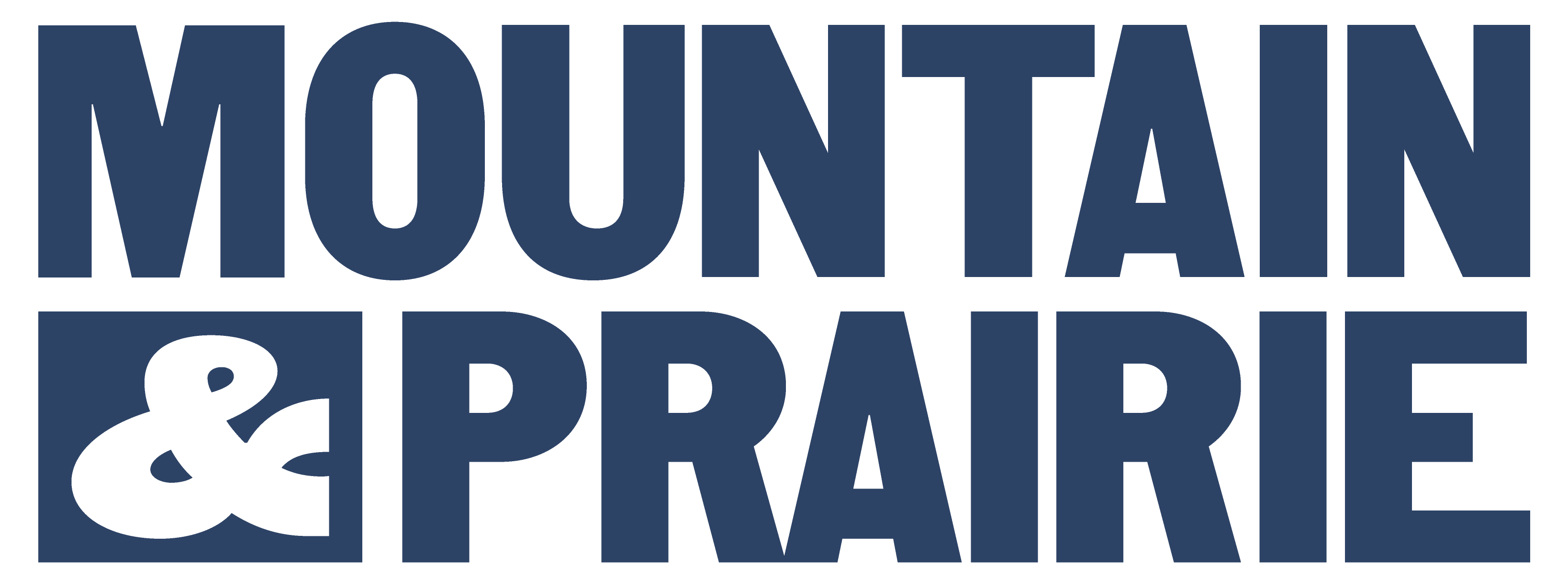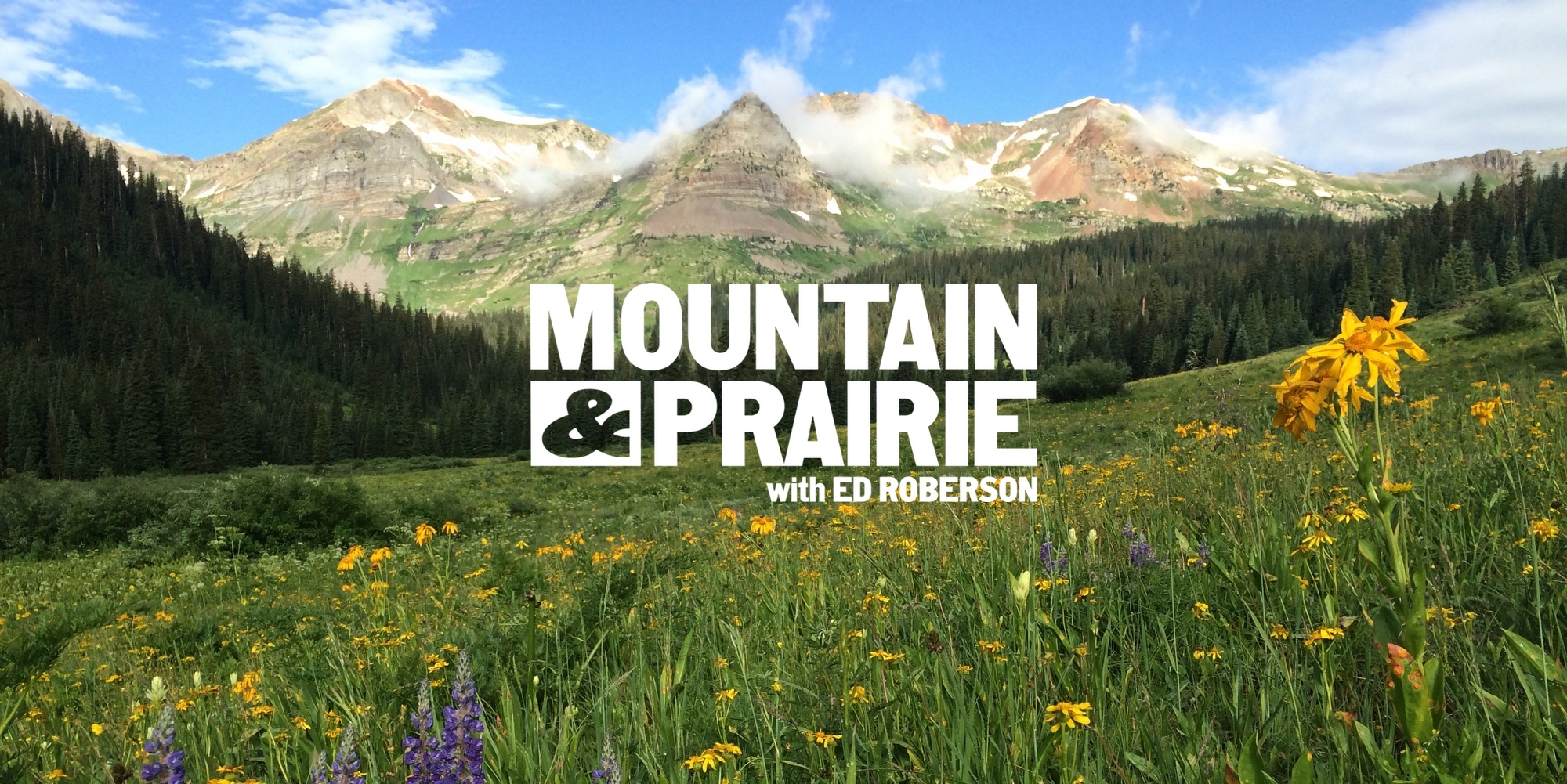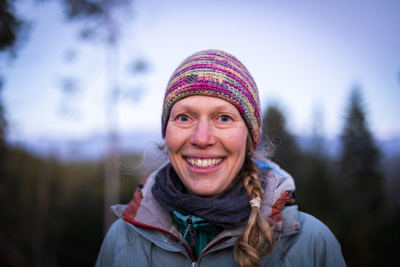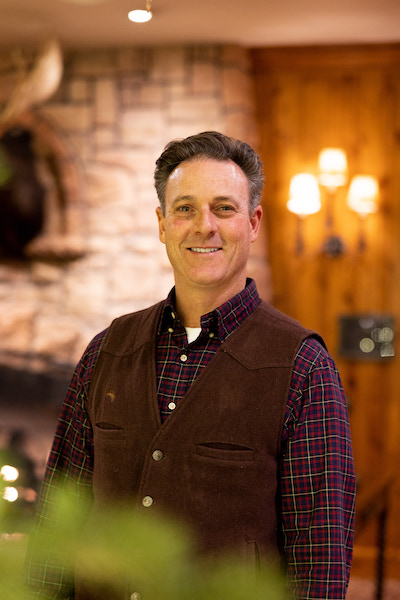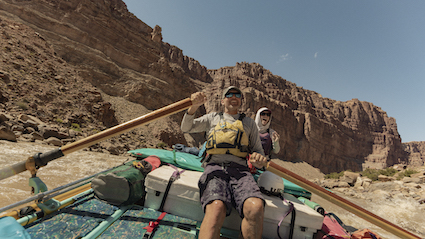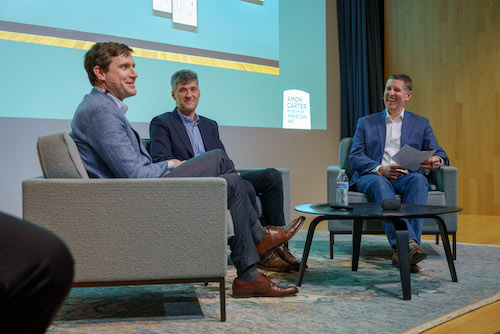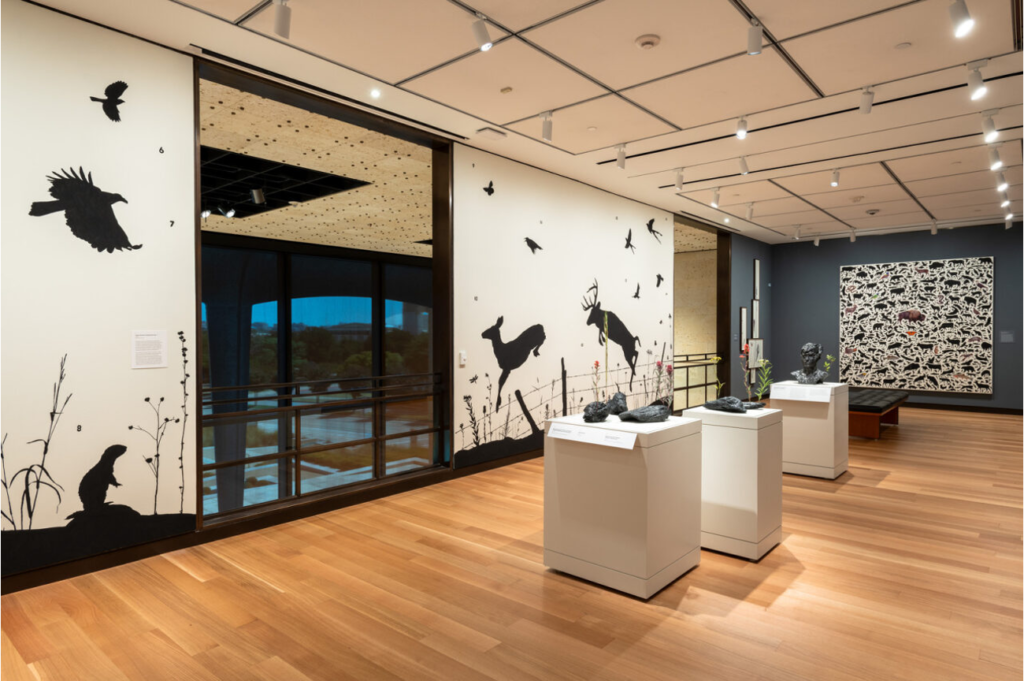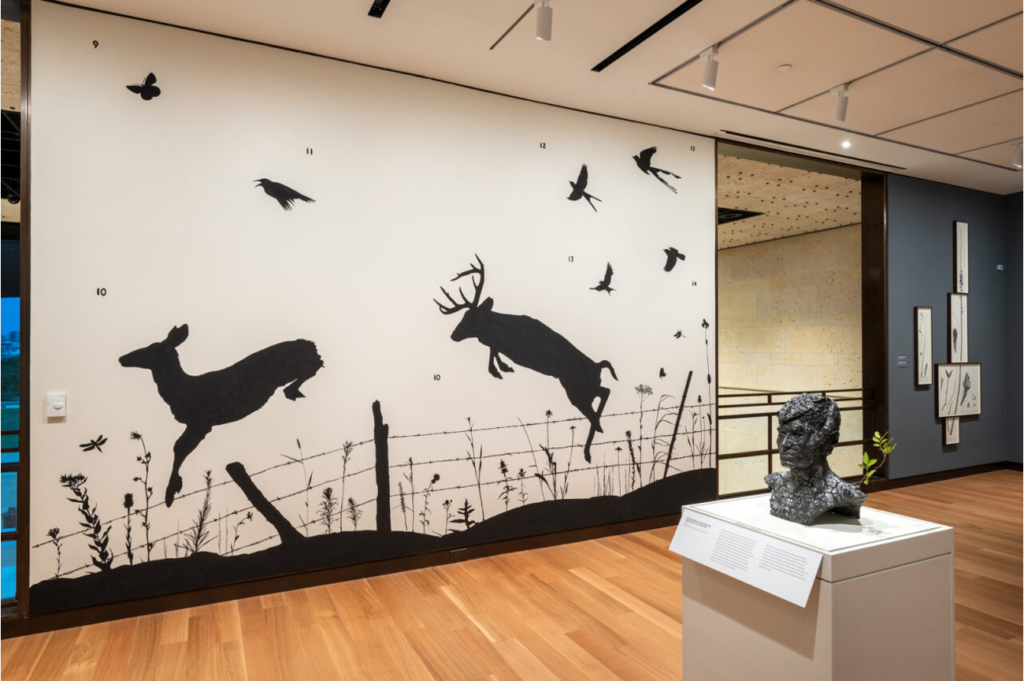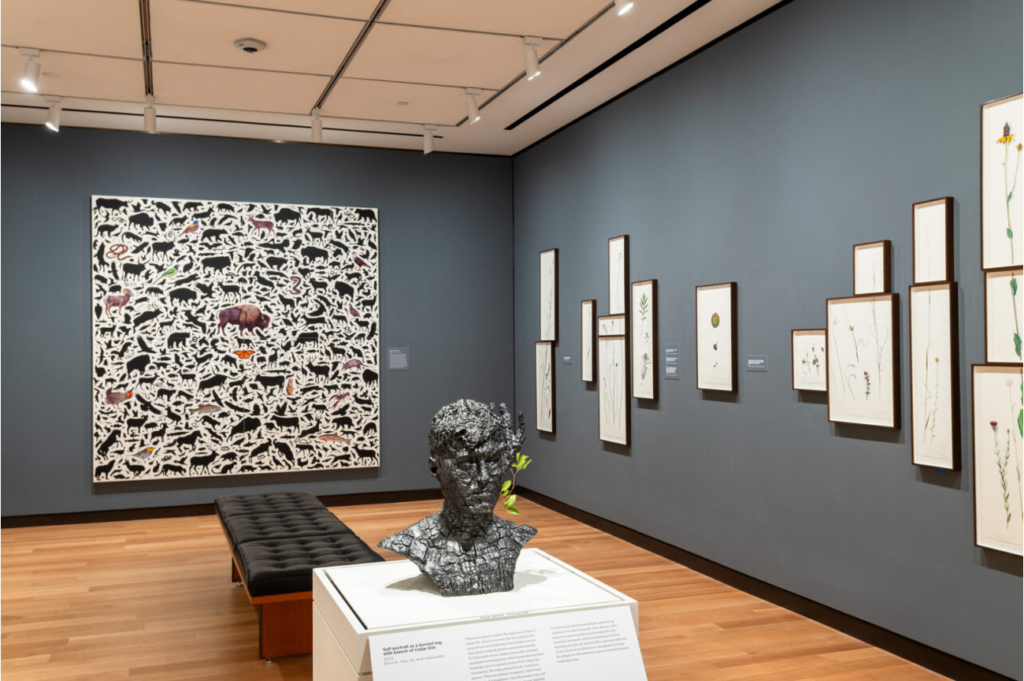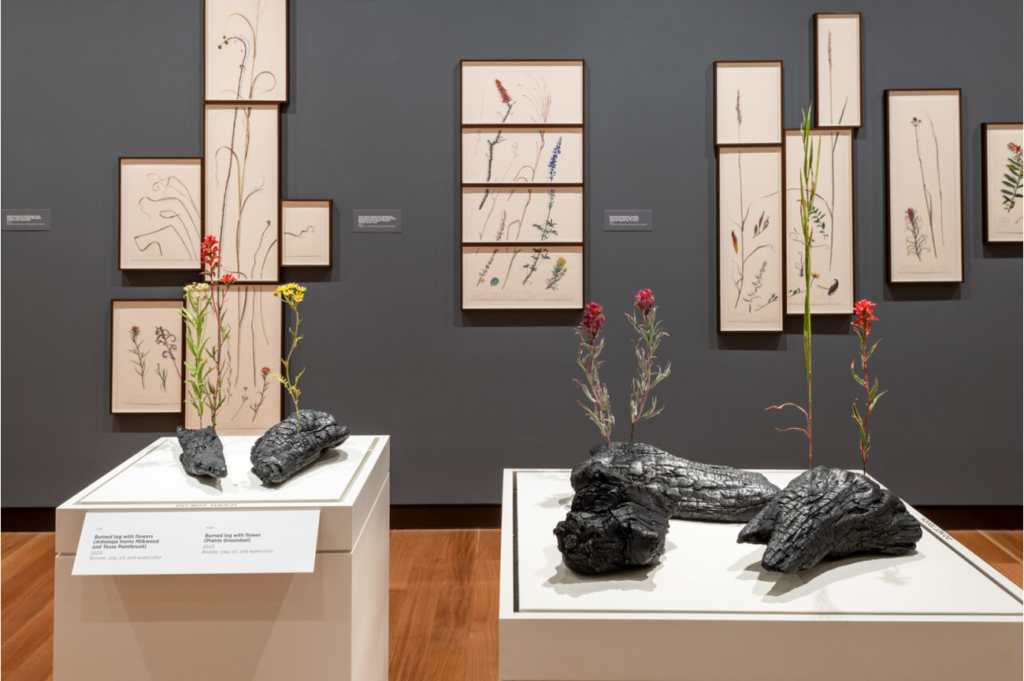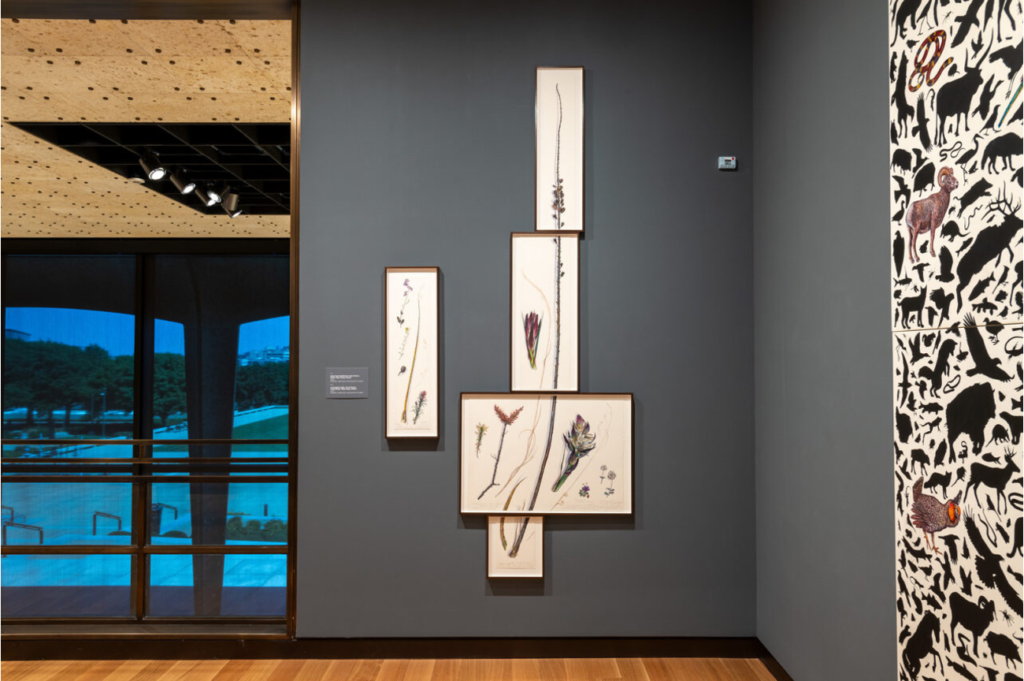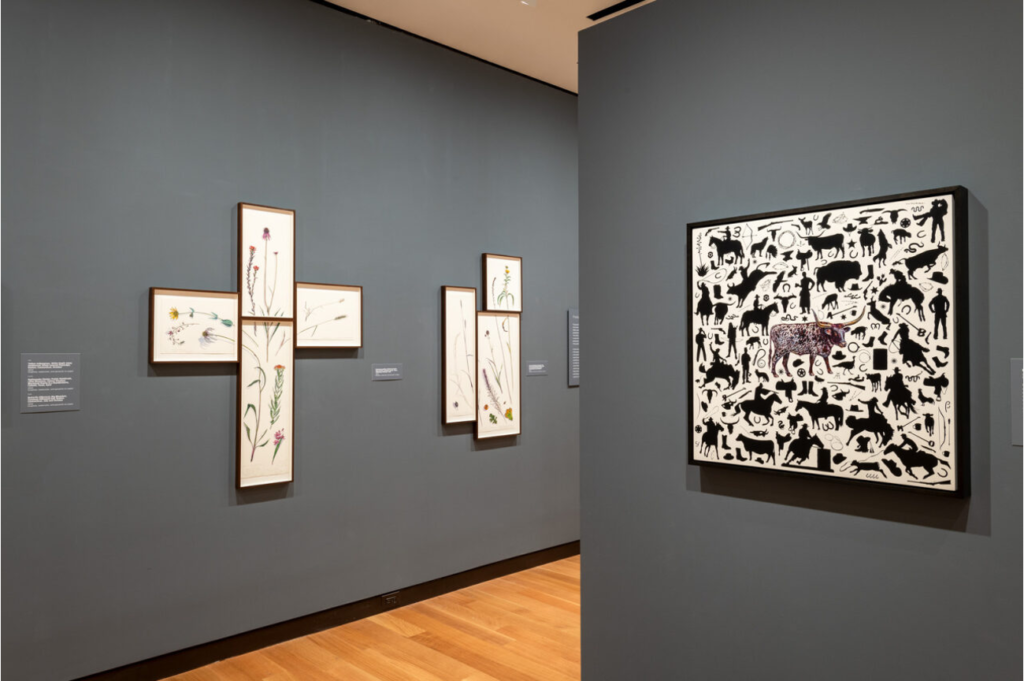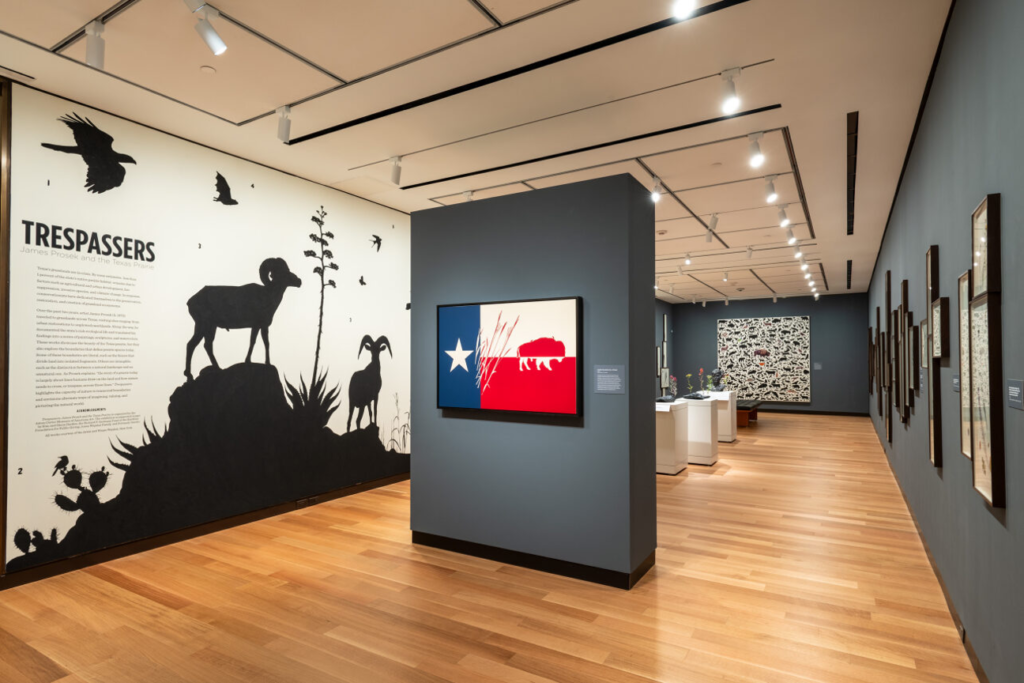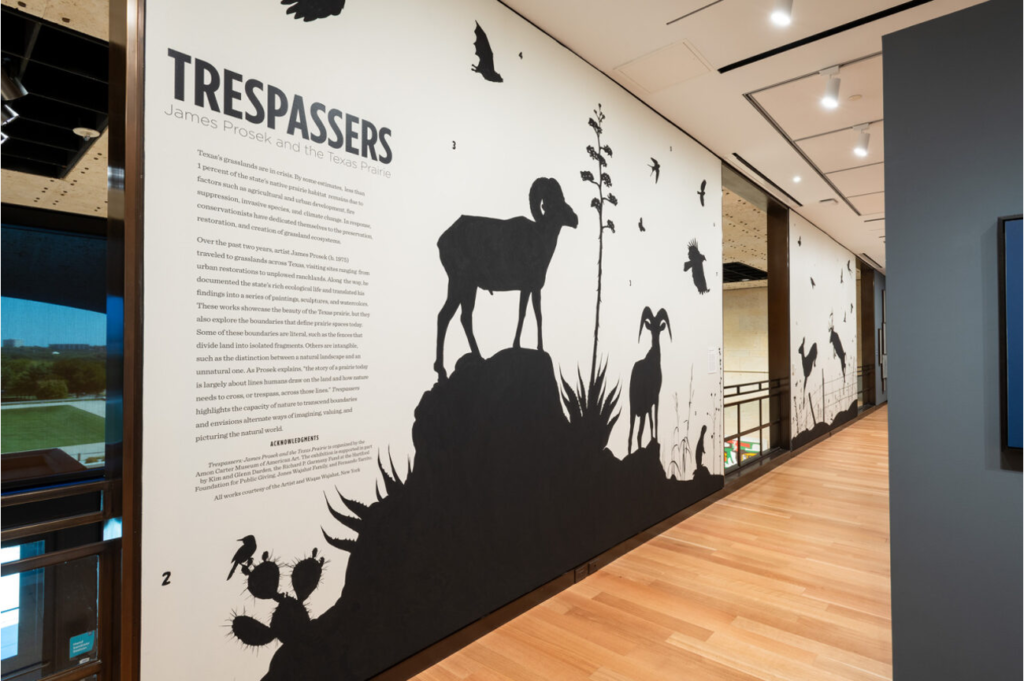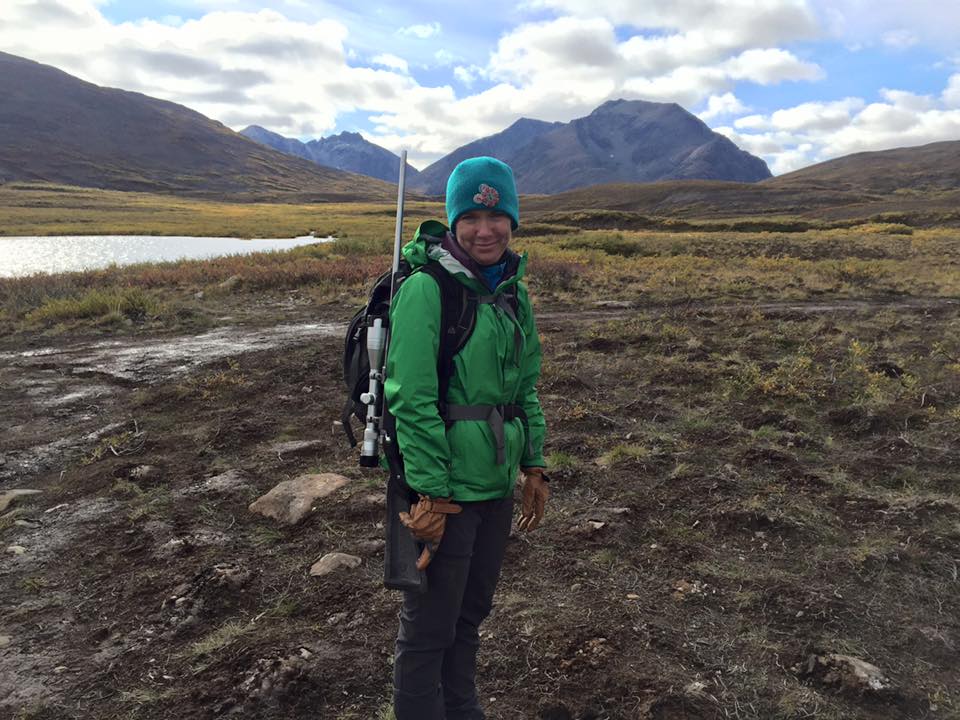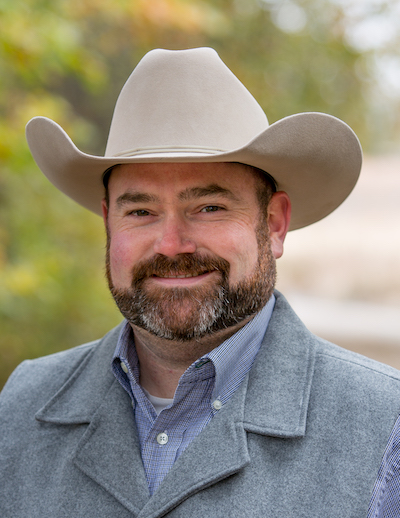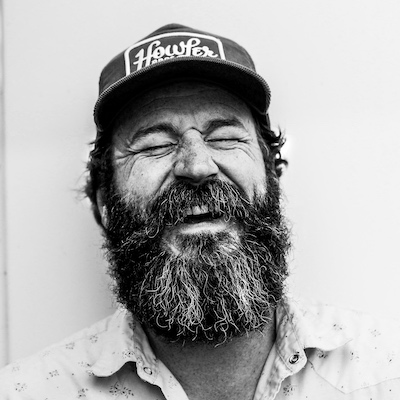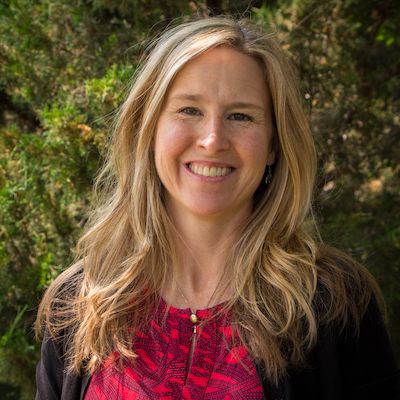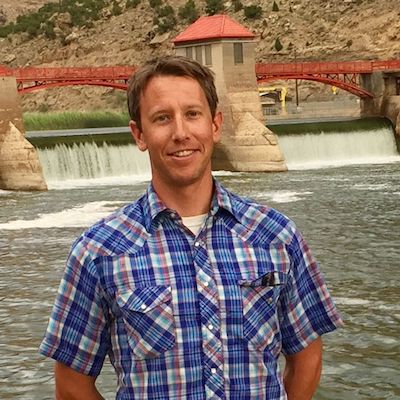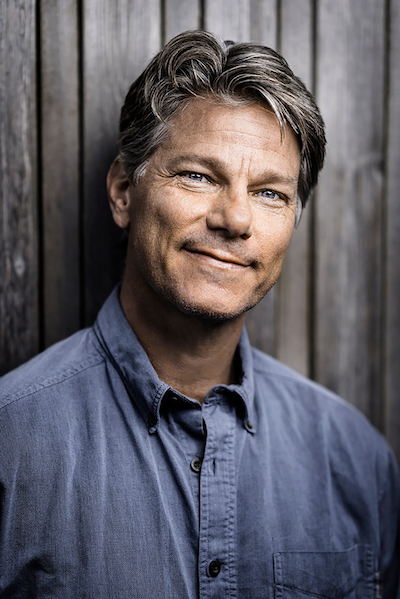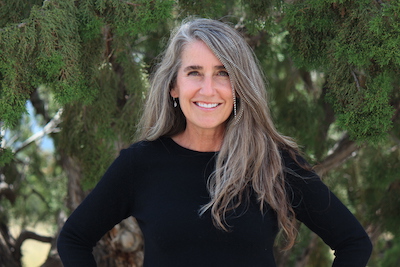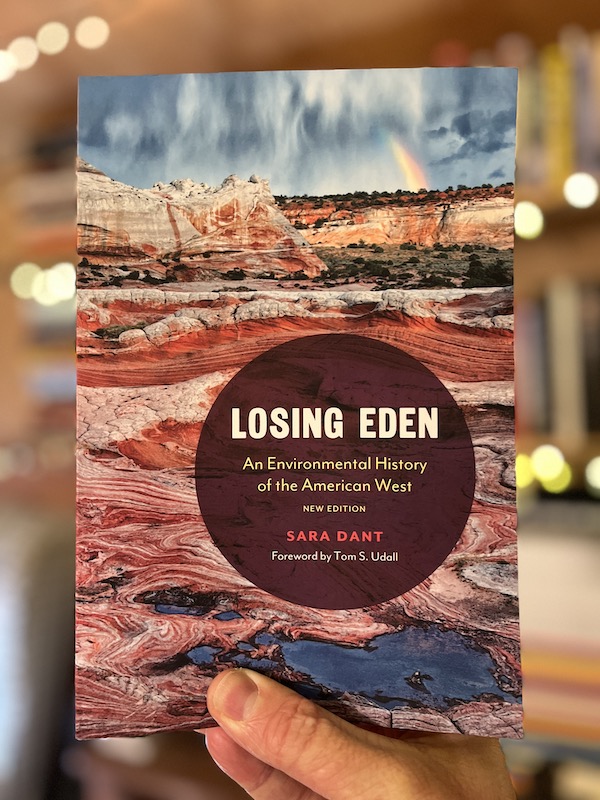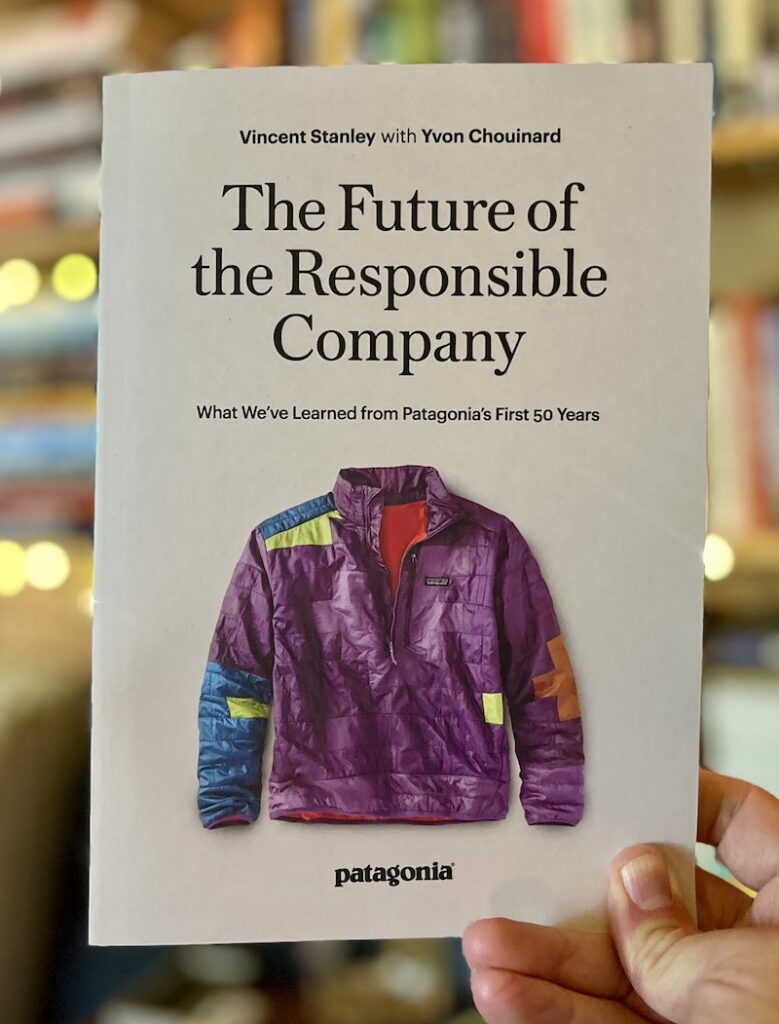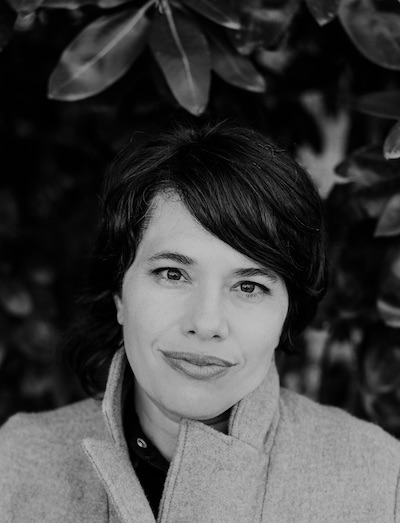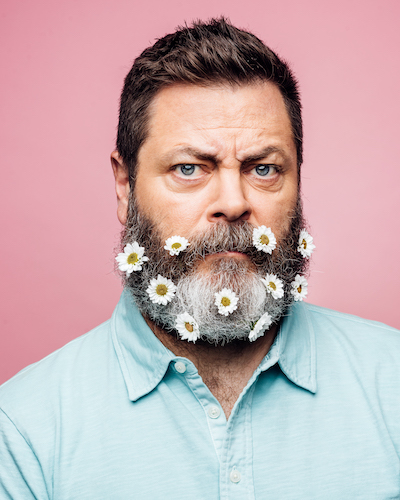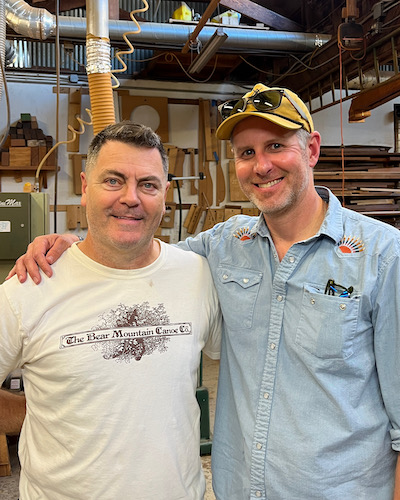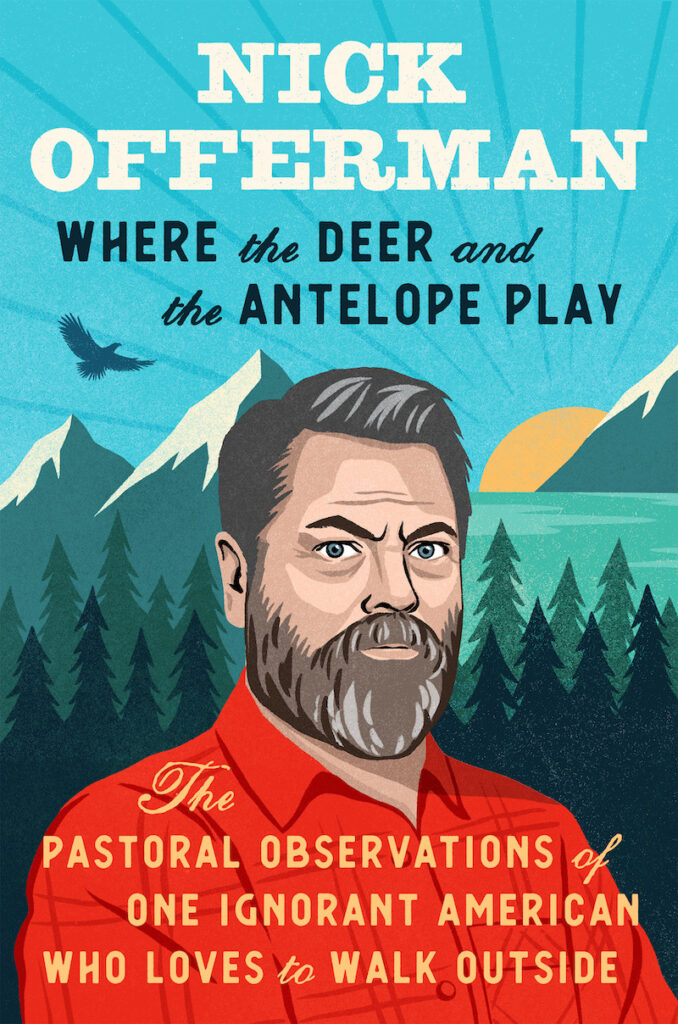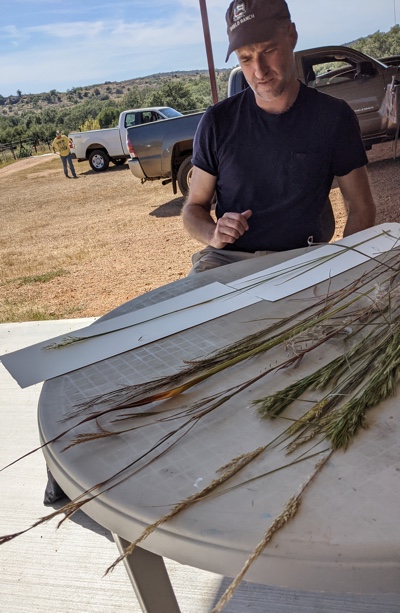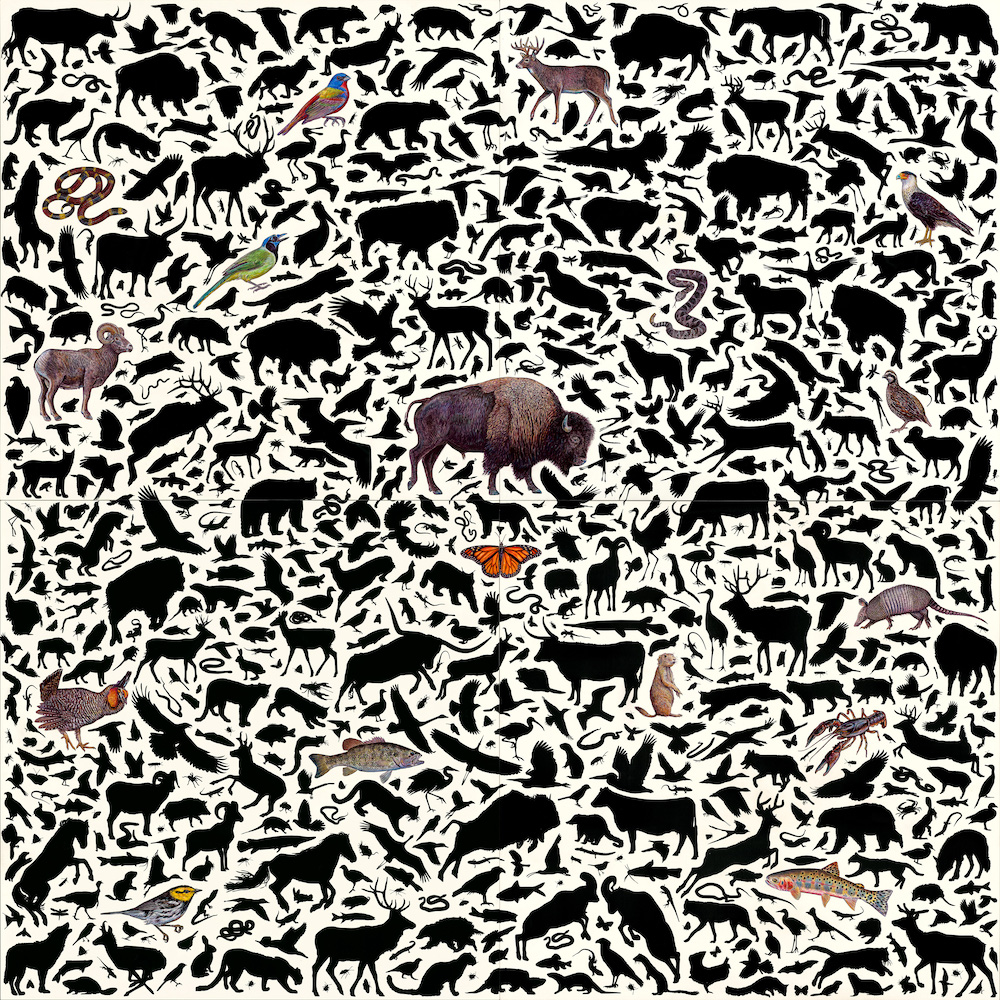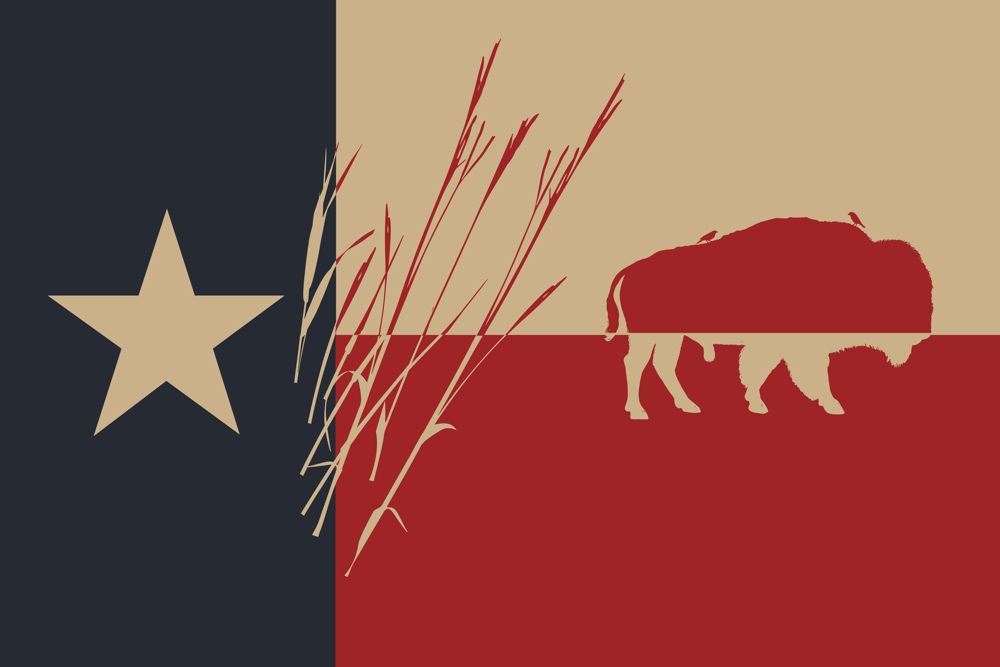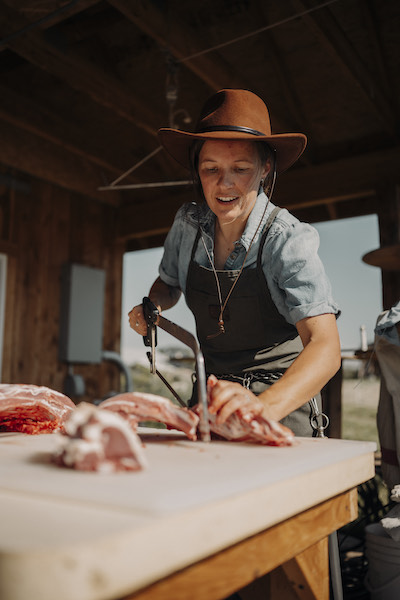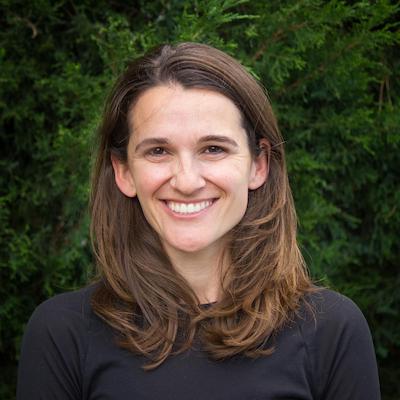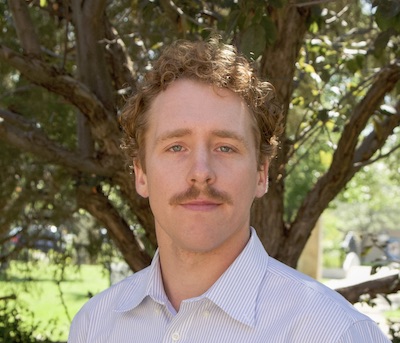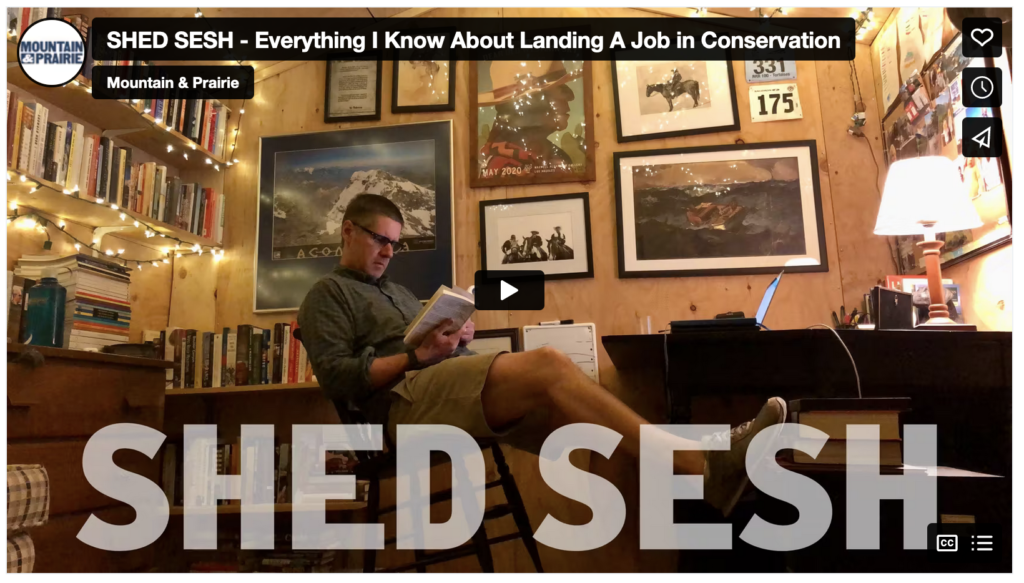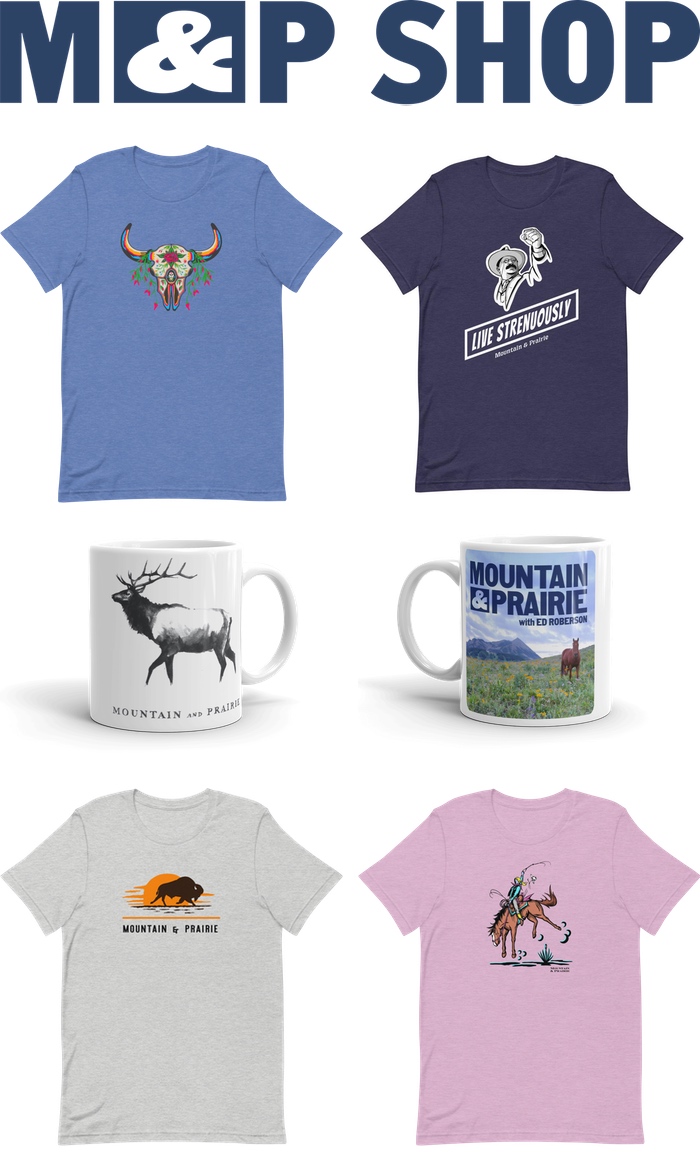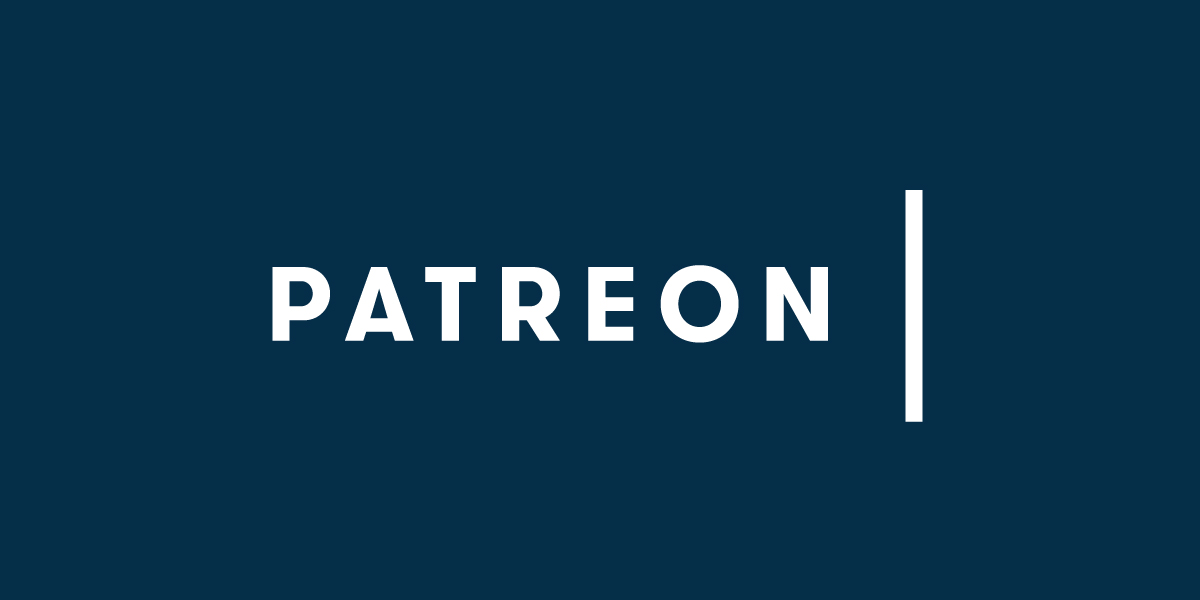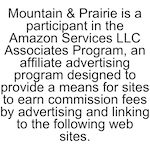Logan Maxwell Hagege Returns – On Taking Action & Finding Balance
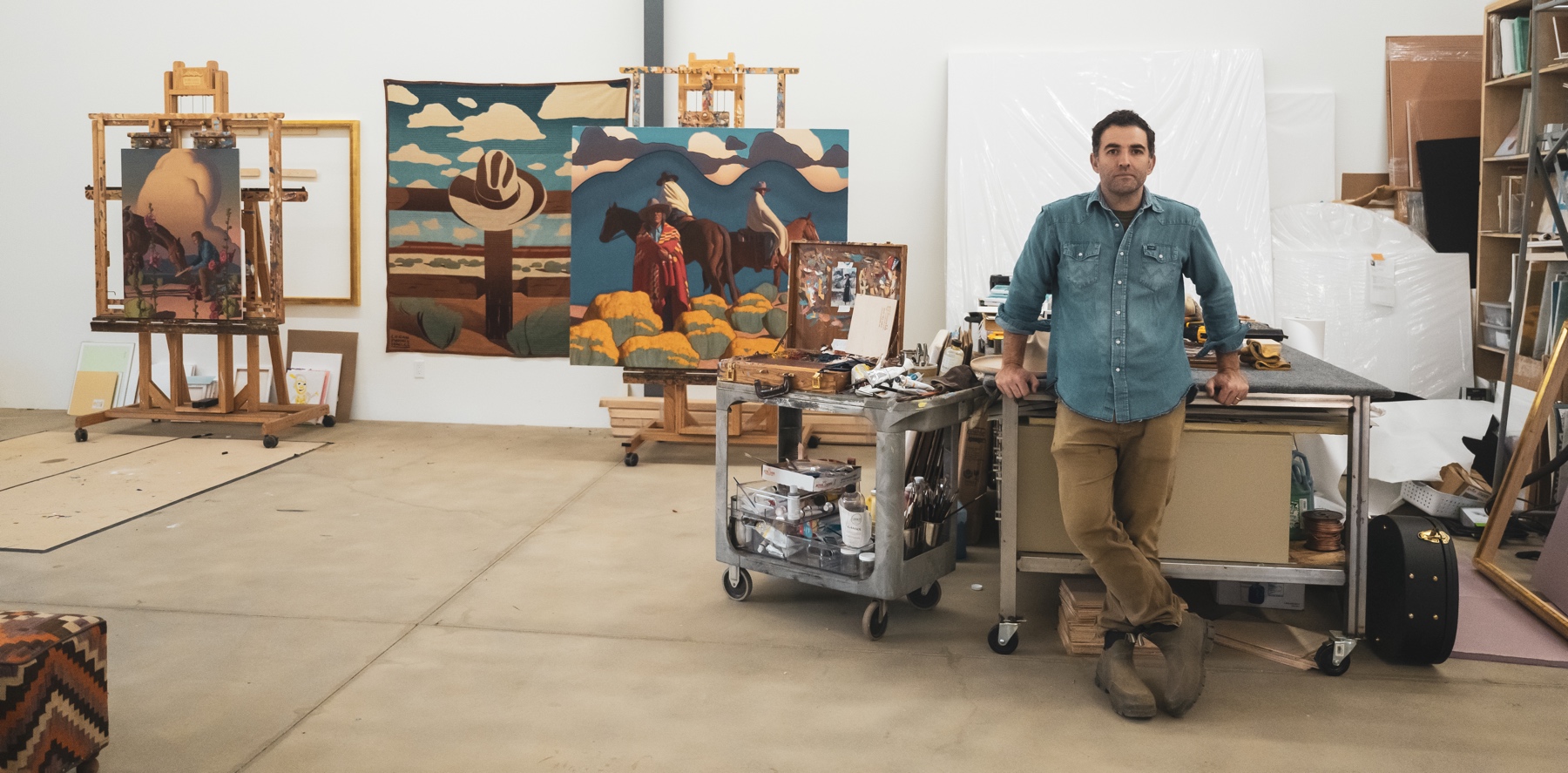
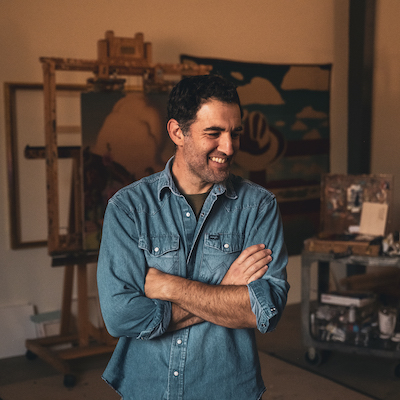
Photo credit: Dylan Gordon
Logan Maxwell Hagege is an Ojai, CA-based contemporary artist with modern visions of the American West. Logan is no stranger to longtime Mountain & Prairie listeners—he first joined me on the podcast back in 2019, and he made another appearance in 2022 alongside several other renowned Western artists in an episode recorded live at Maxwell Alexander Gallery’s 10th-anniversary exhibition. In this episode, I reconnected with Logan at his Ojai studio, and we caught up on a long list of fascinating topics, including his upcoming exhibition at the Gerald Peters Gallery in New York City titled Flowers Will Grow.
Since our first podcast conversation, Logan’s artistic career has continued to skyrocket, and his work has earned the acclaim of a growing number of collectors, critics, and journalists. Most recently, his painting titled “Time and Space” won Best in Show at the Autry’s Masters of the American West show. He’s also been featured in all corners of the Western art world, including a recent spread in Western Art and Architecture and collaborations with well-known brands such as Stetson and Pendleton. But perhaps most impressively, he’s accomplished all of this success while being a deeply committed husband and father of two young children.
As you’ll hear in this conversation, Logan works extremely hard and is fully committed to exploring new realms of his artistic interests, but he brings balance and calmness to what could easily become an all-consuming obsession. I caught Logan just as he was wrapping up all the final details for his upcoming show, and we had a fun discussion about a wide range of topics, including: The intensity of preparing for a show, accepting the judgment that comes with showing art, his practice of constant doodling, how living in Ojai has changed his approach, the importance of self-talk, Georgia O’Keefe, the idea that perfection is boring, the need for action, and much more. Check out the episode notes for a full list of topics discussed and links to everything.
And if you happen to be in New York, the Flowers Will Grow exhibition will open with a reception with Logan on Thursday evening, April 18, 2024, and will be on display through May 23rd.
A huge thanks to Logan for letting me barge into his studio during such a busy time and a huge thanks to you for listening. Enjoy!
All photos by Dylan Gordon
LISTEN & DOWNLOAD:
Apple Podcasts
Spotify
… or wherever you get your podcasts!
—
RESOURCES:
Topics Discussed:
- 2:45 – What the hell is happening in Logan’s studio, and his upcoming show in New York
- 5:15 – Why Logan is working with a gallery outside of Maxwell Alexander
- 7:30 – Whether Logan was nervous the last time he showed his art in New York
- 9:00 – The impact of being able to show more examples of an artist’s work
- 11:15 – How periods of intensity and external pressure have shaped Logan’s work
- 12:45 – How Logan’s art has changed since his 2018 show
- 14:30 – What a Logan’s process looks like when there isn’t external pressure from deadlines
- 17:45 – Logan’s doodling process
- 19:45 – The need for action
- 23:30 – How Logan deals with the fact that unique art will be judged
- 27:45 – Discussing perfection and how boring it is
- 28:45 – Who Logan admires
- 31:15 – Discussing Georgia O’Keefe
- 32:45 – Discussing Logan’s life in Ojai
- 40:00 – The importance of retreat for Logan’s art
- 42:00 – The impact of self-talk
- 44:30 – Discussing the new gallery
- 47:45 – Logan’s book and artist recommendations
Information Referenced:
- Logan Maxwell Hagege
- Logan’s first M&P episode
- Live at Maxwell Alexander Gallery
- Hollyhocks
- Maxwell-Alexander Gallery
- Gerald Peters Gallery
- Briscoe Western Art Museum
- Prix de West
- Masters of the American West, Autry Museum
- Georgia O’Keeffe
- Glenn Dean
- Norman Rockwell
- Ojai, CA
- Rick Ridgeway
- Tribe by Sebastian Junger
- Jocko Willink
- David McCullough
- Tim Lawson
Enjoy this episode? Then you might like these too:
- Nick Offerman – Empathy, Nuance, & Good Hard Work
- Live at the Amon Carter Museum – In Conversation with James Prosek and Spencer Wigmore
- Frances Ashforth – Art, Water, and Wide-Open Spaces
- David James Duncan – Live at the Old Salt Festival
- Kathie Sever – Chainstitching, Craftsmanship, and Cosmic Western Wear
- Beau Alexander – Paying Homage to the Past, While Focusing on the Future
- Douglas Brinkley – Exploring the Past to Find Inspiration for the Future
- Chris Burkard, Part 2 – Seeking Beauty Through Adventure
Visit the podcast page for a full, searchable list of episodes
Dr. Emily Howe – The Interconnectedness of Mountains, Forests, Rivers, and Estuaries
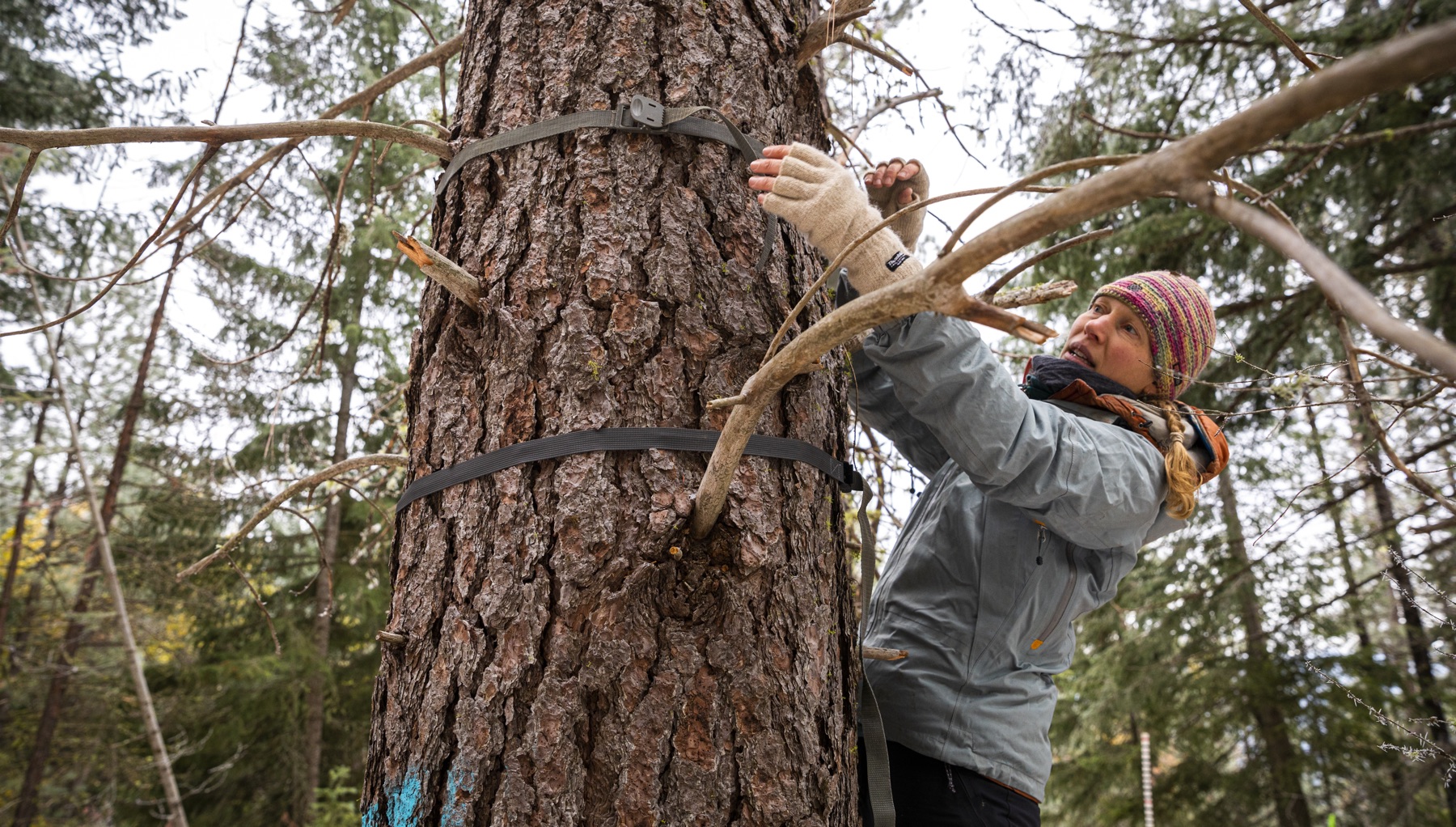
Dr. Emily Howe is an aquatic ecologist with the Washington state chapter of The Nature Conservancy, and she holds a Ph.D. from the School of Aquatic and Fishery Sciences at the University of Washington. Her work integrates across ecosystem boundaries, investigating how landscape configuration and management shape cross-boundary relationships for food webs, organisms, and ecosystem processes.
At the Nature Conservancy, Emily’s projects stretch from the high peaks of the North Cascades all the way down to the estuary of Port Susan Bay, and her work highlights the interconnectedness of everything from snowpack to salmon populations, forest management to marsh grass health. Much of Emily’s work focuses on understanding liminal spaces– areas in nature where boundaries blend together and where the interactions between ecosystems can be fluid and dynamic.
Since the earliest days of European settlement, this area has been subject to a wide variety of threats to the overall ecosystem—aggressive logging, wildfire suppression, attempts to engineer order into the ever-changing estuaries, and more. And with the intensification of climate change, snowfall and its resulting snowpack have decreased, which only exacerbates the negative effects and threats to the ecosystem.
But thanks to Emily and her team of stakeholders and partners, there are many, many reasons to be optimistic about the future. Combining cutting-edge science with Indigenous knowledge, Emily and TNC are making great progress toward finding solutions that can help with everything from increasing the depth and duration of snowpack in the Cascades to restoring all-important salmon habitat, and much much more.
If you’re a fan of ecology and are interested in how Indigenous wisdom can bolster our 21st-century scientific knowledge, then you’ll love this episode. We start our conversation at sea level, discussing the magic of the tidal ecosystems, then work our way up the into mountains, eventually discussing all things snowpack and forest health. We talk about TNC’s partnership with the Stilliguamish Tribe, how forest gaps can affect snowpack, snow droughts and El Nino, collaboration with federal agencies, and rising sea levels in the Northwest. Emily also talks about her career path to becoming a scientist and she offers up some excellent book recommendations.
I love the Pacific Northwest, so I greatly appreciate everything that Emily and her partners are doing to keep this region of the West so wild, special, and healthy. I hope you enjoy.
Photos courtesy of The Nature Conservancy and the University of Washington’s Snow Project.
LISTEN & DOWNLOAD:
Apple Podcasts
Spotify
…or wherever you get your podcasts!
EPISODE PARTNER:
This episode is brought to you in partnership with the Colorado chapter of The Nature Conservancy and TNC chapters throughout the Western United States. Guided by science and grounded by decades of collaborative partnerships, The Nature Conservancy has a long-standing legacy of achieving lasting results to create a world where nature and people thrive.
On the last Tuesday of every month throughout 2024, Mountain & Prairie will be delving into conversations with a wide range of The Nature Conservancy’s leaders, partners, collaborators, and stakeholders, highlighting the myriad of conservation challenges, opportunities, and solutions here in the American West and beyond. You can access all of the episodes here.
To learn more about The Nature Conservancy’s impactful work in the West and around the world, visit www.nature.org
RESOURCES:
Topics Discussed:
- 3:45 – Discussing the history Port Susan Bay Preserve
- 8:15 – The colonial reasons for the “straightening out” of the complex Stille River System
- 11:15 – Why TNC became interested in Port Susan Bay
- 13:15 – Emily’s focus on the Port Susan Bay Preserve
- 17:15 – Emily’s partnership with Tribal entities around Port Susan Bay Preserve
- 21:45 – Where and how TNC partners with the federal government on its work on the coast
- 26:15 – Goals for the Port Susan Bay Preserve
- 32:30 – How fast the sea level is rising in the Port Susan Bay Preserve
- 34:15 – The 2015 Pacific Northwest snow drought
- 38:15 – Emily’s involvement in higher elevation forest management and how it can impact snowpack and water resources
- 45:00 – Putting Emily’s work above to practice
- 52:30 – Emily’s personal journey to this work
- 56:30 – Emily’s book recommendations
- 1:02:00 – Emily’s parting words of wisdom
Information Referenced:
- TNC Washington
- Port Susan Bay Preserve
- Salish Sea
- Stillaguamish River
- Glacier Peak
- Diatoms
- Macoma
- Snoqualmie Tribe
- Tulalip Tribes
- Dr. Susan Dickerson-Lange
- Tapash Sustainable Forest Collaborative
- Yakama Nation
- Yakima, WA
- The Big Burn by Timothy Egan
- The Timber Wars
- Demon Copperhead by Barbara Kingsolver
- Braiding Sweetgrass by Robin Wall Kimmerer
- Leah Palmer’s blog post
Enjoy this episode? Then you might like these too:
- Paige Lewis – Durable Conservation, Collective Action, and Strategic Thinking
- Jenna Pollard – Timber Framing, Organic Farming, Community, and Purpose
- Matt Cahill – A Deep Dive into the Sagebrush Sea
- Lorelei Cloud – Solving Modern-Day Challenges with Ancient Tribal Wisdom
- Cole Mannix – Building Community through Land Stewardship and Local Food
Visit the podcast page for a full list of episodes where you can filter episodes by topic and guests’ vocations.
Sterling Drake – Roots Music, Ranching, and Giving Back
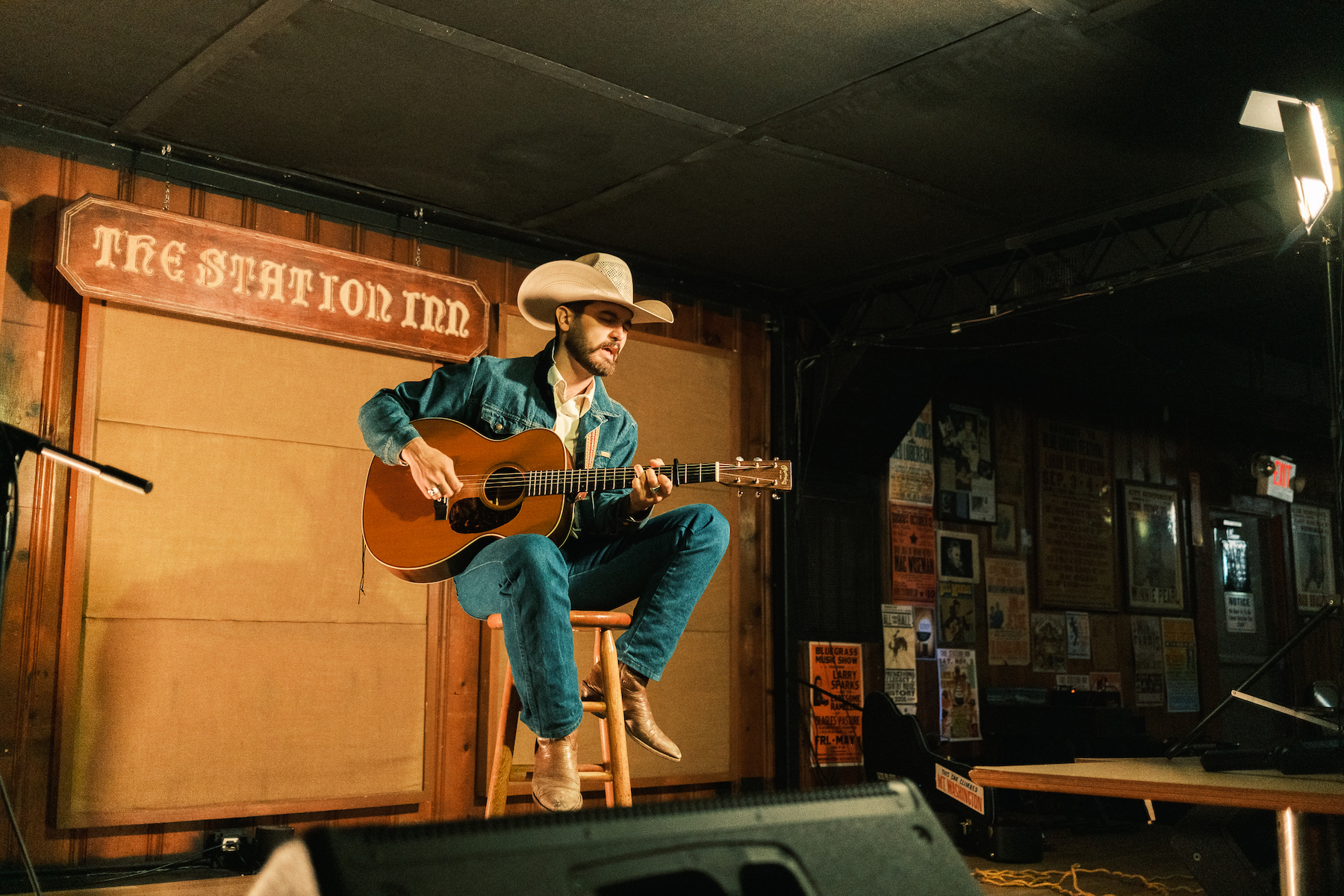
Sterling Drake is an award-winning musician whose soulful tunes reflect his deep love of the landscapes, people, and culture of the American West. The media outlet Lonesome Highway probably best described Sterling’s music by calling it a “perfect fusion of western swing, honky-tonk heartache, and dance hall treasures.” But you can’t really confine Sterling’s music to a single, overarching category– his influences range from country to folk to blues [and more], and he’s toured everywhere from rural Montana to the swamps of South Florida to the music epicenter of Nashville, Tennesse. And it’s those wide-ranging experiences and influences that make him such a fascinating and thoughtful character and such a fun person to talk with.
Sterling’s family has roots in the southeastern U.S., and he was born and raised in Florida. Music was always a big part of his life, but his early interests revolved around the hardcore music scene and his love of drumming. Soon after graduating high school, he decided to head out west, where he began a long stretch of working on various ranches in several different states. Over time, his musical focus shifted from the hardcore world into the roots genre, and he began to capture the attention of audiences at bars, rodeos, and everywhere in between. Today, Sterling is a full-time touring musician, and as I record this, he is preparing for his first European tour. In my mind, Sterling is a perfect example of how a person can successfully meld passion, curiosity, hard work, and respect to create an entirely unique brand of art that resonates with a large, thoughtful audience.
I met Sterling last summer at the 2023 Old Salt Festival in Helmville, Montana, and I was instantly struck by his thoughtfulness, sense of humor, and his desire to contribute to the culture of the American West. So I was glad to finally connect with him for a podcast episode and have an in-depth conversation about his artistic journey. We started out talking about his upbringing in Florida and why he eventually decided to head west. We discuss his time working on ranches, lessons learned from living and working in Nashville, and why he continues to be drawn to Montana. We discuss his most recent EP titled Jereco Sessions, and why he decided to donate all of the proceeds of that project to the nonprofit Western Landowners Alliance. We also discuss Willie Nelson, books, martial arts, straight-edge culture, travel, and much, much more.
If you want to see Sterling perform in person and have a chance to hang out with him, I’d encourage you to come to this summer’s Old Salt Festival, which is taking place June 21-23 in Helmville, Montana. Both Sterling and I will be there, and we’re both looking forward to what is guaranteed to be an amazing weekend.
Thanks for listening, hope you enjoy!
Photos courtesy of Sterling Drake
LISTEN & DOWNLOAD:
Apple Podcasts
Spotify
… or wherever you get your podcasts!
—
RESOURCES:
Topics Discussed:
- 5:00 – Sterling’s first memory of music
- 7:45 – Reflecting on Sterling’s childhood in Florida
- 11:00 – How Sterling became interested in the West, and further discussing Sterling’s upbringing
- 14:30 – Sterling’s time in Utah
- 17:30 – Where Sterling’s work ethic comes from
- 20:00 – How music played into Sterling’s early years out West
- 22:00 – A brief discussion of martial arts and its impact on Sterling’s life
- 25:45 – Sterling’s shift into country music
- 28:15 – When Sterling’s country career started to take off
- 33:15 – Sterling’s insider take on the Nashville music industry
- 40:45 – How Sterling became involved with WLA
- 44:15 – Discussing Sterling’s recent/upcoming album cover
- 45:15 – Sterling’s upcoming European tour
- 46:45 – Looking forward to Old Salt Festival
- 52:30 – Where Sterling may eventually choose to settle down
- 54:00 – Sterling’s advice to early career professionals and aspiring artists
- 1:00:30 – Sterling’s book recommendations
- 1:03:45 – Sterling’s parting words of wisdom
Information Referenced:
- Sterling Drake
- Old Salt Festival
- Western Landowners Alliance
- Beau Alexander and Logan Maxwell Hagege
- Cole Mannix
- Lesli Allison
- Jess Mudgett
- Chris Burkard
- Kaleo
- Bob Marshall Wilderness
- Ovando, MT
- Helmville, MT
- Nick Offerman
- It’s a Long Story by Willie Nelson
- The Lost Cowboy by J.B. Zielke
- Dusty Vaquero YouTube Channel
Enjoy this episode? Then you might like these too:
- David James Duncan – Live at the Old Salt Festival
- Nick Offerman – Empathy, Nuance, & Good Hard Work
- Kathie Sever – Chainstitching, Craftsmanship, and Cosmic Western Wear
- Amber Smith – Creating Connection & Community
- Rick Ridgeway – Purpose-Driven Adventurer
- Nickolas Butler – The Craft of Creativity
- Rick Wittenbraker – Humility, Generosity, and Building One-of-a-Kind Brands
Visit the podcast page for a full, searchable list of episodes
Kevin Krasnow – Keeping Jackson Hole Wild and Beautiful
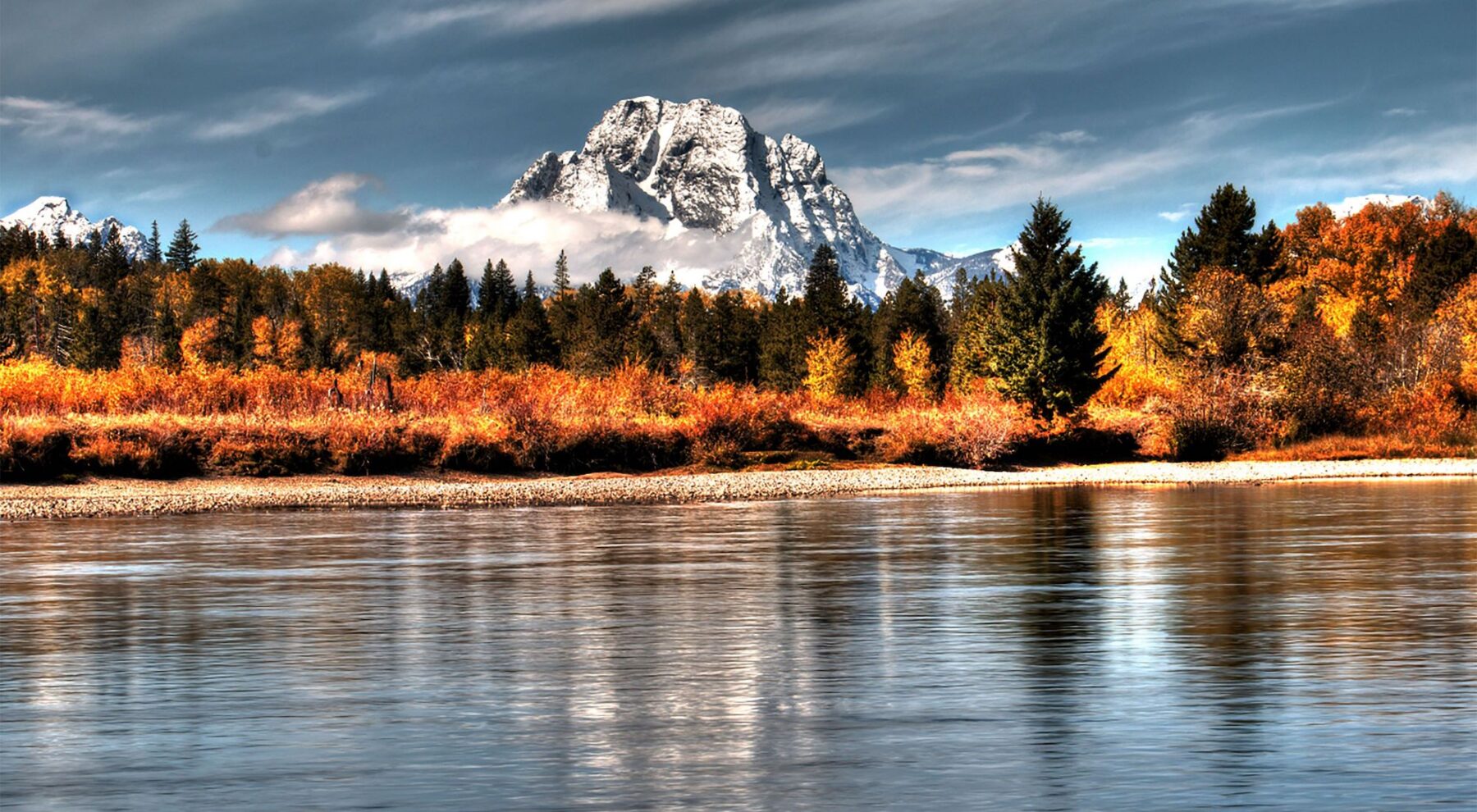
Kevin Krasnow is the Conservation Director at the Jackson Hole Conservation Alliance, a long-standing, highly effective organization whose mission is to “protect the wildlife, wild places, and community character of Jackson Hole.” For more than four decades, the Jackson Hole Conservation Alliance has been a staunch advocate for keeping Jackson Hole wild and beautiful, and it has proven to be a nimble and creative protector of the legendary Wyoming valley. The organization has served as a watchdog against poorly planned development, a champion for public land, a community voice that holds elected officials accountable, and much more.
Kevin brings a fascinating and diverse professional background to his work at the Jackson Hole Conservation Alliance– he’s worked as an Outward Bound instructor, a high school teacher, a college professor, and, most notably, he earned a Ph.D. in Environmental Science, Policy, and Management from the University of California Berkley. Prior to joining the team at the Jackson Hole Conservation Alliance, he worked for ten years at the Teton Science Schools in Jackson. As you’ll hear in our conversation, Kevin is a high-level expert in forest and wildfire ecology, and he speaks eloquently about the role of wildfires in the Greater Yellowstone Ecosystem and beyond.
When I first headed out West from North Carolina nearly twenty years ago, I moved to Jackson Hole— and I will always have a tender spot in my heart for that particular area. So I was thrilled to have the opportunity to connect with Kevin and talk about all things related to ecology, wildlife, fire, and conversation in Jackson Hole. We started with a deep dive into Aspen trees, and why they are such an important and unique part of the Greater Yellowstone Ecosystem. We discussed the Yellowstone Fire of 1988 and how that disaster shaped forest management in the future. We discussed the unprecedented development pressure in and around Jackson, how Kevin and his organization collaborate with a wide range of conservation partners, his professional journey from indirect to direct conservation work, and how his career as an educator informs his work today.
If you’ve ever spent time in the Tetons, Yellowstone, or the Greater Yellowstone Ecosystem, then you’re going to learn a lot from Kevin. Please check out the notes below for a full list of everything we discuss, and I hope you enjoy!
Header photo courtesy of TNC: “Reflective Waters on Jackson Lake.” © Andrew Underwood; Headshot courtesy of Kevin Krasnow
LISTEN & DOWNLOAD:
Apple Podcasts
Spotify
…or wherever you get your podcasts!
EPISODE PARTNER:
This episode is brought to you in partnership with the Colorado chapter of The Nature Conservancy and TNC chapters throughout the Western United States. Guided by science and grounded by decades of collaborative partnerships, The Nature Conservancy has a long-standing legacy of achieving lasting results to create a world where nature and people thrive.
On the last Tuesday of every month throughout 2024, Mountain & Prairie will be delving into conversations with a wide range of The Nature Conservancy’s leaders, partners, collaborators, and stakeholders, highlighting the myriad of conservation challenges, opportunities, and solutions here in the American West and beyond. You can access all of the episodes here.
To learn more about The Nature Conservancy’s impactful work in the West and around the world, visit www.nature.org
RESOURCES:
Topics Discussed:
- 3:30 – Discussing Aspen trees and how they captured Kevin’s attention
- 9:30 – Threats to Aspen populations
- 13:30 – Looking at the Yellowstone Fire of 1988
- 24:00 – How significantly forestry and attitudes toward fire have changed after the Yellowstone Fire of 1988
- 28:30 – What brought Kevin to the Jackson Hole Conservation Alliance
- 31:00 – Whether or not COVID has impacted the urgency of JHCA’s work
- 35:15 – What specific problems Kevin works on at JHCA
- 39:15 – How Kevin and JHCA have collaborated with The Nature Conservancy
- 43:00 – Kevin’s switch from “indirect” conservation to “direct”
- 45:00 – When the outdoors became a part of Kevin’s life
- 47:15 – Kevin’s early career in experiential education, and how it benefits his career now
- 52:30 – Kevin’s words for a young person looking for career advice
- 55:00 – Kevin’s book recommendations
- 58:15 – Kevin’s parting words of wisdom, and how folks can support JHCA
Information Referenced:
- Kevin Krasnow
- Pando Aspen Stand
- Pine beetle
- Yellowstone fires of 1988
- Ponderosa Pine
- The Big Burn by Timothy Egan
- Fire Weather by John Vaillant
- John Vaillant
- Jackson Hole Conservation Alliance
- The Nature Conservancy, Idaho
- The Nature Conservancy, Wyoming
- Teton Area Wildfire Protection Coalition
- Outward Bound
- Braiding Sweetgrass by Robin Wall Kimmerer
- When Things Fall Apart by Pema Chodron
Enjoy this episode? Then you might like these too:
- Doug Peacock – 50 Years of Fighting for the Grizzlies
- Rob Addington – A Deep Dive into Western Wildfires and Forest Health
- John Vaillant – A Riveting Exploration of Fire
- Christian Beckwith, Part 2 – The Fascinating History of the 10th Mountain Division
- Dr. Katharine Hayhoe – Effecting Change Through Authentic Conversation
- 50 Years of the Endangered Species Act – Live in Austin
Visit the podcast page for a full list of episodes where you can filter episodes by topic and guests’ vocations.
Mike DeHoff – Exploring the Colorado River’s Reemerging Rapids
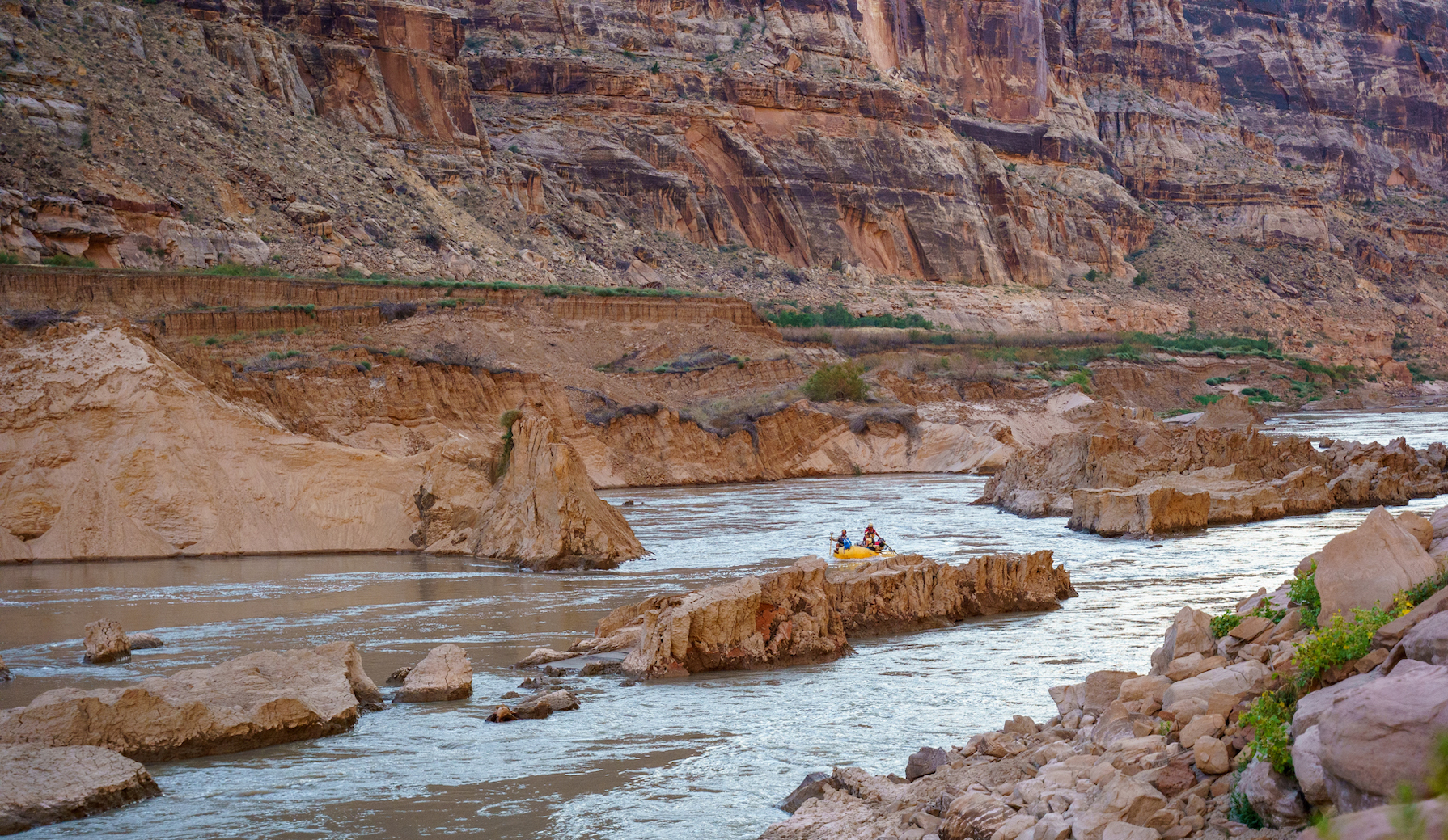
Mike DeHoff is the Principal Investigator at Returning Rapids Project, a one-of-a-kind initiative that is documenting the recovery of the Colorado River in Cataract Canyon, upper Glen Canyon, and along the San Juan. Back in 1963, the construction of Glen Canyon Dam created Lake Powell, which submerged many of the area’s canyons– turning what were once wild stretches of the Colorado into flat water. Today, the southwest’s ongoing historic drought has caused Lake Powell’s water levels to to drop significantly, revealing historic rapids, recently hidden geologic features, and riparian ecosystems that had been deep underwater for nearly fifty years.
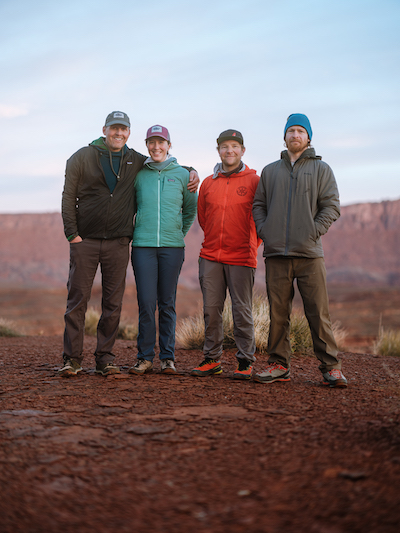
Returning Rapids began as a personal project for Mike and three of his river-loving friends– Meg Flynn, Peter Lefebvre, and Chris Benson. They began to notice changes in the river created by Lake Powell’s receding waters and started documenting those changes and using historic photographs and documents to better understand the reemerging landscape. Over the years, their work caught the attention of universities, academics, scientists, and government agencies, all of whom were fascinated by what was being discovered deep in those canyons. Fast forward to today, and their work is not only enabling cutting-edge research but also capturing the attention of bigtime media outlets, including a recent feature in Rolling Stone.
Mike connected with me virtually from his home base in Moab, Utah, and we had a fascinating discussion about the Colorado River, Lake Powell, and the history of the Returning Rapids project. We started out with a brief history lesson on the drought’s effect on the Colorado River, then we dug into issues such as the mind-blowing amount of sediment created by Glen Canyon Dam. We discussed when Mike and his partners realized that their personal project was capturing the attention of the public, the challenges of garnering attention for lesser-known places like Cataract Canyon, and the idea of combining Lake Powell and Lake Mead. We also talk a lot about Mike’s personal journey with this project, and how his willingness to follow his curiosity, partner with very smart people, take risks, and work extremely hard has had a significant scientific impact. We also discuss books, his mentors, his desire to learn from everyone he meets, and much more.
A huge thanks to Mike, Meg, Peter, and Chris for their important work, and for providing such a solid example for all of us who feel drawn to make a difference here in the American West. You can support Returning Rapids
Header photo by Travis Custer, photo of Mike and Meg by Elliot Ross, team photo by Cody Cobb
LISTEN & DOWNLOAD:
Apple Podcasts
Spotify
…or wherever you get your podcasts!
EPISODE PARTNER:
This episode is brought to you in partnership with the Mighty Arrow Family Foundation.
To whom much is given, much is expected. This value guides the philosophy behind the Mighty Arrow Family Foundation today.
Committed to its cause and infused with an entrepreneurial spirit, Mighty Arrow aims to invest in solutions that take action on climate change to build a more vibrant future, repair relationships from farm to market to table, heal our connection to the lands and waters we call home, and demand a more just and equitable society.
To learn more about Mighty Arrow’s forward-thinking, optimistic, and visionary work here in the American West and beyond, please visit www.mightyarrow.org.
RESOURCES:
Topics Discussed:
- 3:30 – The drought of the early 2000s and how it started a 20+ year journey for Mike
- 16:30 – How an entire land mass of Colorado River sediment can be created with no one claiming management or responsibility of it
- 21:30 – When Mike’s project shifted from a personal interest to an interest of the public
- 26:15 – The surprising rate that Lake Powell and Cataract Canyon are capable of recovering
- 34:30 – How Mike garners attention for lesser-known but important places like Cataract Canyon
- 37:15 – Discussing the idea of combining Lake Powell and Lake Meade
- 44:15 – Mike’s advice for people wanting to do something similar to he and his team
- 47:30 – Mike’s powerful appreciation for the people he meets, and his mentors and heroes
- 50:30 – Mike’s book recommendations
- 53:45 – Mike’s parting words of wisdom
Information Referenced:
- The Returning Rapids Project
- The Returning Rapids Project: Good News From the Beleaguered Colorado River
- Cataract Canyon
- Peter Lefebvre
- Meg Flynn
- Les Jones
- Mike DeHoff’s online presentation
- Encounters With Archdruid by John McPhee
- David Brower
- Floyd Dominy
- Chris Benson
- Scott Hynek
- Cari Johnson
- Mighty Arrow Family Foundation
- The Interim Guidelines
- Where the Water Goes by David Owen
- Brenda Bowen
- 1491 by Charles C. Mann
- Deadrun by Dan Schultz
- Desert Notes and River Notes by Barry Lopez
Enjoy this episode? Then you might like these too:
- Pete McBride, Part 2: In Search of Silence
- Chris Burkard, Part 2 – Seeking Beauty Through Adventure
- Taylor Hawes – Innovative Conservation in the Colorado River Basin
- Chandra Brown, Part 2 – Teaching & Learning in the West’s Wildest Landscapes
- Lorelei Cloud – Solving Modern-Day Challenges with Ancient Tribal Wisdom
- Doug Peacock – 50 Years of Fighting for the Grizzlies
- Dylan Tomine – Protecting What He Loves
Visit the podcast page for a full list of episodes where you can filter episodes by topic and guests’ vocations.
SHED SESSION: Seven Must-Read Books That You May Not Know About

An excerpt from my most recent Shed Session episode, highlighting seven of my favorite books that you may have never heard of.
To listen to the full episode and all future Shed Sessions, become a Patreon supporter.
Live at the Amon Carter Museum – In Conversation with James Prosek and Spencer Wigmore
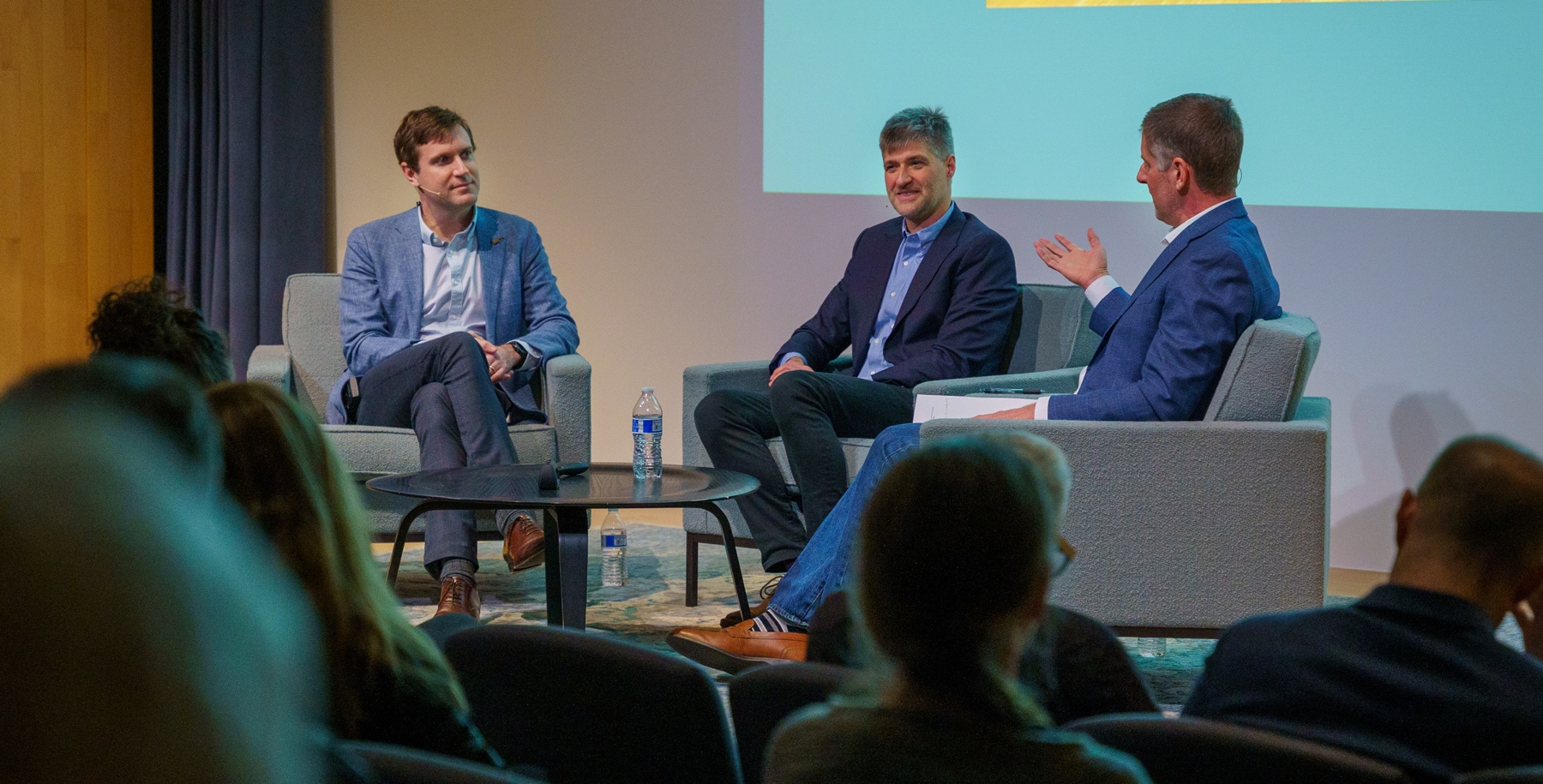
This is a special live episode that was recorded at the Amon Carter Museum of American Art in Fort Worth, Texas. The event was centered around the museum’s ongoing exhibition titled Trespassers: James Prosek and the Texas Prairie, and the episode features a fascinating on-stage conversation with artist and past podcast guest James Prosek and art curator Spencer Wigmore.
Trespassers is an exhibit about grasslands– specifically, James examines how we think about and define America’s imperiled prairie ecosystem. Over the course of more than two years, James traveled throughout Texas and the Southern Plains, visiting private ranches and urban restoration sites, and he was often accompanied by some of Texas’s most well-renowned grasslands experts. He investigated ideas around how our man-made boundaries and concepts attempt to define grasslands, and how grasslands often do not conform to our desires to control them. He examines ideas around fire, species classification, conservation, and natural history, and the end result is a collection of more than twenty mind-blowing paintings and sculptures.
As the curator for this exhibit, Spencer played a very unique role throughout the entire project– he was the one who initially approached James with the idea, he accompanied James on many of his grasslands road trips, and he even arranged the exhibit in its stunning space within the museum. So I loved learning about the collaboration between artist and curator, how they complimented each other’s personalities, and how they ultimately worked together to bring this spectacular collection of meaningful art into the world.
As you probably remember from my first podcast conversation with James, he’s a deep thinker who has spent his entire career digging into the nuances of our natural world. And Spencer’s depth of understanding of art history and the artistic process– as well as his ability to communicate his knowledge in a fun and engaging way– is second to none. So I know you’ll enjoy this conversation that covers everything from broad, big-picture ideas around the philosophies of defining species, all the way down to the details of how James created such intricate, delicate sculptures. Be sure to check out the episode notes below for a full list of everything we discussed.
The episode starts with a kind introduction from The Carter’s Manager of Adult Programming, Madeleine Fitzgerald and then James, Spencer, and I begin our conversation. I hope you enjoy!
Photos of Trespassers:
All photos courtesy of The Amon Carter Museum of American Art
LISTEN & DOWNLOAD:
Apple Podcasts
Spotify
… or wherever you get your podcasts!
—
RESOURCES:
Topics Discussed:
- 3:00 – Welcome statements
- 10:45 – How the Trespassers exhibition came about in Spencer’s mind, and how it landed for James
- 19:15 – Comparing American grasslands to the Great Pyramids
- 23:45 – James’ painting process
- 29:15 – Spencer’s role as curator
- 34:00 – Discussing the work Fort Worth Composition No. 1
- 37:45 – Discussing James’ interest in silhouettes
- 42:30 – James’ use of bronze to depict burn logs
- 47:00 – James’ clay flowers
- 50:15 – The biggest surprise in this project for Spencer
- 54:00 -What James has learned about grasslands since finishing the project
- 1:01:15 – James’ read on the state of western grasslands conservation
- 1:06:15 – James’ book recommendations
- 1:09:30 – How Spencer sets up the gallery space
- 1:14:00 – Audience questions begin
- 1:14:45 – Spencer’s and James’ relationship to Fort Worth, and whether or not they found remnant prairies there
- 1:20:00 – Where Spencer and James feel the anti-fire bias came from?
- 1:23:30 – Inquiring about the significance of a Rio Grande Cutthroat Trout in one of James’ works
- 1:26:15 – Whether or not James or Spencer did some fly fishing as a part of their research for this project
Information Referenced:
- Amon Carter Museum of American Art
- Spencer Wigmore
- James Prosek
- Trespassers exhibition
- Big Bluestem
- Fire in America by Stephen Pyne
- Heath Hens
- Pliny the Elder
- Prairie Time by Matt White
- Changes in the Land by William Cronon
- Forgotten Fires by Omer C. Stewart
- Jaime Gonzales, when featured in M&P epsisode
- The Big Burn by Timothy Egan
- Trout by James Kersec
Enjoy this episode? Then you might like these too:
- Live from Maxwell Alexander Gallery
- Nick Offerman – Empathy, Nuance, & Good Hard Work
- David James Duncan – Live at the Old Salt Festival
- Live with the Cowboy Artists of America
- Beau Alexander – Paying Homage to the Past, While Focusing on the Future
- Frances Ashforth – Art, Water, and Wide-Open Spaces
- Kelsey Johnson – Chasing Her Artistic Ambitions
Visit the podcast page for a full, searchable list of episodes
Ivy Spohnholz – Climate Solutions, Sustainable Fisheries, and Resilient Communities
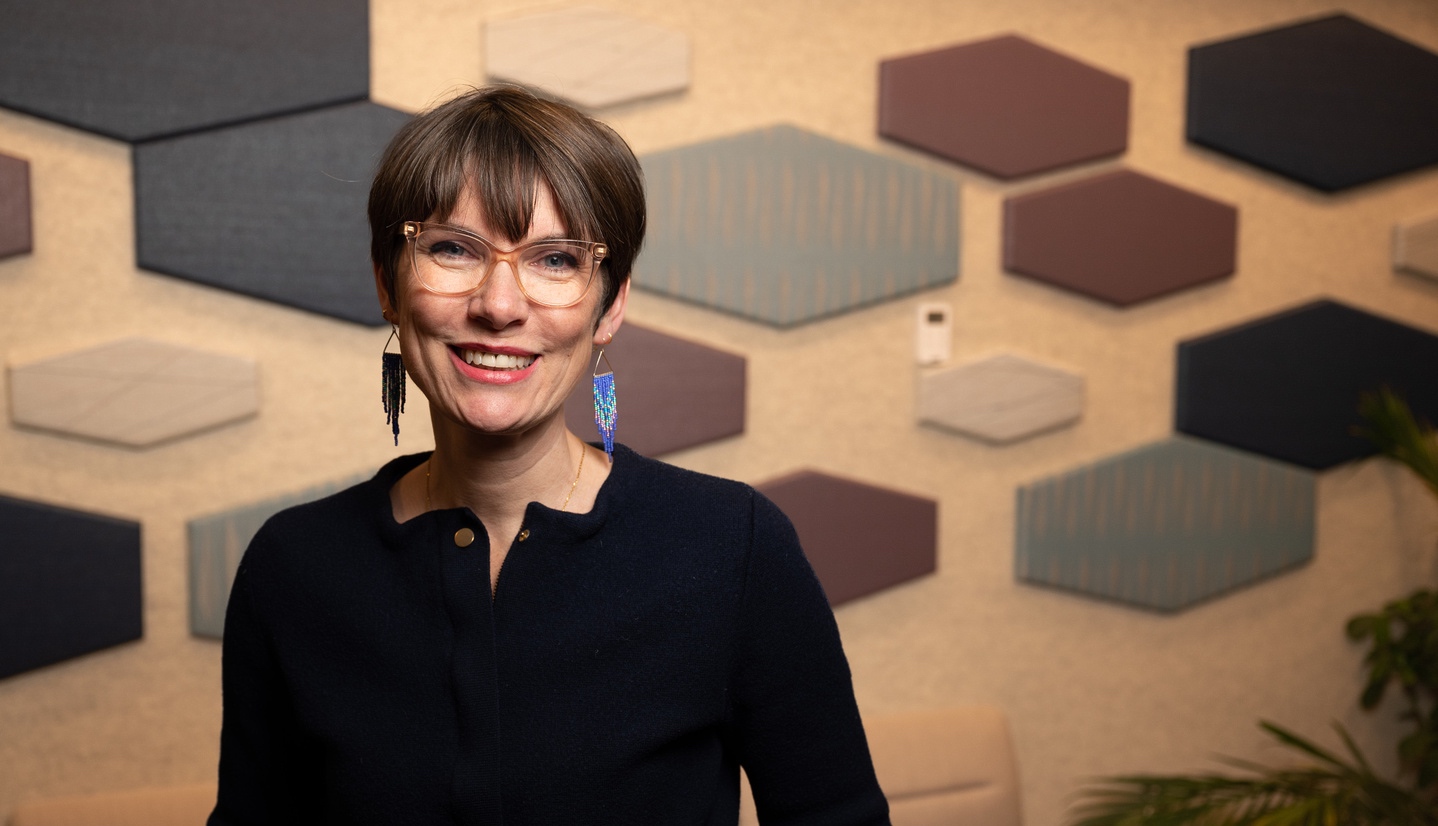
Ivy Spohnholz is the Alaska State Director at The Nature Conservancy, where she leads the organization’s critical work around climate solutions, sustainable fisheries, and resilient communities. Given its size, location, climate, demographics, and economics, Alaska presents a very unique blend of conservation challenges– challenges that can directly affect massive, landscape-scale ecosystems and the communities within them. We’ve rarely, if ever, dug into the details of conservation in Alaska on this podcast, so I was thrilled to have Ivy join me for such an in-depth conversation.
Ivy was born in a dry log cabin in the remote Wrangell Mountains, in what is now Wrangell-St. Elias National Park and Preserve. Her entire career has revolved around public service– she’s held leadership roles at the Salvation Army, University of Alaska Anchorage, Alaska Conservation Foundation, and Abused Women’s Aid in Crisis. She also served for more than six years in the Alaska House of Representatives, where she honed her skills as a pragmatic and effective problem solver. In the fall of 2022, she took the reins as TNC’s Alaska State Director and has been applying her skills as a leader and problem solver toward Alaska’s distinctive conservation challenges.
I’ve been lucky enough to visit Alaska on two separate occasions, and I’ve had some of the most formative experiences of my life in the Alaska Range. The size and scale of the mountains, valleys, and wildlife are so staggering that it’s impossible to visit Alaska without gaining a deep respect for both the landscapes and the people who live there. So, I was excited to have the opportunity to chat with Ivy about her adventurous upbringing in Alaska and her service-oriented career. We talk in detail about her unexpected entrance into politics and how she quickly learned to lead and navigate the law-making process as an elected official. We discuss TNC’s focus areas in Alaska, and we talk a lot about Bristol Bay and its ecological and economic significance in the world. As you’ve probably come to expect, we talk about the all-important power of relationships, and we also discuss the need to be practical and optimistic.
A big thank you to Ivy for taking the time to talk with me– I greatly appreciate all of the important work being done by TNC Alaska. Enjoy!
Header photo by Matthew Waliszek, hunting photo by Troy Bowler
LISTEN & DOWNLOAD:
Apple Podcasts
Spotify
…or wherever you get your podcasts!
EPISODE PARTNER:
This episode is brought to you in partnership with the Colorado chapter of The Nature Conservancy and TNC chapters throughout the Western United States. Guided by science and grounded by decades of collaborative partnerships, The Nature Conservancy has a long-standing legacy of achieving lasting results to create a world where nature and people thrive.
On the last Tuesday of every month throughout 2024, Mountain & Prairie will be delving into conversations with a wide range of The Nature Conservancy’s leaders, partners, collaborators, and stakeholders, highlighting the myriad of conservation challenges, opportunities, and solutions here in the American West and beyond. You can access all of the episodes here.
To learn more about The Nature Conservancy’s impactful work in the West and around the world, visit www.nature.org
RESOURCES:
Topics Discussed:
- 3:30 – Ivy’s birth in a dry log cabin in the Wrangell Mountains
- 7:15 – Ivy’s childhood
- 10:15 – When Ivy left Alaska, and what brought her back
- 12:00 – How serving others became a core part of Ivy
- 17:00 – When Ivy became an elected official
- 24:00 – Discussing the political landscape of Alaska
- 28:15 – How Ivy became involved with TNC
- 34:45 – Discussing TNC’s work in Alaska
- 41:00 – How Ivy balances working urgently with the often slower pace of building relationships
- 46:30 – The importance of Bristol Bay
- 52:00 – Potential future threats to Bristol Bay
- 57:00 – The biggest surprise for Ivy in her work with TNC
- 59:30 – Discussing “practical optimism”
- 1:01:30 – Ivy’s book recommendations
- 1:03:45 – Ivy’s parting words of wisdom
Information Referenced:
- Ivy Sponholtz
- The Alaska Chapter of The Nature Conservancy
- Wrangell Mountains
- Nabesna, AK
- Wrangell-Saint Elias National Park and Preserve
- Anchorage, AK
- Talkeetna, AK
- The Timber Wars
- Bristol Bay
- United Tribes of Bristol Bay
- Pebble Mine
- Katharine Hayhoe
- Saving Us by Katherine Hayhoe
- Strangers In Their Own Land by Arlie Russell Hochschild
- How to Know a Person by David Brooks
- Good to Great by Jim Collins
- The Second Mountain by David Brooks
Enjoy this episode? Then you might like these too:
- Dr. Sara Dant Returns – “Losing Eden: An Environmental History of the American West”
- Jenna Pollard – Timber Framing, Organic Farming, Community, and Purpose
- Corissa Busse – Tribal-Led Buffalo Restoration in the American West and Beyond
- Vincent Stanley – Lessons Learned from Patagonia’s First Fifty Years
- Doug Peacock – 50 Years of Fighting for the Grizzlies
- Chandra Brown, Part 2 – Teaching & Learning in the West’s Wildest Landscapes
- Cole Mannix – Building Community through Land Stewardship and Local Food
Visit the podcast page for a full list of episodes where you can filter episodes by topic and guests’ vocations.
Chad Ellis – On Leadership, Building Relationships, and Working for the Greater Good
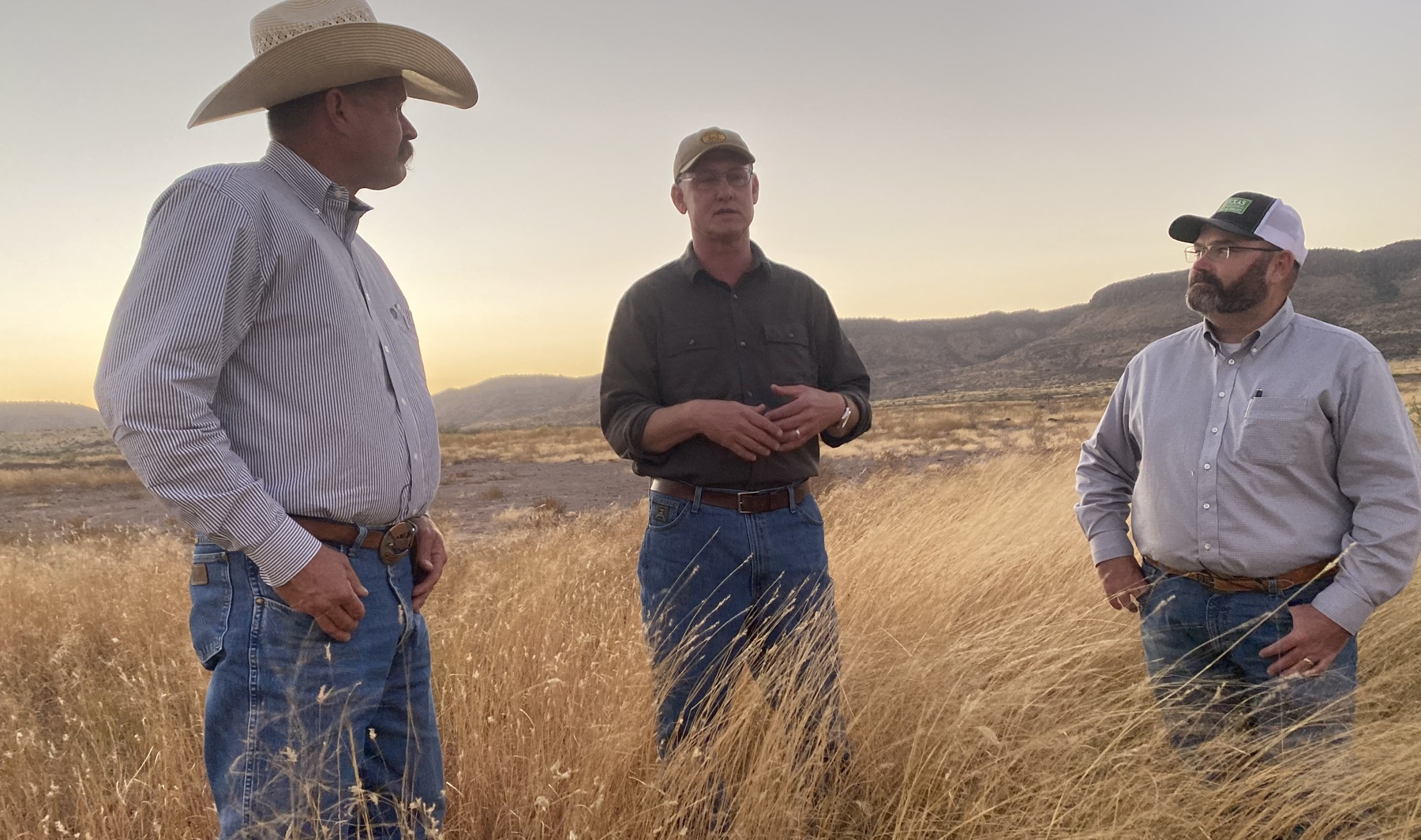
Chad Ellis is the CEO of the Texas Agricultural Land Trust (TALT), which is one of the nation’s leading ag-focused conservation organizations. TALT’s mission is “To conserve the Texas heritage of agricultural lands, wildlife habitats, and natural resources,” but at its core, TALT’s work is built on the foundation of long-term, trusting, mutually respectful relationships.
Given the small proportion of public lands in Texas compared to other western states, much of the responsibility for landscape-scale ecological health falls on the shoulders of private landowners. And since 2007, TALT has helped these landowners find ways to not only protect their family legacies, but to improve the overall quality of grasslands, water, air, and wildlife for all Texans.
Chad was raised in rural Texas, and from a very early age, he felt a deep connection to land, agriculture, and wildlife. While his entire career has been devoted to thoughtfully and effectively stewarding natural resources, you’ll quickly realize that at his core, Chad is a relationship builder. During his tenures at the NRSC, the Noble Research Institute, and now as the leader of TALT, Chad has implemented many cutting-edge conservation solutions– but, as you’ll hear him explain, none of these projects would be successful without solid, trusting relationships between all stakeholders.
Longtime listeners will recognize Chad from an earlier appearance on Mountain & Prairie– back in 2023, he was one of the panelists in an episode called “Landscape-Scale Management in a Private Land State,” which was recorded live at the Texas Chapter of the Wildlife Society’s annual meeting. In this episode, we dig more into Chad’s personal and professional journey in conservation– why he has devoted his career to such a challenging-yet-critical cause, and how he approaches his work from both practical and philosophical perspectives. We discuss his love of entrepreneurial approaches, his leadership style, mentors, the storied legacy of TALT’s founder Blair Fitzsimons, supporting the next generation of conservationists, his favorite books, and much more.
If you haven’t already, I’d encourage you to check out TALT’s website and follow its work on social media– TALT is a constant source of inspiration for me and all of the Western conservation community. Thanks for listening!
Photos courtesy of Chad Ellis and TALT
LISTEN & DOWNLOAD:
Apple Podcasts
Spotify
… or wherever you get your podcasts!
—
RESOURCES:
Topics Discussed:
- 4:30 – Where Chad grew up
- 7:45 – Chad’s work with PERC
- 10:15 – Where Chad’s entrepreneurial background came from
- 16:15 – How Chad moved up in the NRCS ranks
- 18:45 – Chad’s time with Mobil Foundation
- 21:45 – Chad’s personal vision
- 24:30 – Chad’s motivation to strengthen people’s connection to the land, instead of just supporting the land itself
- 27:15 – How Chad hires for a passionate team
- 29:15 – Chad’s work securing federal funding
- 32:45 – How Chad thinks about failure
- 34:45 – How Chad presented his vision for TALT to an already accomplished director (Blair Fitzsimons)
- 40:30 – Chad’s goal to support the next generation of conservationists
- 44:30 – How Chad interprets the threats facing conservation in Texas
- 51:30 – How Chad prioritizes his allocation of resources
- 58:45 – Exploring Chad’s level of patience, as well as the various ways that people learn and work
- 1:03:30 – The importance of relationships
- 1:07:45 – Chad’s book recommendations
- 1:09:15 – Chad’s parting words of advice
Information Referenced:
- Lohn, TX
- Texas Agricultural Land Trust (TALT)
- Property Environment Research Center (PERC)
- Noble Foundation (Noble Research Institute)
- Dr. Roel Lopez
- Natural Resource Institute
- Brian Lebronski
- Sul Ross State University
- Texas Parks and Wildlife Department
- Angelo State University
- Natural Resources Conservation Service (NRCS)
- Lloyd Noble
- Carlos Fernandez
- Inflation Reduction Act (IRA)
- Blair Fitzsimons
- Joe Fitzsimons
- Texas Chapter of the Wildlife Society 2023 meeting
- TALT’s guiding principles
- Regional Conservation Partnership Program (RCPP)
- Myers-Briggs Personality Test
- Enneagram
- Think Like a Horse by Grant Golliher
- Diamond Cross Ranch
Enjoy this episode? Then you might like these too:
- Erik Glenn Returns – Leadership, Innovation, & Commitment to Conservation
- Rebuilding a Resilient, Regional Meat Supply Chain – LIVE at the Old Salt Festival
- Matt Moorhead & Galen Guerrero-Murphy – Grasslands Conservation on the Southern High Plains
- Dr. Katharine Hayhoe – Effecting Change Through Authentic Conversation
- Francesca Claverie – A Borderlands Conservation Success Story
- Taylor Hawes – Innovative Conservation in the Colorado River Basin
- Anna Borgman – Obsession, Curiosity, and Purpose-Driven Work
Visit the podcast page for a full, searchable list of episodes
Rick Wittenbraker – Humility, Generosity, and Building One-of-a-Kind Brands
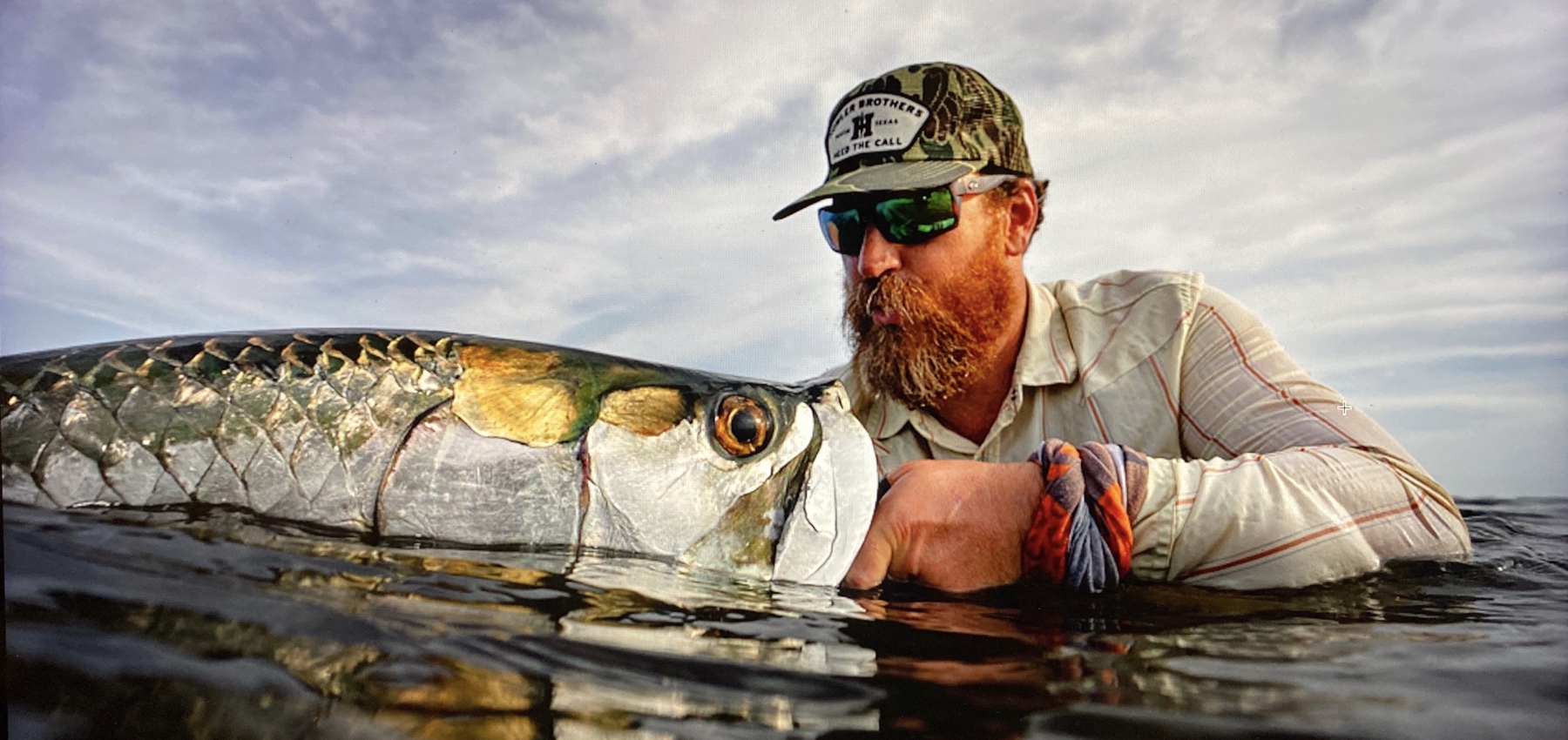
Rick Wittenbraker is the CMO of Howler Brothers, an Austin-based apparel company that creates some of the most unique, stylish, quirky, and highly functional outdoor clothing for adventurers of all stripes. In a little over a decade, Howler has firmly established itself as the go-to brand for anglers, surfers, travelers, and fun-seekers– the kind of people who value good times with good friends in cool places.
Rick was born and raised in Texas, attended UT Austin, and spent the first years of his career in traditional businesses such as finance and sales. But in 2009, he joined an up-and-coming cooler company known as Yeti, and that is where Rick’s genius for storytelling really broke through. He eventually became Yeti’s VP of Marketing and was one of the major forces behind Yeti’s groundbreaking approach to building a brand through outside-the-box storytelling. Along the way, he met Howler Brother’s founders– Chase Heard and Andy Stepanian– and eventually decided to join them and apply his brand-building expertise toward expanding what is now known as The Howlerverse.
Rick has been a longtime mentor of mine, and I credit his wisdom and counsel as being one the main factors that have allowed me to build Mountain & Prairie from a silly little side project into my full-time job. And there are countless creatives and entrepreneurs who have a similar story of Rick generously taking an interest in their project, offering his hard-earned wisdom, and expecting nothing in return. So this episode with Rick was long overdue.
We recorded this in Austin, at the Howler Brothers HQ, and we covered a lot, including: Rick’s career path, lessons learned from living internationally, his philosophies around building authentic, completely original brands, his ever-present focus on generosity and humility, separating personal identity from brand identity, growing without abandoning core values, the spirit behind the Howler Brothers brand, the Howler Brothers book, some of his favorite books, and much more.
A big thanks to Rick for taking the time to chat with me, as well as for everything he’s done to help Mountain & Prairie grow and evolve over the years. Hope you enjoy this conversation as much as I did.
Photos courtesy of Rick Wittenbraker
LISTEN & DOWNLOAD:
Apple Podcasts
Spotify
Google Podcasts
… or wherever you get your podcasts!
—
RESOURCES:
Topics Discussed:
- 4:00 – Rick’s childhood and what he wanted to be when he grew up
- 9:15 – Rick’s first job out of college
- 11:15 – Rick’s mentor in his first job
- 14:45 – When Rick became interested in marketing
- 18:00 – When Rick realized he and Yeti were onto something big
- 20:45 – Inspirations for Rick’s style of marketing with Yeti, and why it works so well
- 25:30 – Fun that Rick has had on the job
- 27:45 – Why Rick decided to move along from Yeti
- 29:45 – A bump in Rick’s career road
- 31:15 – Balancing the merits of business ideas and businesses with the people who implement them
- 38:00 – Describing Howler Bros.
- 44:15 – How Howler Bros. balances their identity and values with the need for business growth
- 46:15 – Separating personal identity from brand identity
- 49:30 – Balancing initiative and recklessness as it pertains to business progress
- 51:30 – Where Rick’s generosity and willingness to help comes from
- 54:00 – The future of Howler Bros.
- 58:15 – Rick’s book recommendations
- 1:03:00 – Rick’s parting words of wisdom
Information Referenced:
- Rick Wittenbraker
- Howler Bros.
- Flyfishing Film Tour
- Yeti Coolers
- Flip Pallot
- Jose Wajebe
- Bill Dance
- Chase Heard and Andy Stepanian
- Howler monkey
- A Decade of Howler Brothers Book
- Goodbye to a River by John Graves
- Lonesome Dove by Larry McMurtry
- Call an Audible by Daron K. Roberts
Enjoy this episode? Then you might like these too:
- Nick Offerman – Empathy, Nuance, & Good Hard Work
- Alvin Dedeaux – Living His Dream
- Kathie Sever – Chainstitching, Craftsmanship, and Cosmic Western Wear
- Chris Burkard, Part 2 – Seeking Beauty Through Adventure
- Beau Alexander – Paying Homage to the Past, While Focusing on the Future
- Jess Mudgett – Humble & Grateful
- Pete McBride, Part 2: In Search of Silence
- Rick Ridgeway – Purpose-Driven Adventurer
- Anna Borgman – Obsession, Curiosity, and Purpose-Driven Work
Visit the podcast page for a full, searchable list of episodes
50 Years of the Endangered Species Act – Live in Austin
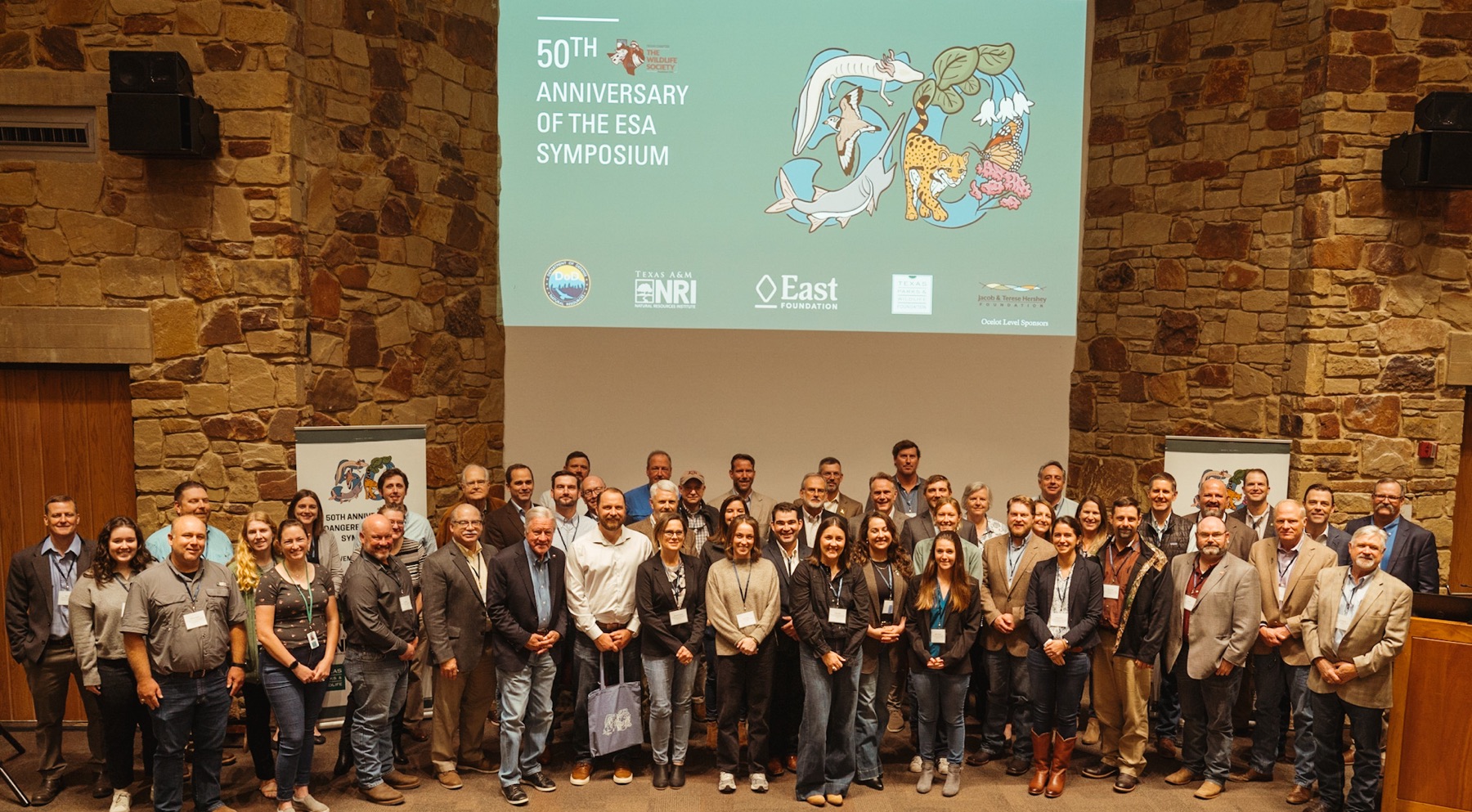
This is a special live episode that was recorded in Austin, Texas, in November of 2023 at the 50th Anniversary Endangered Species Act Symposium. As you may know, 2023 marked 50 years since the passing of the Endangered Species Act (ESA), which is one the most influential and impactful pieces of conservation legislation in United States history. This symposium gathered together an impressive and wide range of ESA experts from governmental, non-profit, and for-profit organizations, and we spent the day discussing the ESA’s fascinating and complex past, present, and future.
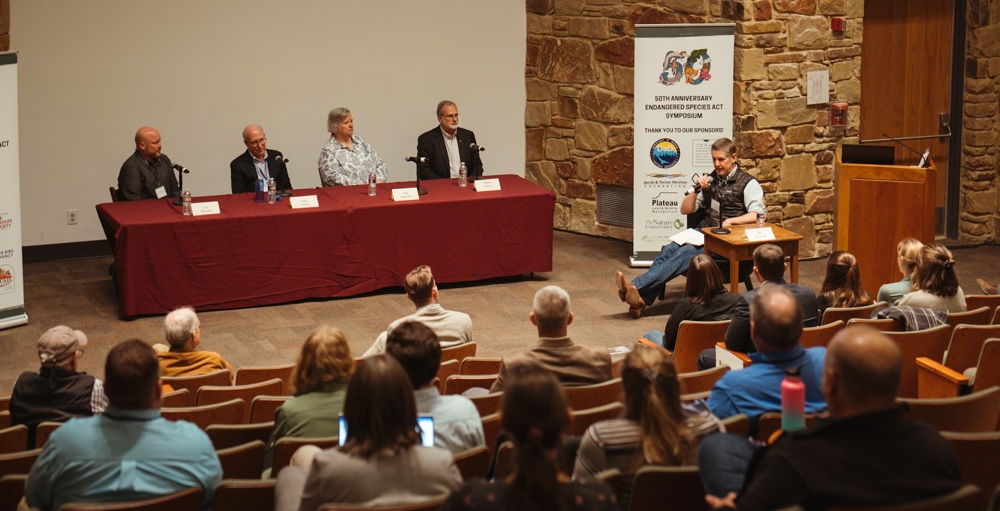
In this episode, we’ll hear from four leaders who have worked in the trenches of conservation for decades, and each of them brings a unique perspective on both the challenges and opportunities that the ESA creates for on-the-ground conservation. The panelists are:
- Gary Frazer – Assistant Director for Ecological Services at the US Fish and Wildlife Service
- Peg Romanik – Recently retired high-ranking attorney from the Department of Interior
- Jimmy Bullock – Senior Vice President at Resource Management Service LLC
- Leo Miranda-Castro – Former USFWS Director and current Executive Director of Conservation without Conflict
All four of these distinguished panelists have worked extensively within the frameworks of the Endangered Species Act, and they bring a wealth of practical and philosophical knowledge about the ESA’s impact over the past 50 years… and its expected impacts in the future. But perhaps more importantly, these four panelists helped me to appreciate the humanity behind the historic, powerful legislation– the smart, dedicated, conservation-minded leaders whose work has allowed the act to effect change and evolve over the past five decades.
We covered a lot during this hour-long discussion, and highlights include: How the ESA switched from a more punitive to a more collaborative approach; concrete examples of productive, collaborative conservation; working with the extreme opinions about climate change; hopes for the future of market-incentivized species conservation; examining potential political threats to the ESA; the evolution of using the ESA for single species conservation to using it for landscape-scale conservation, advice for young people in the conservation field, and much more.
This episode was the last panel discussion of the day, so if you’d like to listen to the first three panels, you can do so below. Those earlier sessions include discussions with everyone from one of the ESA’s authors to some of today’s most renowned conservation thought leaders– I really can’t imagine having a more impressive group of conservation practitioners in one room. You can check out the Symposium program, which includes all the details of the day’s event and speaker bios.
And one more thing: This symposium was organized by the fellows of the James G. Teer Conservation Leadership Institute, which is sponsored by The Texas Chapter of The Wildlife Society. The mission of the Teer Institute is to ensure a future legacy of well-trained conservation leaders by providing professional training in leadership skills and contemporary conservation. I was so impressed with all the fellows and left this event feeling very optimistic about the future of conservation in Texas and beyond.
A huge thank you to the fellows and to Dr. Roel Lopez of Texas A&M University for inviting me down to Austin to moderate this panel. It was an honor to be in the same room with all these amazingly inspiring folks. Hope you enjoy!
All photos by Brittany Wegner
LISTEN & DOWNLOAD:
Apple Podcasts
Spotify
Google Podcasts
…or wherever you get your podcasts!
RESOURCES:
Topics Discussed:
- 4:00 – Introduction
- 10:15 – Peg describes when the ESA switched from a more punitive to a more collaborative approach
- 14:45 – Leo’s example of exceptional collaborative conservation
- 21:00 – How Gary handles extreme opinions about climate change
- 27:00 – Examples of Jimmy’s work with the ESA that became financially sustainable
- 31:30 – Hopes for the future of market-incentivized species conservation
- 34:45 – Examining the security of the ESA
- 39:00 – Discussing the evolution of using the ESA for single species conservation to using it for landscape-scale conservation
- 44:30 – The panel’s advice for young people in this field
- 53:15 – Wrapping up and acknowledgments
Information Referenced:
- James G. Teer Conservation Leadership Institute
- Symposium Program and Speaker Bios
- Endangered Species Act
- Dr. Roel Lopez
- Peg Romanik
- Leo Miranda
- Gary Frazer
- Jimmy Bullock
- Gopher Tortoise
- National Alliance of Forest Owners
- Section 4 listings
- Katherine Hayhoe
- Saving Us by Katherine Hayhoe
- Rio Encantado, Puerto Rico
- Aldo Leopold
- The Ladybird Johnson Wildflower Center
- East Foundation
- Department of Defense Natural Resources
- Texas Parks and Wildlife Foundation
- Hershey Foundation
- Caesar Kleberg Wildlife Research Institute
- The Temple Foundation
- Bowman Consulting
- The Nature Conservancy
- Welder Wildlife Foundation
- Texas A&M
- Aldo Leopold Foundation
Earlier Symposium Sessions
Session One – Past
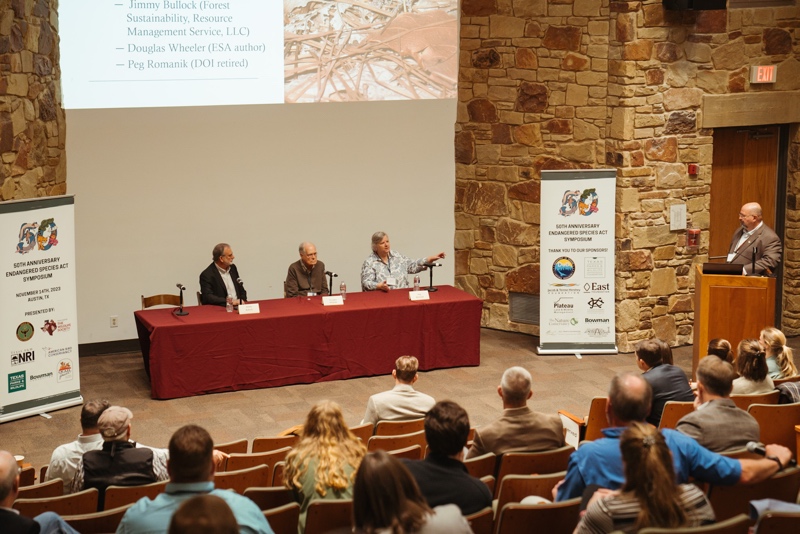
Session Two – Present
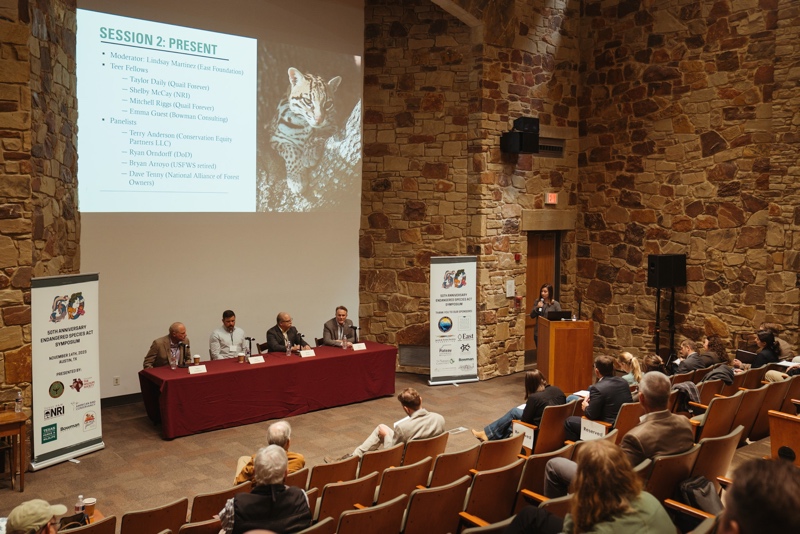
Session Three – Future

Enjoy this episode? Then you might like these too:
- Landscape-Scale Management in a Private Land State
- Equitable Access to the Outdoors in Texas
- Rebuilding a Resilient, Regional Meat Supply Chain – LIVE at the Old Salt Festival
- Erik Glenn Returns – Leadership, Innovation, & Commitment to Conservation
- James Prosek – Art, Philosophy, & Our Natural World
- Matt Cahill – A Deep Dive into the Sagebrush Sea
- Dr. Sara Dant Returns – “Losing Eden: An Environmental History of the American West”
Visit the podcast page for a full list of episodes where you can filter episodes by topic and guests’ vocations.
Paige Lewis – Durable Conservation, Collective Action, and Strategic Thinking
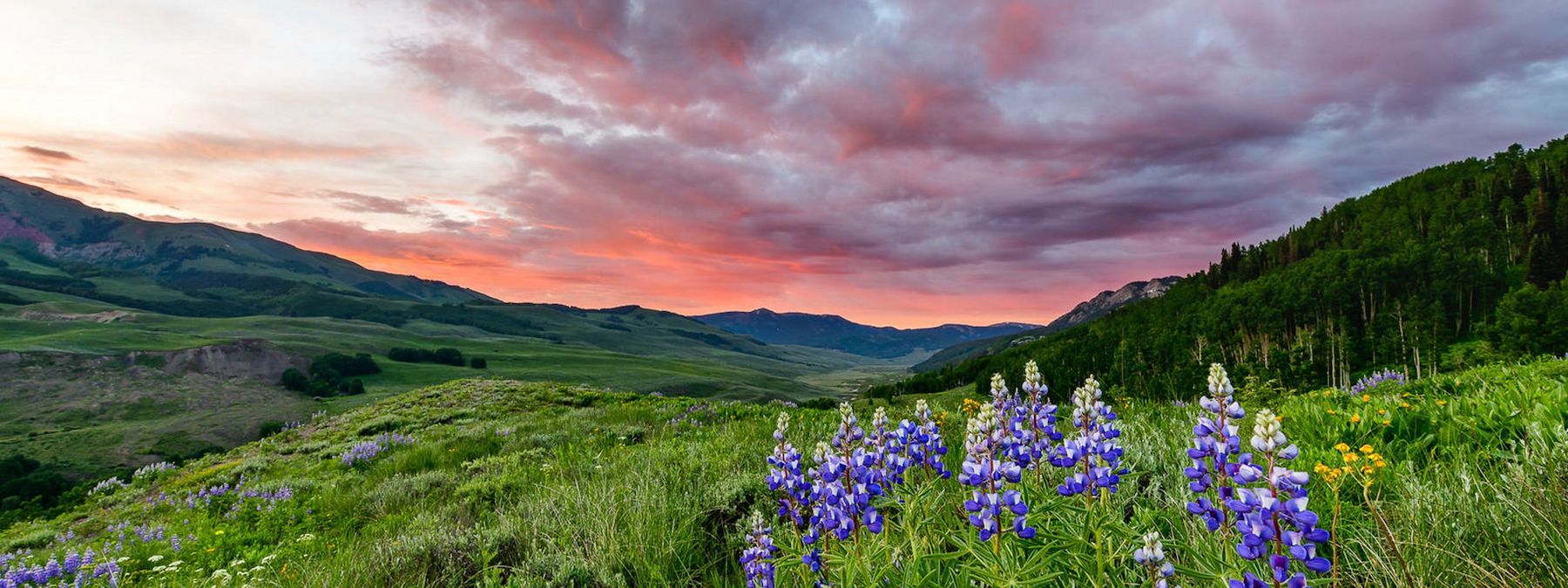
Paige Lewis is the Deputy State Director and Director of Conservation Programs for The Nature Conservancy in Colorado. In this role, she serves as the chapter’s chief conservation officer and is responsible for leading the development of innovative, large-scale and entrepreneurial solutions to the challenges facing people and nature in Colorado and around the world. Paige brings a unique skill set that combines big-picture thinking with tangible, one-the-ground execution– her work involves creating ambitious, large-scale strategies, while also ensuring that the TNC team has the resources, communication, and support to accomplish its goals.
Over the course of this 2023 podcast series with TNC Colorado, we’ve highlighted both the breadth and depth of the organization’s work in Colorado and beyond. From grassland conservation to sustainable water management to forest health to urban conservation efforts (and much more!), it’s been amazing to learn about the positive impact that TNC is having across such a broad spectrum of pressing environmental issues. And if you’ve wondered, as I have, how TNC successfully aligns so many initiatives, teams, and stakeholders toward common organizational goals, well, you’re in luck, because that’s exactly what Paige does!
Paige and I sat down at the TNC office in Boulder just before the holidays and had a fun conversation that looked back at some of the 2023 conservation wins and looked forward toward TNC’s ambitious goals for the future. We started out discussing Paige’s lifelong appreciation for conservation, and her career that took her from her home state of Utah to Washington DC and eventually to Colorado. We discussed her skill of thinking strategically while also focusing on the need to get things done, and how she has managed to keep so many balls in the air year after year. We talk about durable conservation, collective action, and embracing risk, and we also discuss the challenges and opportunities that come with setting ambitious goals. Paige is a voracious reader and lover of history, so she has tons of excellent book recommendations.
A big thank you to Paige for taking the time to chat with me during such a busy time of year, and, once again, thank you for listening. Hope you enjoy.
Header photo by Ethan Herrold/TNC Photo Contest 2019; headshot by Lauryn Wachs.
LISTEN & DOWNLOAD:
Apple Podcasts
Spotify
Google Podcasts
…or wherever you get your podcasts!
EPISODE PARTNER:
This episode is brought to you in partnership with the Colorado chapter of The Nature Conservancy. Guided by science and grounded by decades of collaborative partnerships, The Nature Conservancy has a long-standing legacy of achieving lasting results to create a world where nature and people thrive.
On the fourth Tuesday of every month throughout 2023, Mountain & Prairie will be delving into conversations with a wide range of The Nature Conservancy’s leaders, partners, collaborators, and stakeholders, highlighting the myriad of conservation challenges, opportunities, and solutions here in the American West. You can access all of the 2023 episodes here.
To learn more about The Nature Conservancy’s impactful work in Colorado and around the world, visit www.nature.org/colorado
RESOURCES:
Topics Discussed:
- 3:30 – How Paige became interested in conservation
- 9:15 – Paige’s first conservation job
- 10:45 – Adjusting from the West to DC
- 11:45 – Paige’s return West
- 15:00 – How Paige ended up at TNC
- 18:30 – Paige’s role at TNC
- 23:30 – An example of successful collaborative work in Paige’s time at TNC
- 27:15 – What Paige is most proud of in TNC’s 2023 work
- 30:30 – Reflecting on TNC’s progress towards their 2026 strategic goals
- 34:30 – How Paige prioritizes and keeps all the balls in the air
- 39:45 – What “durable conservation” means and looks like to Paige
- 42:30 – What “collective action” means and looks like to Paige
- 45:30 – How Paige knows when to shift from ideation and relationship building to action
- 48:45 – How TNC’s approach to taking risks has changed during Paige’s tenure
- 52:15 – What qualities Paige thinks makes a good team member at TNC
- 56:15 – Paige’s book recommendations
- 1:02:15 – Paige’s parting words
Information Referenced:
- Paige Lewis
- TNC Colorado’s 2023 Year in Review
- Providence, UT
- Cache Valley
- Bear Mountains
- Wellsville Mountains
- Topophilia by Yi-Fu Tuan
- Logan Canyon
- Utah Division of Forestry, Fire and State Lands
- Western Forestry Leadership Coalition
- Sarah Dant
- Losing Eden by Sara Dant
- Colorado State Forest Service
- Hayman Fire
- Rob Addington
- John Vaillant
- Taylor Hawes
- TNC’s Colorado River Program
- TNC’s work in Mongolia
- TNC’s Southern High Plains Initiative
- Diana Lane
- TNC’s Power to the People and the Planet Program
- Carlos Fernandez
- Catalyst Fund
- Chris Hawkins
- Colorado Outdoor Plan
- Great Outdoors Colorado
- Matt Moorehead
- Legacy of Conquest by Patrica Nelson Limerick
- Fire on the Plateau by Charles Wilkinson
- The Rediscovery of America by Ned Blackhawk
- A Man Called Ove by Frederik Backman
- My Grandmother Asked Me to Tell You She’s Sorry by Frederik Backman
- Demon Copperhead by Barbara Kingsolver
- Animal, Vegetable, Miracle by Barbara Kingsolver
Enjoy this episode? Then you might like these too:
- John Vaillant – A Riveting Exploration of Fire
- Dr. Sara Dant Returns – “Losing Eden: An Environmental History of the American West”
- Erik Glenn Returns – Leadership, Innovation, & Commitment to Conservation
- Carlos Fernández, Part 2 – Creating Conservation Opportunities During Uncertain Times
- Francesca Claverie – A Borderlands Conservation Success Story
- Nate Schweber – A Forgotten Chapter of American Conservation
- Liz Moore – For the Love of Montana
Visit the podcast page for a full list of episodes where you can filter episodes by topic and guests’ vocations.
Jenna Pollard – Timber Framing, Organic Farming, Community, and Purpose

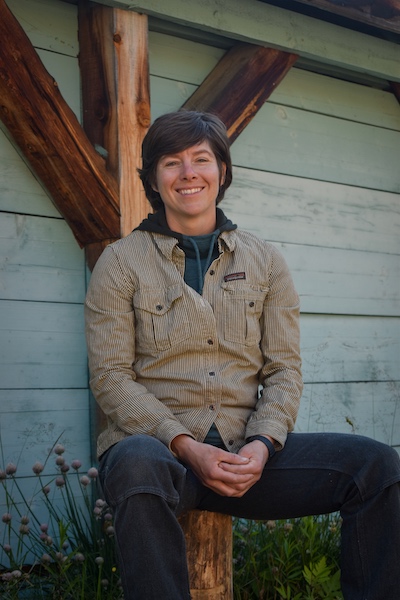
Jenna Pollard is a timber framer, a farmer, and an advocate for organic agriculture, but at her core, she is a teacher. The list of Jenna’s inspiring projects, causes, and interests is too extensive to summarize in a few sentences, but to give you an overview: She hosts workshops for women in which they learn the art of timber framing and build structures as a team from the ground up. She’s a team member with Worldwide Opportunities on Organic Farms (also known as WWOOF), where she helps to provide opportunities for aspiring farmers to build their careers. She’s also a committed traveler, community builder, reader, and all-around inspiring human.
Born and raised in South Dakota, Jenna grew up immersed in the outdoors and various outdoor adventures. After college, she went to work on an organic farm, which began her professional passion for working closely with the land surrounded by a community of like-minded individuals. As you’ll hear, she continued to follow her curiosity and has enjoyed a fulfilling and wide-ranging career– she worked as a teacher in Japan, built her own timber-frame home on the South Dakota prairie, and became deeply involved in helping to develop the skills and confidence of future farmers and timber framers. But if there’s a thread that connects all of Jenna’s work, it’s her commitment to building community through hard work and shared purpose– one of my favorite topics to discuss.
I first learned about Jenna through a short film by Patagonia Workwear that profiled her women’s timber-framing workshops– I’ve linked to the film in the episode notes. So I was thrilled that our schedules aligned so that we could have this conversation, and I learned so much for her. We discussed her upbringing in South Dakota and how her outdoor-focused childhood laid the foundation for her career. We discussed the intricacies of timber framing, and why it is such a powerful skill for building community and confidence. We talk a lot about WWOOF and its Future Farming Program, and Jenna offers some ways that aspiring farmers can get involved. We also discuss books, how Jenna accomplishes so much, how Patagonia has encouraged and supported her work, lessons learned from Japan, and much much more.
If you want to connect with Jenna, attend a workshop, or learn more about WWOOF, there are links to everything in the episode notes. Thanks for listening, hope you enjoy.
Photos courtesy of Jenna Pollard.
LISTEN & DOWNLOAD:
Apple Podcasts
Spotify
Google Podcasts
… or wherever you get your podcasts!
—
RESOURCES:
Topics Discussed:
- 2:30 – Where Jenna grew up
- 4:15 – What Jenna did for fun as a kid
- 6:30 – Turning points in Jenna’s life regarding self-sufficiency in the outdoors
- 8:45 – Post-high school for Jenna
- 11:00 – How something like WWOOFing drew Jenna’s career attention
- 13:30 – Books and thinkers that influenced Jenna’s agrarian lifestyle
- 16:00 – Defining “timber framing,” and exploring why it captured Jenna’s attention
- 20:00 – When Jenna decided to start teaching timber framing
- 21:15 – Discussing the process of Jenna building her house in South Dakota
- 24:45 – How Jenna came to specifically teach women how to timber frame
- 38:15 – How Patagonia became interested in Jenna’s timber framing classes
- 30:45 – Continuing to explore the importance of Jenna’s work with women
- 33:00 – Jenna’s success stories from her classes
- 37:15 – The relationships that Jenna builds through timber framing
- 39:15 – Jenna’s students’ goals
- 40:45 – Discussing WWOOF
- 43:15 – Discussing the 2024 Future Farming Program
- 47:15 – How Jenna manages to do all of this!
- 48:15 – Jenna’s time as a teacher in Japan
- 52:30 – Whether or not Jenna ever questioned her path
- 55:15 – Jenna’s book recommendations
- 1:01:15 – Jenna’s parting words of wisdom
Information Referenced:
- Patagonia film Reframed
- WWOOF
- Places to hear about Jenna’s upcoming classes:
- Email Jenna – jennampollard@gmail.com
- Steger Center
- Canelo Project
- Olympic Outpost
- Timber framing
- Wendell Berry
- Mary Oliver
- The Encyclopedia of Country Living by Carla Emery
- Patagonia
- Patagonia Workwear
- Yvon Chouinard
- Tenkara
- Tribe by Sebastian Junger
- Will Steger
- Patagonia workwear
- Future Farmer Program
- MESA
- Quivira Coalition
- New Agrarian Program
- Kumamoto, Japan
- Jack London
- Just Enough by Azby Brown
- The Art of Taking Action by Gregg Krech
- Shoma Morita
- Jack Sobon
- Pilgrim at Tinker Creek by Annie Dillard (not mentioned in the episode, but this book has been incredibly influential)
Enjoy this episode? Then you might like these too:
- Anna Borgman – Obsession, Curiosity, and Purpose-Driven Work
- Christy Sing Robertson – On Grit, Hard Work, & Going All In
- Jesse Griffiths – Humility, Curiosity, and Creative Cuisine
- Kathie Sever – Chainstitching, Craftsmanship, and Cosmic Western Wear
- Cate Havstad-Casad, Part 2 – Building Businesses for the Greater Good
- Jess Mudgett – Humble & Grateful
- Megan Torgerson – Storytelling from Rural America
Visit the podcast page for a full, searchable list of episodes
Diana Lane & Aaron Derwingson – Thriving Rivers, Resilient Agriculture, and Strong Communities
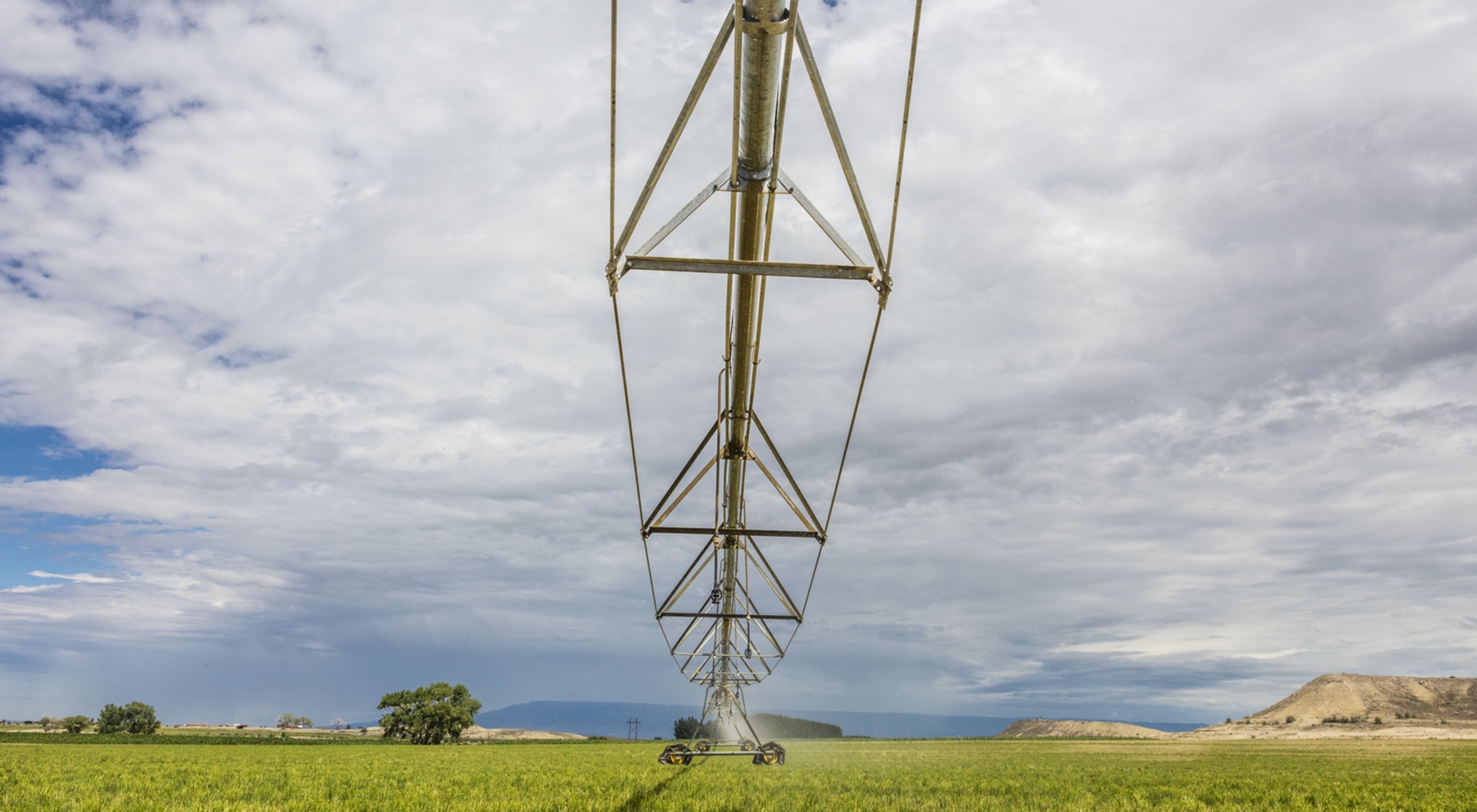
Diana Lane is the Director of Sustainable Food and Water at the Colorado Chapter of the Nature Conservancy, and Aaron Derwingson is the Water Projects Director for the Nature Conservancy’s Colorado River Program. Both Diana and Aaron work at the intersection of water sustainability, thriving rivers, resilient agriculture, and strong communities– harnessing TNC’s relationships and resources to advance some of the most cutting-edge and effective conservation initiatives in the American West.
Diana and Aaron bring a diverse set of skills and experiences to their work at TNC. Diana holds a PhD in Biological Sciences and has spent much of her career working with a wide array of partners on restoration ecology and planning, climate adaptation, and management of public funding. Aaron is a river guide-turned-conservationist who began his career focusing on conservation in the Rio Grande River basin, and now applies his skills toward creating pragmatic, solution-oriented approaches to freshwater challenges in the greater Colorado River basin. But perhaps most importantly, they both bring a deep level of passion and focus to their work– their optimistic commitment to solving some of the West’s most pressing water and agricultural challenges is infectious.
Diana, Aaron, and I connected virtually and had an educational and inspiring conversation about water, agriculture, and community here in Colorado and beyond. We discussed some of the most urgent water-related challenges and opportunities and how they are working with a wide range of stakeholders to find mutually beneficial solutions. We discuss the Yampa River fund, their work helping agricultural producers adjust to a drier climate, and the all-important role of building solid relationships with stakeholders. We discussed the Maybell Irrigation Ditch Project, which is a fascinating, win-win project for both producers and recreational river users, and we discussed some of the water-related challenges that keep both Diana and Aaron up and night. And as usual, they both have plenty of excellent book recommendations.
A huge thank you to Diana and Aaron for taking the time to talk with me, and thank you for listening. Hope you enjoy!
Header photo by Ken Geiger; all photos courtesy of the Nature Conservancy.
LISTEN & DOWNLOAD:
Apple Podcasts
Spotify
Google Podcasts
…or wherever you get your podcasts!
EPISODE PARTNER:
This episode is brought to you in partnership with the Colorado chapter of The Nature Conservancy. Guided by science and grounded by decades of collaborative partnerships, The Nature Conservancy has a long-standing legacy of achieving lasting results to create a world where nature and people thrive.
On the fourth Tuesday of every month throughout 2023, Mountain & Prairie will be delving into conversations with a wide range of The Nature Conservancy’s leaders, partners, collaborators, and stakeholders, highlighting the myriad of conservation challenges, opportunities, and solutions here in the American West. You can access all of the 2023 episodes here.
To learn more about The Nature Conservancy’s impactful work in Colorado and around the world, visit www.nature.org/colorado
RESOURCES:
Topics Discussed:
- 3:30 – Diana and Aaron’s backgrounds
- 7:30 – Aaron’s read on the future of water
- 12:30 – Diana’s overview of the Yampa River Fund
- 18:30 – Aaron’s work with producers to adjust to the new water reality
- 23:15 – The process of building relationships with producers for water projects
- 27:00 – The Colorado Water Plan’s impact on Diana and Aaron’s work
- 31:45 – Discussing the Yampa River Fund
- 41:15 – The things about Colorado water that keep Diana and Aaron up at night
- 47:15 – What makes a solid conservation professional
- 51:00 – How you can help TNC in this work
- 55:30 – Diana and Aaron’s book recommendations
- 1:00:00 – Parting requests and words of wisdom
Information Referenced:
- TNC Colorado
- Dr. Diana Lane
- Aaron Derwingson
- Upper San Juan Watershed Enhancement Project
- Colorado Agricultural Water Alliance
- Evaluating Conserved Consumptive Use In The Upper Colorado
- Yampa River Fund
- Gulf Oil Spill 2010
- Colorado River Program
- Rio Grande Headwaters Land Trust
- Taylor Hawes
- Matt Cahill
- Maybell Irrigation Ditch Project
- Matt Moorehead
- Yampa River video from TNC
- Bioneers
- Nature’s Operating Instructions by The Bioneers
- Ecological Literacy by The Bioneers
- The Last Ranch by Sam Bingham
- Eager by Ben Goldfarb
- Water Always Wins by Erica Gies
Enjoy this episode? Then you might like these too:
- Taylor Hawes – Innovative Conservation in the Colorado River Basin
- Corissa Busse – Tribal-Led Buffalo Restoration in the American West and Beyond
- Erik Glenn Returns – Leadership, Innovation, & Commitment to Conservation
- Matt Cahill – A Deep Dive into the Sagebrush Sea
- SHED SESSION: Everything I Know About Landing a Job in the Conservation World
- Live from the Strenuous Life Retreat: In Conversation with Nancy Fishbein
- Cole Mannix – Building Community through Land Stewardship and Local Food
- Lorelei Cloud – Solving Modern-Day Challenges with Ancient Tribal Wisdom
Visit the podcast page for a full list of episodes where you can filter episodes by topic and guests’ vocations.
John Vaillant – A Riveting Exploration of Fire
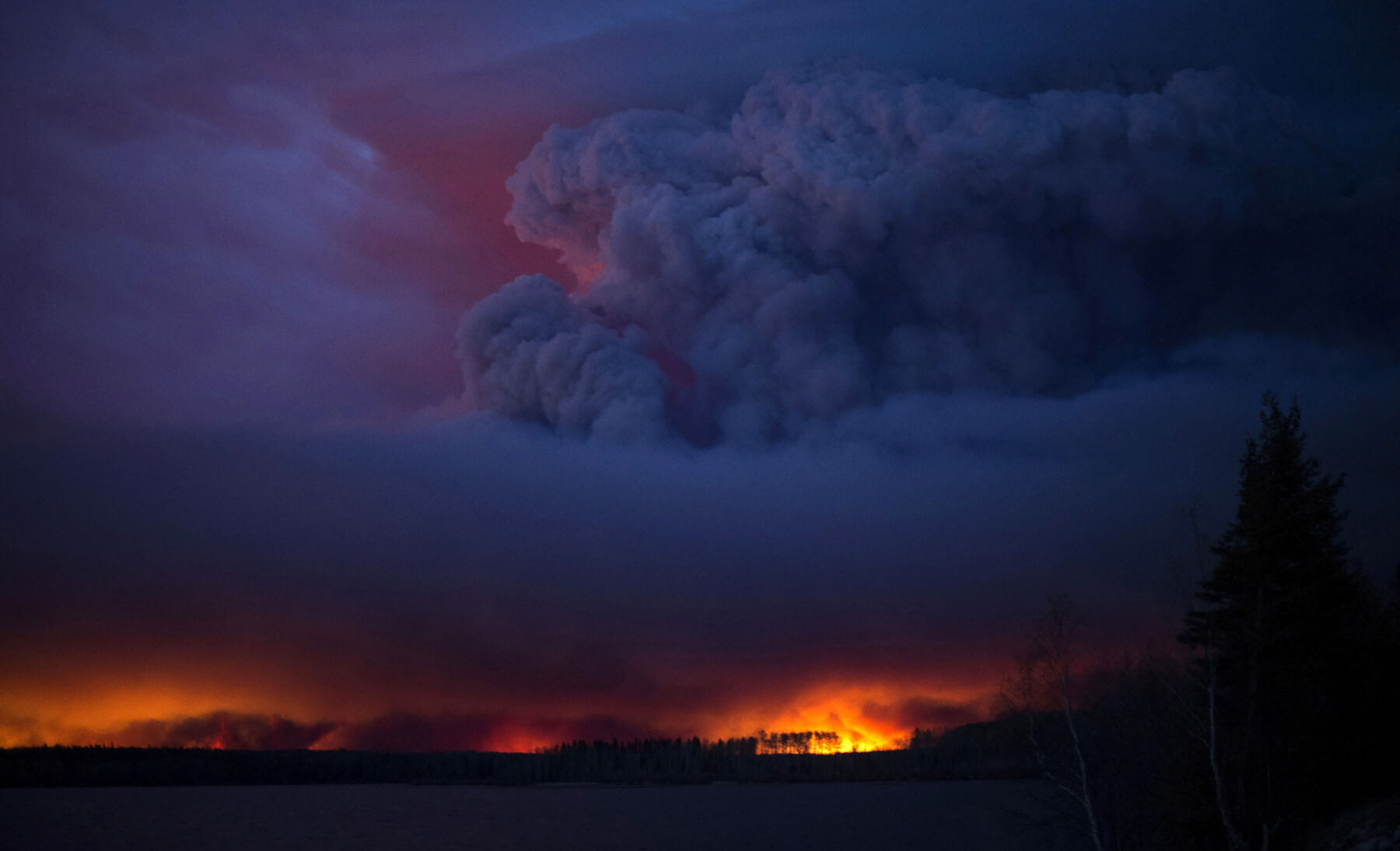
John Vaillant is a renowned writer and journalist whose work has appeared in The New Yorker, The Atlantic, National Geographic, and more, and he’s also the author of classic books including The Tiger and The Golden Spruce. His most recent book is titled Fire Weather: A True Story from a Hotter World, which is a must-read for anyone interested in wildfires, humans’ relationship with fire, and the future of fire-related disasters. And you don’t have to take my word for it– the book won the 2023 Baillie Gifford Prize for Non-Fiction and was a finalist for both the National Book Award and the Hilary Weston Writers’ Trust Prize for Nonfiction.
Fire Weather tells the story of the 2016 Fort McMurray wildfire– a historic and apocalyptic fire that torched the city of Fort McMurray, Alberta, and spread across nearly 1.5 million acres of forest. With this epic disaster as the focal point, John masterfully weaves in the fascinating histories of fire, the fossil fuel industry, and climate science. He also explores 21st-century wildfires– why they are hotter, more aggressive, and more destructive than anything we’ve seen before. Whether you’re interested in the science of fire and forest health, the fascinating relationship between humans and fire, or you’re just looking for a book that you won’t be able to put down, I give Fire Weather my highest endorsement.
Wildfires are obviously becoming more and more intense and destructive here in the West, so I was excited to chat with John and dig deeper into the history of fire and the outlook for the future. We discussed why he decided to devote many years to writing about this particular wildfire, and how the book’s ingenious structure came to him in a dream. We talk about the similarities between living beings and fire, a fascinating idea known as the Lucretius Problem, some of the story’s larger-than-life characters, John’s long-term goals for the book, some of his favorite books, and much, much more.
A huge thanks to John for writing such an impactful book and for taking the time to chat with me. I encourage you to pick up a copy of Fire Weather as soon as you can, but in the meantime, enjoy this wide-ranging conversation with John Vaillant.
Header photo: Chris Schwarz / Government of Alberta / Reuters; Headshot: John Sinal
LISTEN & DOWNLOAD:
Apple Podcasts
Spotify
Google Podcasts
… or wherever you get your podcasts!
—
RESOURCES:
Topics Discussed:
- 3:30 – When John realized he wanted to write about fire
- 11:15 – The surprising significance of dreams in John’s writing
- 14:15 – How John organizes the information in his head so he can write
- 19:45 – A brief note on pacing, and the similarities between living beings and fire
- 30:45 – The Lucretius Problem
- 35:45 – How John finds the characters for his book
- 44:15 – How John handles writing about someone in a less-than-flattering light
- 52:00 – John’s goals for his book, Fire Weather
- 57:30 – John’s book recommendations
- 1:02:15 – John’s parting words of wisdom
Information Referenced:
- Fire Weather by John Vaillant
- The Tiger by John Vaillant
- The Golden Spruce by John Vaillant
- The Jaguar’s Children by John Vaillant
- Johnathon Dee
- Fort McMurray, Alberta
- Tubbs Fire
- Paradise Fire
- Camp Fire
- Lucretius
- Alex Steffen
- Marshall Fire
- Lahaina, HI
- The Johnstown Flood by David McCullough
- Endurance by Alfred Lansing
- Shackleton expedition
- Moby Dick by Herman Melville
- Paddle to the Sea by Holling C. Holling
- The Tree and the Trail by Holling C. Holling
- Mike Mulligan and His Steam Shovel by Virginia Lee Burton
- Life Story by Virginia Lee Burton
Enjoy this episode? Then you might like these too:
- Rob Addington – A Deep Dive into Western Wildfires and Forest Health
- Hampton Sides – Live at the Aspen Institute
- Dr. Sara Dant Returns – “Losing Eden: An Environmental History of the American West”
- Douglas Brinkley – Exploring the Past to Find Inspiration for the Future
- Doug Peacock – 50 Years of Fighting for the Grizzlies
- Bryce Andrews, Part 2 – “Holding Fire”
- Auden Schendler – The Optimistic Pragmatist
- David Gessner Returns – “A Traveler’s Guide to the End of the World”
Visit the podcast page for a full, searchable list of episodes
Dr. Sara Dant Returns – “Losing Eden: An Environmental History of the American West”
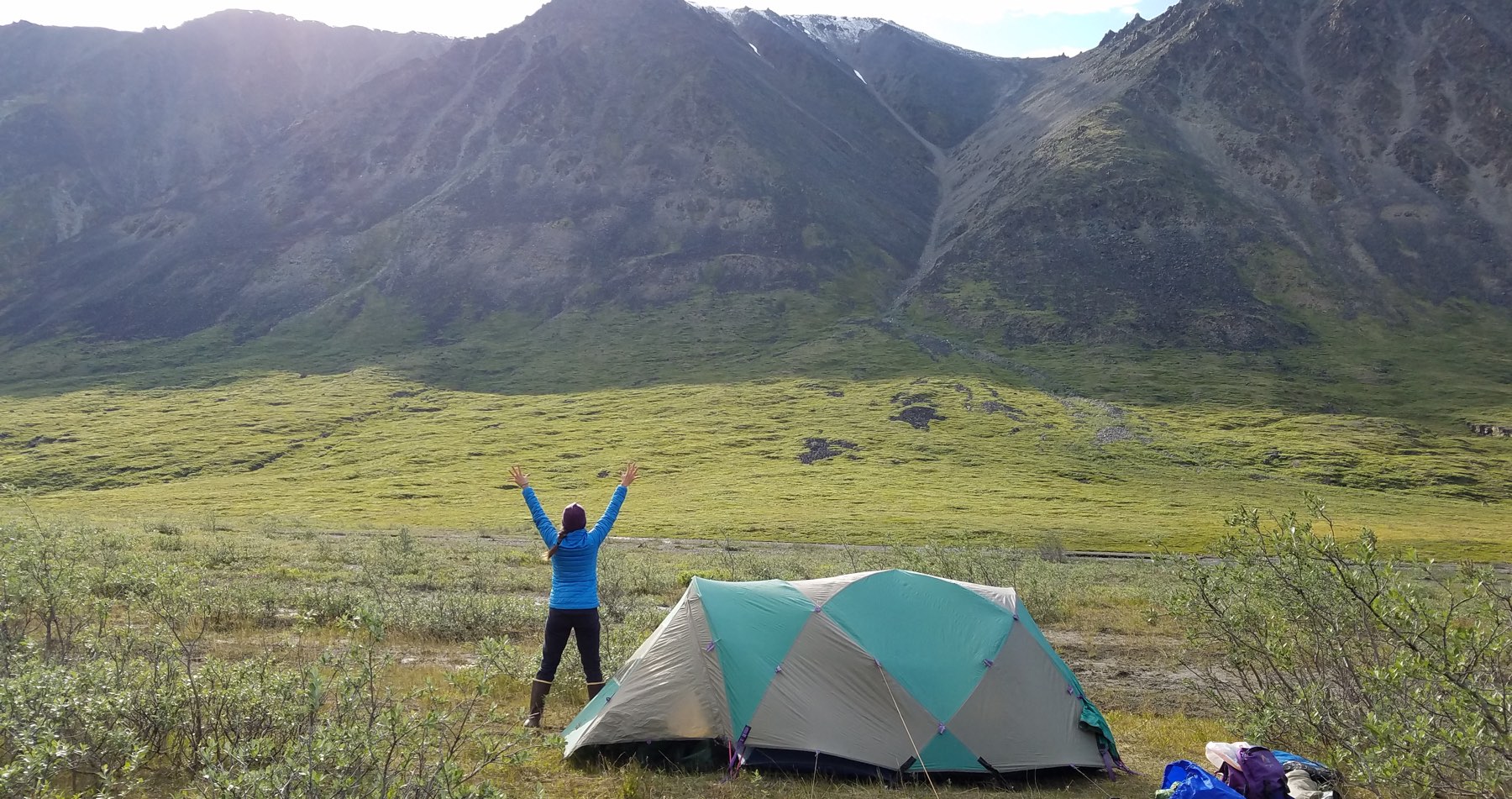
Dr. Sara Dant is a Brady Presidential Distinguished Professor of history at Weber State University, and she’s the author of one of my most-often recommended books, Losing Eden: An Environmental History of the American West. She is also one of the featured historians in Ken Burns’ newest documentary, The American Buffalo, which you can watch for free on the PBS website. Sara’s work focuses on environmental politics in the United States with a particular emphasis on the creation and development of consensus and bipartisanism, and she is especially skilled at presenting complex, sometimes controversial topics in an engaging and fun-to-learn manner.
In June of 2023, Sara updated and republished her book Losing Eden– she added some chapters, revised some of the content, and added lots of maps, photos, and additional resources. She somehow managed to make one of my favorite books even better. For anyone who is looking for a thorough yet fun-to-read overview of this complex region known as the American West, I can’t recommend it enough. From the migration of the first humans into North America to modern-day controversies around energy development, the book provides a solid foundation and acts as a launching point to dig into whatever specific time period you may find interesting.
Longtime listeners will remember my first conversation with Sara back in 2018, in which we discussed the early phases of North American environmental history, the tragedy of the commons, conservation vs preservation, and more. In this conversation, we focus on mostly recent environmental history, including the historic environmental legislation of the 1960s and 70s, legendary senator Frank Church, and the backlash to environmental regulation that led to movements such as the Sagebrush Rebellion. We also discuss Sara’s perspective-shifting Alaska adventure, the value of wild places, her experience working with Ken Burns, book recommendations, and much, much more.
I always enjoy my visits with Sara, and I can’t thank her enough for how generous she is with sharing her time, wisdom, and expertise. I’d encourage you to pick up a copy of the new Losing Eden, but in the meantime, enjoy this conversation with Dr. Sara Dant.
Photos courtesy of Sara Dant.
LISTEN & DOWNLOAD:
Apple Podcasts
Spotify
Google Podcasts
… or wherever you get your podcasts!
—
RESOURCES:
Topics Discussed:
- 3:30 – Why Sara decided to republish Losing Eden
- 7:00 – The guiding idea of “At what cost?”
- 10:00 – The myth of “right or wrong,” “good or bad”
- 16:15 – Using history to understand our current political situation
- 19:30 – Optimistic examples of positive political environmental bipartisanship
- 23:30 – The legendary Idaho senator, Frank Church
- 28:00 – James Watt and the backlash to environmental regulation
- 34:00 – Divisiveness as a power-grabbing tool
- 43:00 – Sara’s 2019 life-changing trip to Alaska
- 46:30 – What is the value of wild places?
- 54:15 – Participating in the new Ken Burns documentary
- 56:30 – Something new that Sara has recently learned
- 1:02:30 – Book recommendations and further reading
- 1:10:30 – Parting words of wisdom
Information Referenced:
- Dr. Sara Dant
- Losing Eden: An Environmental History of the American West
- Sara’s first M&P episode
- Weber State University
- Spotted Owl controversy
- Frank Chuch
- Sierra Club
- Grangeville, Idaho
- Gospel Hump Wilderness
- The Wilderness Act
- Endangered Species Act
- Great Salt Lake dry-up threat
- College of Eastern Utah
- Fighting the Odds: The Life of Senator Frank Church by LeRoy Ashby and Rod Gramer
- Wild and Scenic Rivers
- James Watt
- James Watt obituary
- Ronald Reagan
- Sagebrush Rebellion
- Bears Ears National Monument
- Arctic National Wildlife Refuge
- Hula Hula River
- William Cronon’s The Trouble with Wilderness
- Aldo Leopold
- Mo Udall
- Stewart Udall
- Frank Church – River of No Return Wilderness
- Hells Canyon
- Echo Park
- Doug Peacock
- The American Buffalo by Ken Burns
- Wild New World by Dan Flores
- Invisible Reality: Storytellers, Storytakers, and the Supernatural World of the Blackfeet by Rosalyn R. LaPier
- Silent Spring by Rachel Carson
- Silent Spring Revolution by Douglas Brinkley
- Overshootday.org
Enjoy this episode? Then you might like these too:
- Douglas Brinkley – Exploring the Past to Find Inspiration for the Future
- Lorelei Cloud – Solving Modern-Day Challenges with Ancient Tribal Wisdom
- Rebecca Clarren – “The Cost of Free Land”
- Corissa Busse – Tribal-Led Buffalo Restoration in the American West and Beyond
- David Gessner Returns – “A Traveler’s Guide to the End of the World”
- Doug Peacock – 50 Years of Fighting for the Grizzlies
- Taylor Hawes – Innovative Conservation in the Colorado River Basin
Visit the podcast page for a full, searchable list of episodes
Corissa Busse – Tribal-Led Buffalo Restoration in the American West and Beyond

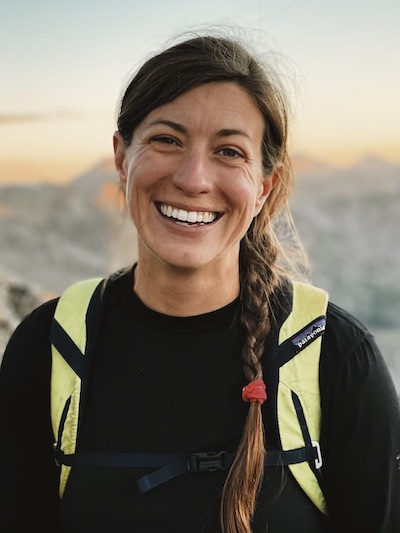
Corissa Busse is the Buffalo Restoration Program Manager for The Nature Conservancy, where she oversees TNC’s work to advance Tribal-led efforts to restore buffalo, grasslands, and communities at scale. Based in Rapid City, South Dakota, Corissa and her team at TNC partner with organizations including the InterTribal Buffalo Council and the Tanka Fund to bring buffalo back to tribal lands, which not only contributes to healthier, more resilient landscapes, but helps to heal and restore a web of natural relationships that has been broken for hundreds of years.
TNC has been working with buffalo for many decades now, and it owns herds at numerous TNC preserves across the United States. Each year, those herds produce approximately 1,500 buffalo that are in need of new homes, so TNC has begun working with Tribal nations to transfer these buffalo from the TNC preserves onto Native lands. But transferring the animals from one place to another is relatively simple– it’s the trust-building, infrastructure development, and long-term, collaborative vision that requires strong relationships and outside-the-box thinking. As you’ll hear in this conversation, it’s a complex and important project with amazing potential.
I’ve always loved learning about buffalo, and given the recent release of Ken Burns’ newest documentary on this very subject, I was extra excited to chat with Corissa. We started out with the most basic question of all– “Should we call them bison or buffalo?”– and then moved into the more complex topics. We discussed when and why TNC initially became interested in buffalo, TNC’s history of working with Tribal partners, the challenges of overcoming historical realities, the potential for tension between cattle and buffalo producers, specific success stories from TNC’s buffalo restoration work, the all-important role of strong relationships, resources to learn more about buffalo, and Corissa offers some excellent book recommendations.
I greatly appreciate Corissa taking the time out of her busy schedule to educate me on the finer details of buffalo as well as the large-scale vision for TNC’s work. I learned a lot from this conversation, and I know you will too. Thanks for listening and I hope you enjoy.
Header photo by John Fielder courtesy of The Nature Conservancy, headshot courtesy of Corissa Busse
LISTEN & DOWNLOAD:
Apple Podcasts
Spotify
Google Podcasts
…or wherever you get your podcasts!
EPISODE PARTNER:
This episode is brought to you in partnership with the Colorado chapter of The Nature Conservancy. Guided by science and grounded by decades of collaborative partnerships, The Nature Conservancy has a long-standing legacy of achieving lasting results to create a world where nature and people thrive.
On the fourth Tuesday of every month throughout 2023, Mountain & Prairie will be delving into conversations with a wide range of The Nature Conservancy’s leaders, partners, collaborators, and stakeholders, highlighting the myriad of conservation challenges, opportunities, and solutions here in the American West. You can access all of the 2023 episodes here.
To learn more about The Nature Conservancy’s impactful work in Colorado and around the world, visit www.nature.org/colorado
RESOURCES:
Topics Discussed:
- 3:30 – Is it buffalo or bison?
- 6:30 – A brief history of buffalo in the US
- 10:30 – Books and resources that have helped Corissa learn more about the history of buffalo
- 13:45 – TNC’s interest in buffalo
- 17:00 – TNC’s history of relationship-building with Tribal nation partners
- 22:15 – How buffalo from TNC’s herds are transferred to other partners
- 23:30 – Exploring the tension between cattle and buffalo businesses
- 27:15 – Examples of the success of Corissa’s program
- 31:15 – Measuring success in this work
- 35:00 – The challenges in this work that Corissa worries about
- 39:15 – The market for buffalo
- 42:15 – How Corissa got into work with buffalo
- 48:00 – The importance of relationships to Corissa’s work
- 52:30 – Corissa’s book recommendations
- 56:00 – Ways you can support Corissa’s work, and Corissa’s parting words of wisdom
Information Referenced:
- Corissa Busse
- The Nature Conservancy
- Corrisa’s buffalo restoration work
- “The American Buffalo” by Ken Burns
- The Ecological Buffalo by Wes Olson
- Dan Flores
- Sara Dant
- Zapata Ranch
- Matt Moorehead and Galen Guerrero-Murphy
- Intertribal Buffalo Council
- Tonka Fund
- Eastern Shoshone
- Northern Arapaho
- Vincent Stanley
- Catalyst Fund
- Oceti Sakowin Oyate (Sioux) Nation
- Seneca Nation
- Haudenosaunee Confederacy (Iroquois)
- Braiding Sweetgrass by Robin Wall Kimmerer
- Whitener Group
- Indian Country 101 training
Enjoy this episode? Then you might like these too:
- Lorelei Cloud – Solving Modern-Day Challenges with Ancient Tribal Wisdom
- Rebecca Clarren – “The Cost of Free Land”
- Doug Peacock – 50 Years of Fighting for the Grizzlies
- Matt Moorhead & Galen Guerrero-Murphy – Grasslands Conservation on the Southern High Plains
- Cole Mannix – Building Community through Land Stewardship and Local Food
- Francesca Claverie – A Borderlands Conservation Success Story
- Betsy Gaines Quammen – A Fascinating History of Public Lands in the West
Visit the podcast page for a full list of episodes where you can filter episodes by topic and guests’ vocations.
Vincent Stanley – Lessons Learned from Patagonia’s First Fifty Years

Vincent Stanley is the Director of Philosophy at Patagonia, and he holds the honor of being the company’s longest-serving employee. He is also an author, poet, and a resident fellow at the Yale Center for Business and the Environment. His most recent book, which he co-authored with Patagonia’s founder Yvon Chouinard, is titled The Future of the Responsible Company: What We’ve Learned from Patagonia’s First 50 Years.
The book recounts Patagonia’s evolution from its humble beginnings as a small offshoot of Chouinard Equipment for Alpinists to becoming the world’s premiere outdoor apparel brand into its current role of serving as a blueprint for how business can be a force for good in the world. In less than 200 pages, Vincent delves into Patagonia’s greatest business challenges, victories, and missteps, and he explains Patagonia’s never-ending quest to become more responsible, more thoughtful, and more effective in achieving its mission of “saving our home planet.”
My first real exposure to Patagonia’s business model was when I was a student in graduate school, earning my MBA. I read Yvon’s book Let My People Go Surfing, and realized that many of the business lessons and philosophies from Patagonia stood in stark contrast to those of mega-corporations. Patagonia’s approach opened my mind to a different way of thinking about business, one that led me to follow a much different path than I’d planned when I initially showed up at grad school. So it was a real honor to have the conversation with Vincent and dig even deeper into the philosophies, ideals, and tactics that have made Patagonia such a legendary enigma in the world of big-time business– and a role model for me and countless other business owners.
Vincent and I connected virtually– he was in Maine, I was in Colorado– and we talked about all aspects of the book, as well as his long and storied history at Patagonia. You can check out the episode notes for a full list of everything we discussed, and I would highly recommend you pick up a copy of The Future of the Responsible Company– it’s chock full of actionable, applicable wisdom that anyone with a job would benefit from knowing.
Thanks to Vincent for taking the time to chat, thanks to you for listening, and I hope you enjoy.
Photos courtesy of Patagonia
LISTEN & DOWNLOAD:
Apple Podcasts
Spotify
Google Podcasts
… or wherever you get your podcasts!
—
RESOURCES:
Topics Discussed:
- 3:00 – How Vincent became involved in Patagonia
- 7:00 – Why Vincent and Yvon decided to update The Responsible Company, and a history of changes at Patagonia
- 24:00 – When Vincent realized there was interest in and demand for the business model and values of Patagonia
- 28:00 – Differentiating between “responsible” and “sustainable”
- 31:00 – How Vincent and Patagonia approach the work of marketing
- 34:30 – The unconventional business performance indicators and evaluations that Patagonia employs
- 37:15 – Why books are important in Vincent and Patagonia’s work
- 41:15 – Who and what gives Vincent hope for the future
- 44:15 – Reconciling the guilt of “messing up”
- 50:15 – Vincent’s book recommendations
- 53:00 – Vincent’s parting words of wisdom
Information Referenced:
- Vincent Stanley
- Patagonia
- Yvon Chouinard
- The Future of the Responsible Company by Yvon Chouinard & Vincent Stanley
- All Patagonia Books
- San Joaquin Valley
- Wilkes-Barre, PA
- United Nations Sustainable Development Goals
- Laudato Si’ by Pope Francis
- Syrian Civil War
- Dr. Michael Kami
- Let My People Go Surfing by Yvon Chouinard
- Milton Friedman
- Dylan Tomine
- Frances B. Ashforth
- DamNation film
- Patagonia Books
- Malinda Chouinard
- Doug Tompkins
- Kristine Tompkins
- Doug Peacock
- Rick Ridgeway
- Tom McGuane
- Jim Harrison
- Greenwich Village
- Hurricane Lee
- Daniel Goleman
- The End of Nature by Bill McKibben
- Wallace Stevens
- William Carlos Williams
- Kate Raworth
- Donut Economics
- John Fullerton
- The Capital Institute
- Middlemarch by George Eliot
Enjoy this episode? Then you might like these too:
- Nick Offerman – Empathy, Nuance, & Good Hard Work
- Anna Borgman – Obsession, Curiosity, and Purpose-Driven Work
- Doug Peacock – 50 Years of Fighting for the Grizzlies
- Rick Ridgeway – Purpose-Driven Adventurer
- Lorelei Cloud – Solving Modern-Day Challenges with Ancient Tribal Wisdom
- Dr. Katharine Hayhoe – Effecting Change Through Authentic Conversation
- Dylan Tomine – Protecting What He Loves
Visit the podcast page for a full, searchable list of episodes
Rebecca Clarren – “The Cost of Free Land”
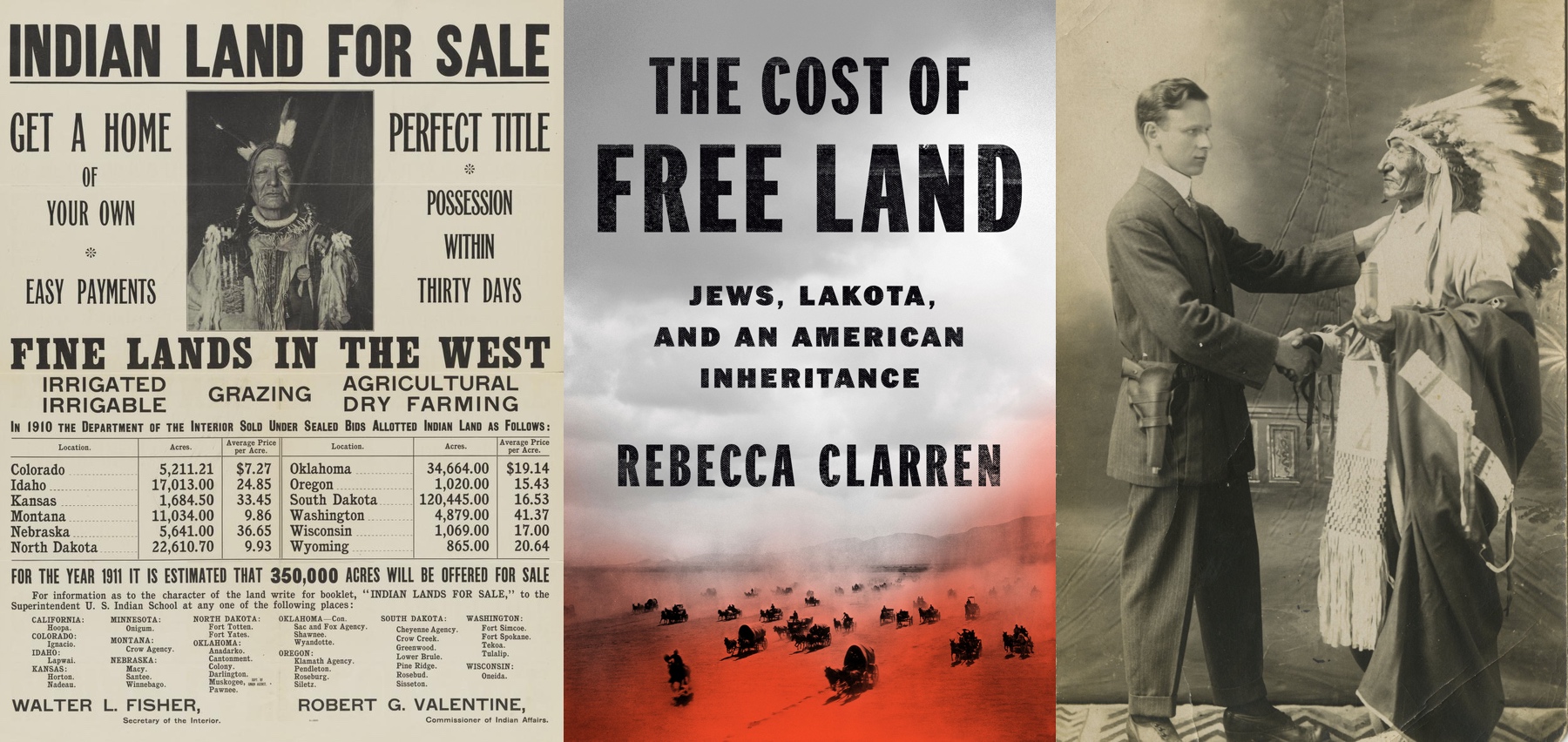
Rebecca Clarren is an award-winning journalist who has been writing about the American West for more than twenty years. Her most recent book is titled The Cost of Free Land: Jews, Lakota, and an American Inheritance. The book is a powerful, nuanced, and deeply personal exploration of her ancestors fleeing antisemitism in Russia and immigrating to the South Dakota prairie at the turn of the 20th century. I was lucky enough to receive an advanced copy of the book, and I absolutely loved it. Rebecca seamlessly weaves together heavily researched US and Native American history with a vulnerable, clear-eyed examination of her family’s legacy. The result is an engaging story that not only helped me better understand the past, but provided a blueprint for how we can begin to make amends and move forward, both individually and as a nation.
In The Cost of Free Land, Rebecca grapples with the complicated ripple effects of her family settling on the Great Plains– the free land that they received from the US government allowed them to establish a foothold in America, and over time, they found relative stability, especially when compared to their chaotic lives in Russia. But her family’s stability and eventual success came at a steep cost to the Lakota people, who were the victims of stolen land, broken treaties, and the devastating loss of their culture and resources. Contrasting her family’s experience with that of the Lakota makes this story all the more powerful, and speaks volumes about Rebeccs’s skill as a writer and journalist. Again, I loved the book.
Rebecca and I connected the day before the book was published, and we had a wonderful conversation. We started by discussing why she decided to write such a deeply personal story, and how that differs from most of her previous journalistic endeavors. She provides a brief overview of the Lakota people and the laundry list of injustices they faced during westward expansion. We discuss the complicated nature of land ownership on reservations, and how those complications continue even to this day. She explains how the US’s treatment of Native American influenced Hitler and the Nazi Party, and how she personally processes her family’s role in Westward expansion by working with spiritual mentors and exploring her own Jewish faith. We also talk about her career as a journalist, how motherhood has changed her, the challenge of writing, and she has lots of great book recommendations.
Thanks to Rebecca for writing such an important and eye-opening book, and thank you for listening. Hope you enjoy!
Photos courtesy of Rebecca Clarren and Viking Books.
LISTEN & DOWNLOAD:
Apple Podcasts
Spotify
Google Podcasts
… or wherever you get your podcasts!
—
RESOURCES:
Topics Discussed:
- 3:15 – When Rebecca decided to write “The Cost of Free Land”
- 9:15 – Discussing the vulnerable process of capturing not just Rebecca’s story, but her entire family’s story and how it ties in with American histories of stolen land
- 18:15 – Discussing empathy in the difficult stories of Rebecca’s book
- 21:30 – A brief history of the Lakota and the injustices they faced during westward expansion
- 27:00 – Discussing the complicated nature of land ownership on Indigenous reservations, and how the US Government still influences land decisions on reservations
- 30:45 – Discussing the historical implications of US land theft from Indigenous peoples, including how it influenced the actions of the Nazis during the Holocaust
- 33:15 – The Six Steps of Repentance and how Rebecca processes the violent past of the US and how she benefited from it
- 40:45 – The biggest surprise about Rebecca’s family that she learned in writing this book
- 43:15 – Surprises in Rebecca’s research about the Lakota
- 48:00 – Where Rebecca thinks the world of journalism is going
- 51:15 – Rebecca’s career trajectory
- 55:15 – How having kids impacted Rebecca’s approach to work
- 58:30 – The difficulty of writing
- 59:30 – Rebecca’s book recommendations
- 1:05:45 – Rebecca’s parting words of wisdom
Information Referenced:
- Rebecca Clarren
- The Cost of Free Land by Rebecca Clarren
- Kickdown by Rebecca Clarren
- High Country News
- Pine Ridge Reservation
- Lakota
- Investigate West
- Sioux tribe
- Dakota
- The Regional Arts and Culture Council
- Yiddish
- Pogrom
- Abby Abinanti
- Yurok nation
- Rabbi Benjamin Barnett
- Havruta
- Torah
- Talmud
- Cathy Park Hong
- Ann Tweedy
- Treaty of Fort Laramie
- Tim Giago
- Lakota Times
- Ed Marston
- Josh Meisel
- Haskell Indian Nations University
- Indian Land Tenure Foundation
- Lorelai Cloud
- Hitler’s American Model by James Whitman
- Maimonides
- On Repentance and Repair by Danya Ruttenberg
- Wounded Knee Massacre
- Cheyenne River Sioux Tribe
- Remi Bald Eagle
- Smith College
- Denali National Park
- Durango Herald
- Mariana Islands
- Betsy Marston
- The Plague of Doves by Louise Erdrich
- Late Nights on Air by Elizabeth Hay
- Cloud Atlas by David Mitchel
- Let the Great World Spin by Collin McCan
- Joan Didion
- Custer Died for Our Sins by Vine Deloria Jr.
- Killers of the Flower Moon by David Grann
Enjoy this episode? Then you might like these too:
- Douglas Brinkley – Exploring the Past to Find Inspiration for the Future
- Lorelei Cloud – Solving Modern-Day Challenges with Ancient Tribal Wisdom
- David Gessner Returns – “A Traveler’s Guide to the End of the World”
- Doug Peacock – 50 Years of Fighting for the Grizzlies
- Bryce Andrews, Part 2 – “Holding Fire”
- Shane Doyle – Reverence for the Past, Hope for the Future
- Marci McLean & Cora Neumann on COVID’s Impact on Native Communities
- Juanita Vero, Part 2 – A Deep Desire to Serve
Visit the podcast page for a full, searchable list of episodes
Nick Offerman – Empathy, Nuance, & Good Hard Work
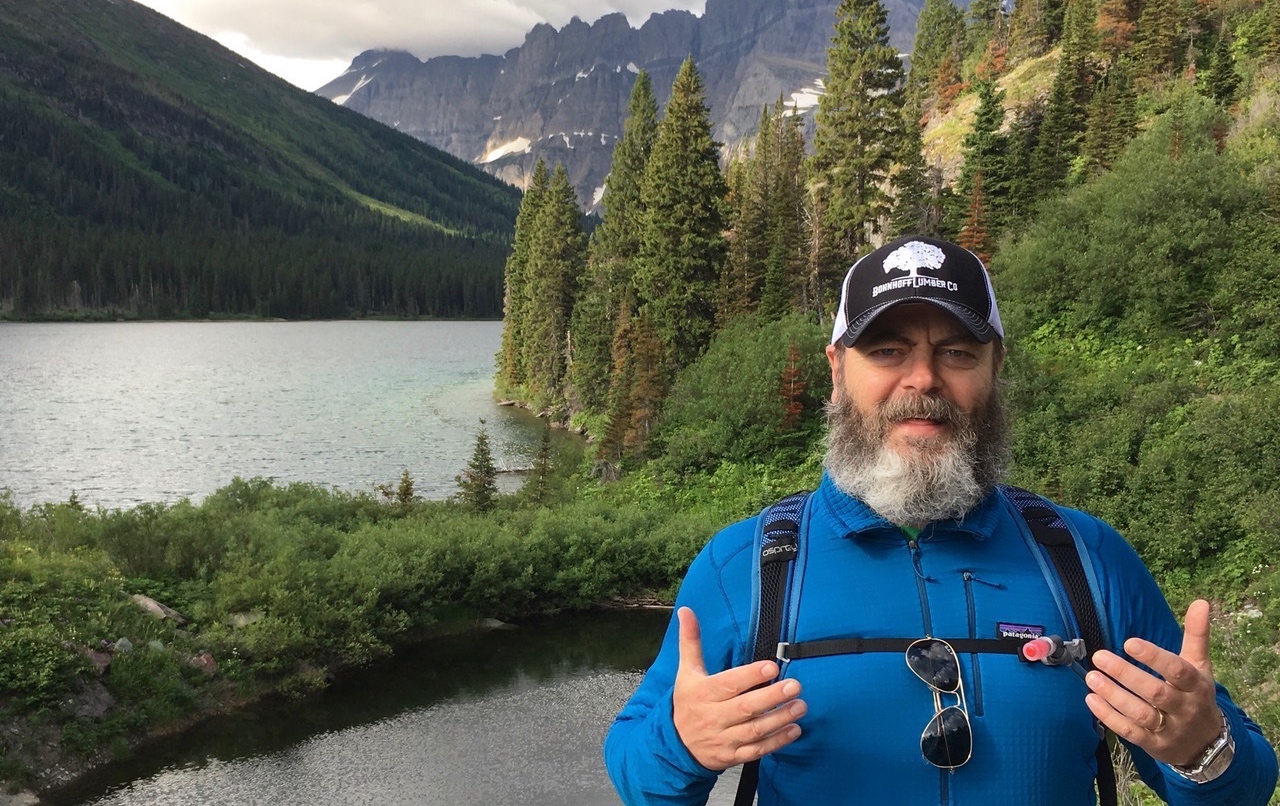
Nick Offerman is an actor, author, humorist, and woodworker who is best known for playing the legendary character Ron Swanson on NBC’s Parks and Recreation. But his success as an actor is just the tip of the iceberg– he’s written five New York Times bestselling books, is the narrator of three of Wendell Berry’s audiobooks, and owns and operates Offerman Woodshop, where he and a small collective of woodworkers handcraft everything from spoons to furniture to canoes. And as many of you know, Nick is a staunch advocate for conservation, responsible land stewardship, and sustainable agriculture.
Nick’s most recent book is titled Where the Deer and the Antelope Play: The Pastoral Observations of One Ignorant American Who Loves to Walk Outside, and it’s an excellent, thought-provoking read. It follows Nick on a series of adventures through the American West and English countryside– adventures driven by his desire to better understand conservation, recreation, and humans’ connection to the land and wild places. Along the way, he explores everything from the legacies of John Muir and Aldo Leopold to regenerative agriculture, without shying away from tough, complex topics, such as industrial farming and the conservation movement’s impact on Indigenous cultures. The book also hits on so many underlying ideas that are often explored here on Mountain & Prairie, including nuance, empathy, compassion, curiosity, and doing work that makes the world a better place. I loved the book, and I highly recommend it.
I met up with Nick in Los Angeles at Offerman Woodshop, and we had a fun, inspiring, and at times hilarious conversation about everything from Aldo Leopold’s Land Ethic to Nick’s work as a “traveling clown.” (His words, not mine!) We started out by discussing the life-changing moment when a friend handed him a Wendell Berry book, and how Wendell’s writings and philosophy continue to be one of Nick’s most important sources of inspiration and instruction to this day. We discuss why hard work and being of service to others are so deeply embedded in Nick’s DNA, and the critical role that artists can play in solving societal challenges. We talk about authenticity, the importance of being even-keeled, the need for nuance and open-mindedness, the skill of self-deprecation, enjoying the process of creating, not passing judgment, and much, much more.
Where the Deer and the Antelope Play was just released in paperback, so follow the links in the episode notes to pick up a copy. If you’re a longtime listener, I know you’ll love it. There are also links to Offerman Woodshop, Nick’s touring schedule, and all of his other books, so click through and check it all out.
A thousand thanks to Nick for inviting me to his shop for such an amazing conversation, and thank you for listening. Hope you enjoy.
Header photo of Nick in Glacier National Park by George Saunders, headshot by Taylor Miller.
LISTEN & DOWNLOAD:
Apple Podcasts
Spotify
Google Podcasts
… or wherever you get your podcasts!
—
RESOURCES:
Topics Discussed:
- 3:30 – A self-deprecation showdown
- 5:30 – The impact of Wendell Berry on Nick’s life
- 10:15 – Of Nick’s family and upbringing, and tying back to Wendell Berry
- 15:15 – Nick telling the story of when he “made it,” and how that impacted his work ethic
- 18:30 – Of the ethos of taking the time to do hard things
- 23:15 – The impact of a conversation between Nick and Wendell Berry
- 29:00 – More about Nick’s book, Where the Deer and the Antelope Play
- 42:15 – How Nick discusses serious topics with a lighthearted demeanor
- 47:30 – How Aldo Leopold influenced Nick
- 51:45 – A great story about Wendell Berry and the need for artists
- 55:15 – How and when Nick developed his authenticity
- 1:02:00 – The two jokes Nick has written in his career
- 1:05:45 – What good work looks like
- 1:18:00 – Discussing how to pronounce words and the importance of not passing judgment
- 1:23:15 – Coming back to “good work”
Information Referenced:
- Nick Offerman
- Offerman Woodshop
- Where the Deer and the Antelope Play by Nick Offerman
- All of Nick’s books
- The Rainbow Song by Nick Offerman
- Steppenwolf Theatre
- Ethan Hawke
- Buried Child, a play by Sam Shepherd
- Leo Burmester
- Fidelity, short stories by Wendell Berry
- Watch With Me, short stories by Wendell Berry
- Gandalf
- Minooka, IL
- David Lee Roth
- As I Lay Dying, a play by William Faulkner
- Frank Galati
- Anton Chekov
- Nick on Conan O’Brien
- Megan Mullally
- Will and Grace
- Everybody Knows This Is Nowhere, by Neil Young
- SkyMall
- John Muir
- Aldo Leopold
- Laura Dunn
- Look and See, directed by Laura Dunn and Jef Sewell, Co-Produced by Nick Offerman
- Mary Berry
- Chess Pie
- Tanya Berry
- Fine Woodworking Magazine with Nick on the cover
- Garbage Land by Elizabeth Royte
- Bottlemania by Elizabeth Royte
- Gowanus Canal
- Redhook, Brooklyn, NY
- Poland, MA
- Kathie Sever
- Matt the Electrician
- “The Bear,” a song by Matt the Electrician
- The Paramount Theatre, Austin TX
- Greta Thunberg
- Han Solo
- Michael Pollan
- Parks and Recreation
- A Sand County Almanac by Aldo Leopold
- Rachel Carson
- DDT
- The Unsettling of America by Wendell Berry
- World Ending Fire by Wendell Berry
- Just Act Naturally by the Beatles
- Garrison Keillor
- Rodney Dangerfield
- Zack Galifianakis
- Sarah Silverman
- Full Bush
- The Last of Us
- Craig Mazin
- Chernobyl
- Paramount Theatre, Denver
- University of Illinois at Urbana-Champaign
- Lake District, England
- The Shepherd’s Life by James Rebanks
- Pastoral Song by James Rebanks
- The Farmer’s Wife by Helen Rebanks
- White Oak Pastures
- Joel Salatin
- Our Home Place Meat
- John Hodgman
- Judge John Hodgman Podcast
- Siddhartha
Enjoy this episode? Then you might like these too:
- Douglas Brinkley – Exploring the Past to Find Inspiration for the Future
- Dr. Katharine Hayhoe – Effecting Change Through Authentic Conversation
- Christy Sing Robertson – On Grit, Hard Work, & Going All In
- Yemi Mobolade – Community Builder
- Lorelei Cloud – Solving Modern-Day Challenges with Ancient Tribal Wisdom
- Pete McBride, Part 2: In Search of Silence
- Rick Ridgeway – Purpose-Driven Adventurer
- Anna Borgman – Obsession, Curiosity, and Purpose-Driven Work
- Kathie Sever – Chainstitching, Craftsmanship, and Cosmic Western Wear
- Betsy Gaines Quammen – A Fascinating History of Public Lands in the West
- Shane Doyle – Reverence for the Past, Hope for the Future
Visit the podcast page for a full, searchable list of episodes
Matt Cahill – A Deep Dive into the Sagebrush Sea
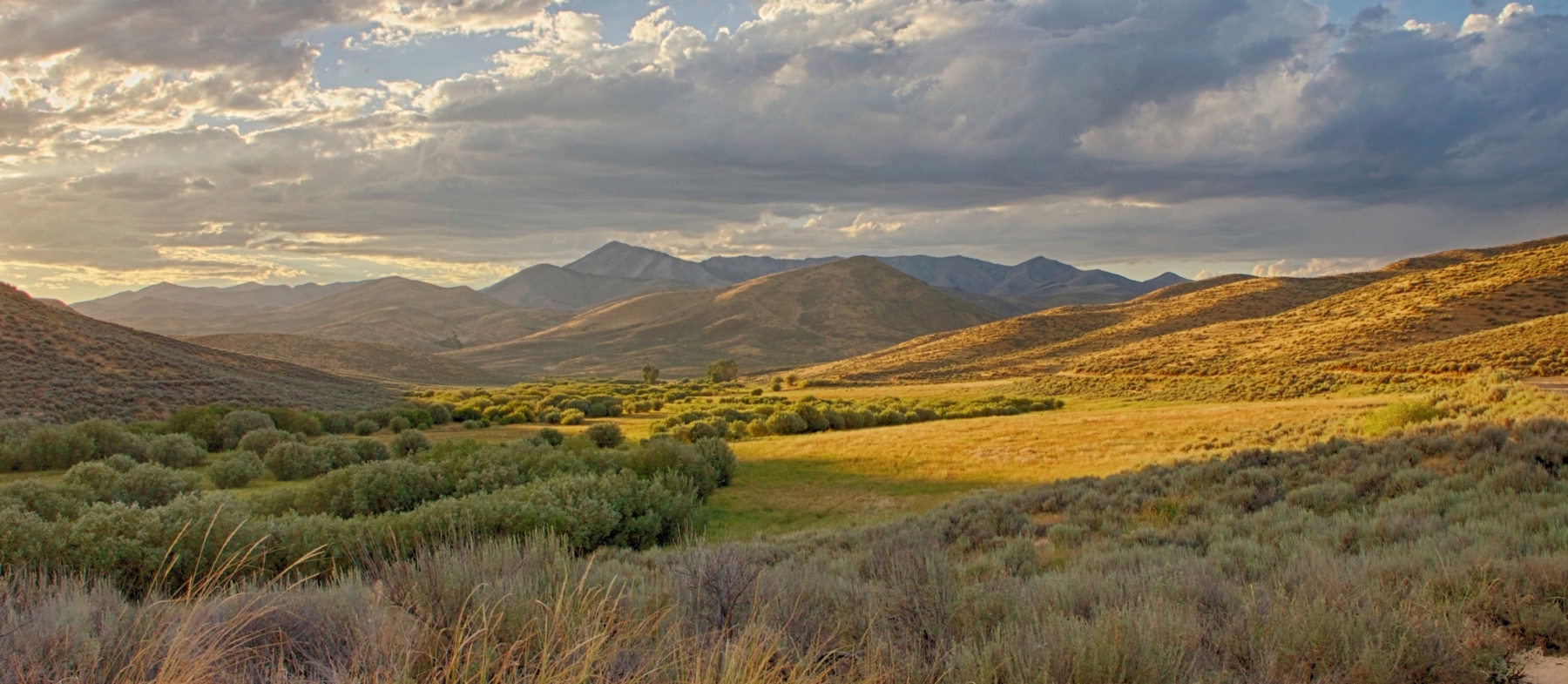
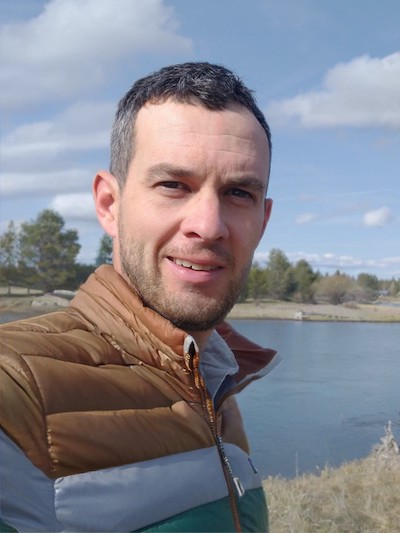
Matt Cahill is the Sagebrush Sea Program Director for the Nature Conservancy. Based out of Bend, Oregon, Matt leads all of TNC’s critical work restoring, managing, and protecting sagebrush habitat across six western states. This is a huge and complex effort– it combines protection and policy work with ground-breaking restoration advances, public and industry partnerships, and local community projects. But as you’ll hear in this conversation, Matt is optimistically leaning into the challenge and making great strides to protect this uniquely Western ecosystem.
To give you some context into the vastness of North America’s sagebrush ecosystem, it spans 150 million acres and is home to 350 rare, threatened, and endangered species. Since 1998, 14 million acres of sagebrush ecosystems have been lost, and currently, we’re losing approximately one million acres to invasive species, catastrophic wildfires, development, improper grazing, and climate change. 70% of the Sagebrush Sea is found on public lands, so efforts to protect, manage, and restore the ecosystem are dependent on creative, action-oriented public-private partnerships. Again, Matt is leading a huge and complex effort!
In this episode, we start our conversation by discussing why the Sagebrush Sea is important, and why even people who live far from the ecosystem should care about it. We discuss the history of the threats to sagebrush, and we also do a deep dive into the specific threat of cheatgrass– a true scourge on the landscapes of the West. We discuss the ecology of sagebrush, how TNC measures success when it comes to protecting such a fragile ecosystem, and the importance of partnering with ranchers. We talk about the efficacy of for-profit approaches to restoration, collaboration with government agencies, and specific cutting-edge approaches to restoration. Matt also explains his career trajectory that led him from the East Coast to becoming obsessed with sagebrush, and he offers several great book recommendations.
Be sure to check out the episode notes for links to everything we discuss, including a few videos and writings by Matt that will provide even more context into this nuanced issue. Thanks to Matt and his team for all of their hard work, and thank you for listening. Hope you enjoy.
Photos courtesy of The Nature Conservancy
LISTEN & DOWNLOAD:
Download on Apple Podcasts
Download on Spotify
Download on Google Podcasts
…or wherever you get your podcasts!
EPISODE PARTNER:
This episode is brought to you in partnership with the Colorado chapter of The Nature Conservancy. Guided by science and grounded by decades of collaborative partnerships, The Nature Conservancy has a long-standing legacy of achieving lasting results to create a world where nature and people thrive.
On the fourth Tuesday of every month throughout 2023, Mountain & Prairie will be delving into conversations with a wide range of The Nature Conservancy’s leaders, partners, collaborators, and stakeholders, highlighting the myriad of conservation challenges, opportunities, and solutions here in the American West. You can access all of the 2023 episodes here.
To learn more about The Nature Conservancy’s impactful work in Colorado and around the world, visit www.nature.org/colorado
RESOURCES:
Topics Discussed:
- 3:30 – Description of the Sagebrush Sea
- 7:45 – Why sagebrush matters
- 10:30 – The state of the Sagebrush Sea and how it got there
- 15:15 – Cheatgrass’s impact on the Sagebrush Sea
- 23:30 – TNC’s Sagebrush Sea program
- 26:45 – Exploring the restoration aspect of Matt’s work
- 33:15 – The restoration timeline for sagebrush regions
- 35:30 – Measuring restoration success
- 39:00 – The management portion of Matt’s work
- 41:30 – Matt’s success stories of collaborating with ranchers
- 46:00 – The land protection (acquisition, easement, etc.) portion of Matt’s work
- 49:15 – Evaluating the for-profit wing of conservation of sage grouse habitat
- 43:15 – Discussing TNC’s collaboration across its own programs as well as with government land managers
- 57:00 – How Matt ended up an expert in sagebrush biomes when he grew up on the East Coast
- 1:00:30 – Matt’s book recommendations
- 1:04:00 – Matt’s parting words of wisdom
Information Referenced:
- The Nature Conservancy
- The Sagebrush Sea program at The Nature Conservancy
- Innovative Restoration article about TNC’s Sagebrush Sea work
- Sagebrush Conservation Design
- Matt’s article about the “Defend the Core, Grow the Core” framework
- Sagebrush
- Salt playa
- Burns, OR
- Lander, WY
- Ponderosa pine
- Piñon pine
- Juniper
- Cheatgrass
- Medusahead
- Ventenata/wiregrass
- Cryptobiotic Crust
- Fescue
- Bluebunch Wheatgrass
- Pinedale, WY
- Carlos Fernadez
- Winecup Gamble Ranch
- Matador Ranch
- Red Canyon Ranch
- Taylor Hawes
- Bears Ears National Monument
- Matt Moorehead
- Sagebrush Ocean by Stephen Trimble
- Catch-22 by Joseph Heller
- Brave New World by Aldous Huxley
- Franz Kafka
- Basin and Range by John McPhee
- Encounters with the Archdruid by John McPhee
Enjoy this episode? Then you might like these too:
- Carrie Segil & Duncan Gilchrist – Catalyzing Conservation in Colorado and Beyond
- Lorelei Cloud – Solving Modern-Day Challenges with Ancient Tribal Wisdom
- Rob Addington – A Deep Dive into Western Wildfires and Forest Health
- Chris Hawkins – Using Nature to Build Healthier & More Equitable Communities
- Matt Moorhead & Galen Guerrero-Murphy – Grasslands Conservation on the Southern High Plains
- Taylor Hawes – Innovative Conservation in the Colorado River Basin
- Dr. Katharine Hayhoe – Effecting Change Through Authentic Conversation
- Carlos Fernández, Part 2 – Creating Conservation Opportunities During Uncertain Times
Visit the podcast page for a full list of episodes where you can filter episodes by topic and guests’ vocations.
James Prosek – Art, Philosophy, & Our Natural World
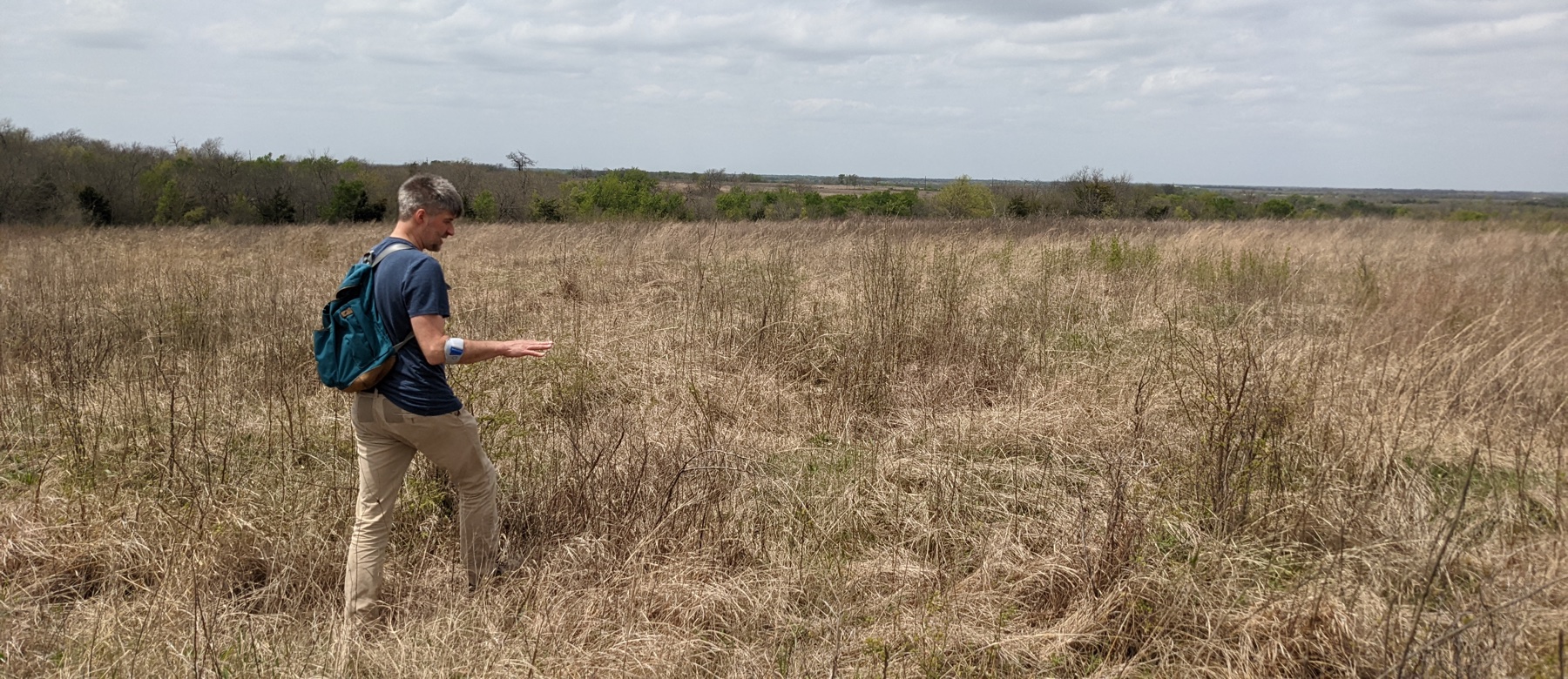
James Prosek is an artist, writer, and naturalist whose work deeply examines our relationship with the natural world. Over the course of his career, he’s focused his artist’s eye and philosopher’s mind on everything from trout to eels, from birds to ocean fishes. For the past two years, he’s been focused on understanding and documenting the grasslands of Texas, and he’s traveled the state examining the diverse plants and wildlife that call the prairie ecosystem home. Beginning on September 16, 2023, the results of his journey around Texas will be on display at the Amon Carter Museum of American Art, in his new exhibition titled Trespassers: James Prosek and the Texas Prairie.
James was born in Connecticut and, as you’ll hear in our conversation, much of his childhood was spent obsessed with birds, fish, and fishing. He attended Yale Univesity, where at age 19 he published his first book titled Trout: An Illustrated History, which featured seventy of his watercolor paintings of the trout of North America. From there, his curiosity about the natural world continued to intensify, as evidenced by his prolific production of art and writing for many renowned museums and publications. He has also lent his talents to a variety of conservation efforts, most notably his partnership with Yvon Chionard to protect coldwater fisheries habitat.
James and I share many mutual friends and interests, so it was wonderful to connect with him for this conversation. It’ll only take you a few minutes of listening to realize that James is a deep thinker whose art is the manifestation of his extremely nuanced and fascinating ideas and philosophies. We started out talking about his first memory of interacting with nature, and how he has used drawing and journaling as tools to better understand plants, animals, and concepts. We discuss how the idea of naming plants and animals is an imperfect science, how drawing connects us with our evolutionary past, how philosophy and philosophical thinking inform all of his art, grasslands in Texas, the importance of understanding and respecting place, how James snaps out of creative slumps, his writing process, and he offers plenty of book recommendations.
As is the case with so many of my guests, I could’ve talked to James for many more hours. So thankfully, this conversation is part one of what will be a two-episode series with James. The second episode will be a live event at the Amon Carter Museum of American Art, on Thursday, January 11, 2024. We’ll be continuing this conversation, and we’ll be focusing in more detail on his exploration of the Texas Prairie and his new exhibition, Trespassers. We’ll be releasing more information about this event soon, but I’d love to see some of you at the event in Fort Worth on January 11.
A huge thank you to James for his inspiring art, to the Amon Carter Museum for the opportunity to chat with James, and to all of you for listening. Enjoy!
Photos courtesy of James Prosek and the Amon Carter Museum of American Art.
LISTEN & DOWNLOAD:
Apple Podcasts
Spotify
Google Podcasts
… or wherever you get your podcasts!
—
RESOURCES:
Topics Discussed:
- 3:15 – James’ first memory of interacting with nature
- 7:00 – When journaling and drawing became standard practices for James
- 10:15 – James’ view on drawing and its connection to our evolutionary past as hunters
- 15:15 – How drawing fish made James a better angler
- 20:45 – How names affect our thinking about other organisms
- 24:15 – The art that James engaged in parallel to fishing
- 28:00 – How James sharpens his philosophy
- 39:45 – James’ writing process
- 43:00 – How James establishes connections with places
- 1:00:15 – Whether or not James has gone through an artistic slump
- 1:10:00 – James’ parting words of wisdom
Information Referenced:
- Amon Carter Museum of American Art
- Trespassers: James Prosek and the Texas Prairie
- Rhododendron
- Monarch butterfly
- Fairfield, CT
- National Audubon Society
- Why We Draw: TEDxYale talk by James Prosek
- Warbler
- Brook Trout
- Arctic Char
- Mill River (CT)
- Brown Trout
- Sam Harris
- The Treachery of Images (“This is not a pipe” painting), René Magritte
- Merchant Marines
- Henry David Thoreau
- Ralph Waldo Emerson
- Stephen Jay Gould
- E.O. Wilson
- Alfred Korzybski
- Jupiter, FL
- “Art, Artifact, Artifice” by James Prosek
- The Doors of Perception by Aldous Huxley
- David Starr Jordan
- Ichthyology
- Louis Agassiz
- Louis Agassiz Fuertes
- On the Origin of Species by Charles Darwin
- This is Not a Pipe by Michel Foucault
- On Truth and Lies in a Nonmoral Sense by Frederich Nietzsche
- The Divine Within by Aldous Huxley
- Natural Kind
- Realism
- Nominalism
- Ludwig Wittgenstein
- Kristof Zyskowski
- Peabody Museum, Yale
- Suriname
- “She Unnames Them” by Ursula K. LeGuin
- Robert Behnke
- Colorado State University
- Blue Marlin
- Cape Verde Islands
- Woods Harbor, Nova Scotia
- Bird, Butterfly, Eel by James Prosek
- Orange Milkweed
- Spencer Wigmore
- Maggie Addler
- Edwards Plateau in TX
- Indiangrass
- Big Bluestem
- Little Bluestem
- Switchgrass
- Changes in the Land by William Cronon
- Davis Mountains in West Texas
- Broomsedge Bluestem
- Heath Hen
- Martha’s Vineyard
- Prairie Time by Matt White
- Dartmouth Hood Museum
Enjoy this episode? Then you might like these too:
- Live from Maxwell Alexander Gallery
- Frances Ashforth – Art, Water, and Wide-Open Spaces
- Beau Alexander – Paying Homage to the Past, While Focusing on the Future
- Kelsey Johnson – Chasing Her Artistic Ambitions
- Ivan McClellan – A New Look at the Old West
- Morgan Irons – Finding Her Muse
- Live with the Cowboy Artists of America
- Logan Maxwell Hagege – Artistic Evolution
Visit the podcast page for a full, searchable list of episodes
Anna Borgman – Obsession, Curiosity, and Purpose-Driven Work
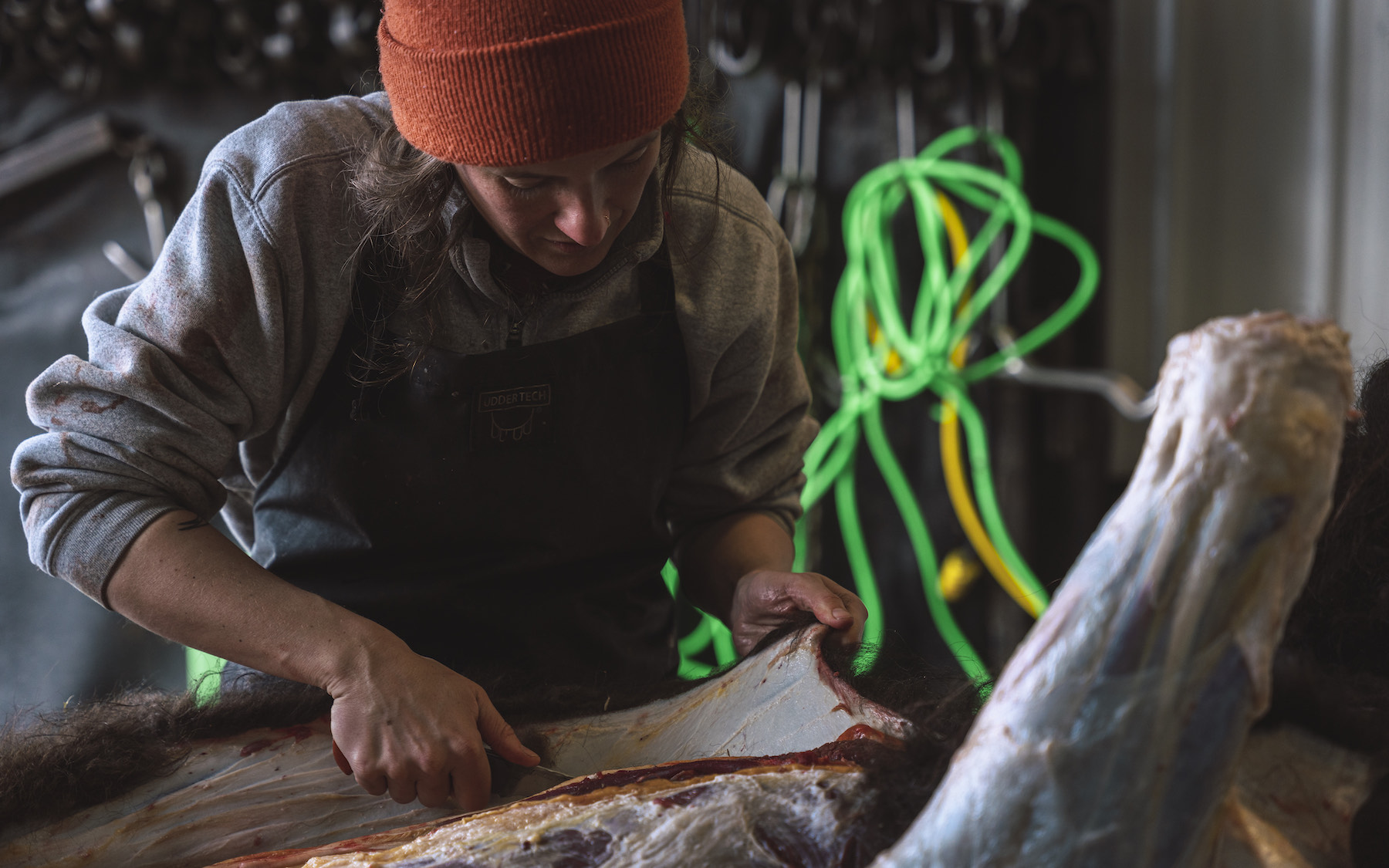
Anna Borgman is a Montana-based butcher, chef, and writer whose work focuses on helping people better understand and appreciate the origins of their food. Whether writing an article for Steven Rinella’s MeatEater or helping to field harvest and process a bison, Anna has a gift for helping curious, conscientious people become more educated about the impacts of their food choices. And as you’ll hear in this conversation, her enthusiasm and authenticity are infectious– even after more than an hour of chatting, I felt we only scratched the surface.
Anna grew up in Oregon, and thanks to participation in 4H, she was involved with animals and livestock from an early age. During her teenage years, skiing became her primary passion, and she devoted much of her post-college life to spending as many days as possible in the mountains, oftentimes working multiple jobs to make ends meet. Eventually, through a serendipitous chain of events that we discuss, she found her way into culinary school, which was her gateway into the world of meat and butchery. Through all the various stages of Anna’s career, she’s brought intense devotion– possibly even obsession– to her work, which has resulted in a fascinating life trajectory that is both inspiring and instructive.
Anna and I share so many mutual friends and I’ve been hearing about her and her work for many years, so I was thrilled to have her finally join me for a conversation. We started out discussing her childhood in Oregon and how skiing became her primary focus for so many years. We discuss some of her adventurous international travel experiences, and how those places and the characters she met led her into the world of food. We discuss the upsides of obsession, advice for getting out of ruts, the value of curiosity, and the importance of experiencing other cultures. She also talks in detail about the realities of slaughtering livestock, why she feels such a connection to butchery, her favorite books, and much more.
Even though this was my first time meeting Anna, I felt like I was chatting with an old friend. I’m super-inspired by all of her work, but even more inspired by the focus and passion she brings to everything she does. I hope you enjoy this conversation as much as I did.
Photos courtesy of Anna Borgman and Chloe Nostrant
LISTEN & DOWNLOAD:
Apple Podcasts
Spotify
Google Podcasts
… or wherever you get your podcasts!
—
RESOURCES:
Topics Discussed:
- 3:00 – What Anna wanted to be when she grew up
- 7:30 – When Anna realized that most livestock she raised would led to slaughter
- 10:00 – Anna’s interest in skiing and how it led her to work with a French cook in Australia and adventures in Spain
- 16:30 – Anna’s experience in culinary school
- 20:15 – Why so many interesting people have pastry making on their resume
- 22:15 – When Anna became interested in butchery, and whether or not working long days in culinary school made Anna feel more content
- 25:45 – The importance of having an obsession
- 28:45 – Anna’s advice for getting out of a rut
- 32:00 – The scariest things that have happened to Anna during international travel, as well as the lessons travel taught her
- 38:30 – When Anna went all in on butchery
- 43:00 – The process of slaughtering and butchering
- 46:30 – Anna’s first slaughter
- 51:45 – Lessons from butchery
- 57:00 – The value of curiosity
- 59:45 – Discussing Forage Fed
- 1:03:45 – Anna’s book recommendations
- 1:09:00 – Anna’s guilty pleasures (or lack thereof)
- 1:14:00 – Anna’s parting words of wisdom
Information Referenced:
- Anna Borgman
- North Bridger Bison
- Bend, OR
- Powell Butte, OR
- 4-H
- University of Utah
- Thredbo Ski Resort
- Kitchen Confidential by Anthony Bourdain
- Basque Country
- San Sebastian, Basque Country
- Basque History of the World by Mark Kurlansky
- Salt by Mark Kurlansky
- Cod by Mark Kurlansky
- Cascade Culinary Institute
- Kathie Sever
- Fort Lonesome
- Diplomat Cream
- Enneagram
- Bilbao. Spain
- Sam Harris
- Matt Skoglund
- Article about Anna in Deseret News
- Amsterdam Meat Shop
- Amsterdam, MT
- Camas Davis
- Good Meat Project
- Temple Grandin
- Adam Gall
- Kate Kavanaugh
- Ryan “Cal” Callaghan
- Backcountry Hunters and Anglers (BHA)
- Back40 Property
- Mark Kenyon
- Wild and Whole
- Danielle Prewett
- Blackbird restaurant
- One Montana Master Hunters Group
- Raw Deal by Chloe Sorvino
- Old Salt Co-op
- American Lucifers by Jeremy Zallen
- Moby Dick by Herman Melville
- The End of Night by Paul Bogard
- Seeing Silence by Pete McBride
- Call Sign Chaos by James Mattis
Enjoy this episode? Then you might like these too:
- Rebuilding a Resilient, Regional Meat Supply Chain – LIVE at the Old Salt Festival
- Kate Mannix – A Legacy of Land Stewardship
- Kate Kavanaugh – Regeneration & Restoration
- Mark Kenyon – A Passion for Public Lands
- Kelsey Johnson – Chasing Her Artistic Ambitions
- Matt Pierson – Finding New Solutions for Food Insecurity
- Amber Smith – Creating Connection & Community
- Cate Havstad-Casad, Part 2 – Building Businesses for the Greater Good
Visit the podcast page for a full, searchable list of episodes
Carrie Segil & Duncan Gilchrist – Catalyzing Conservation in Colorado and Beyond
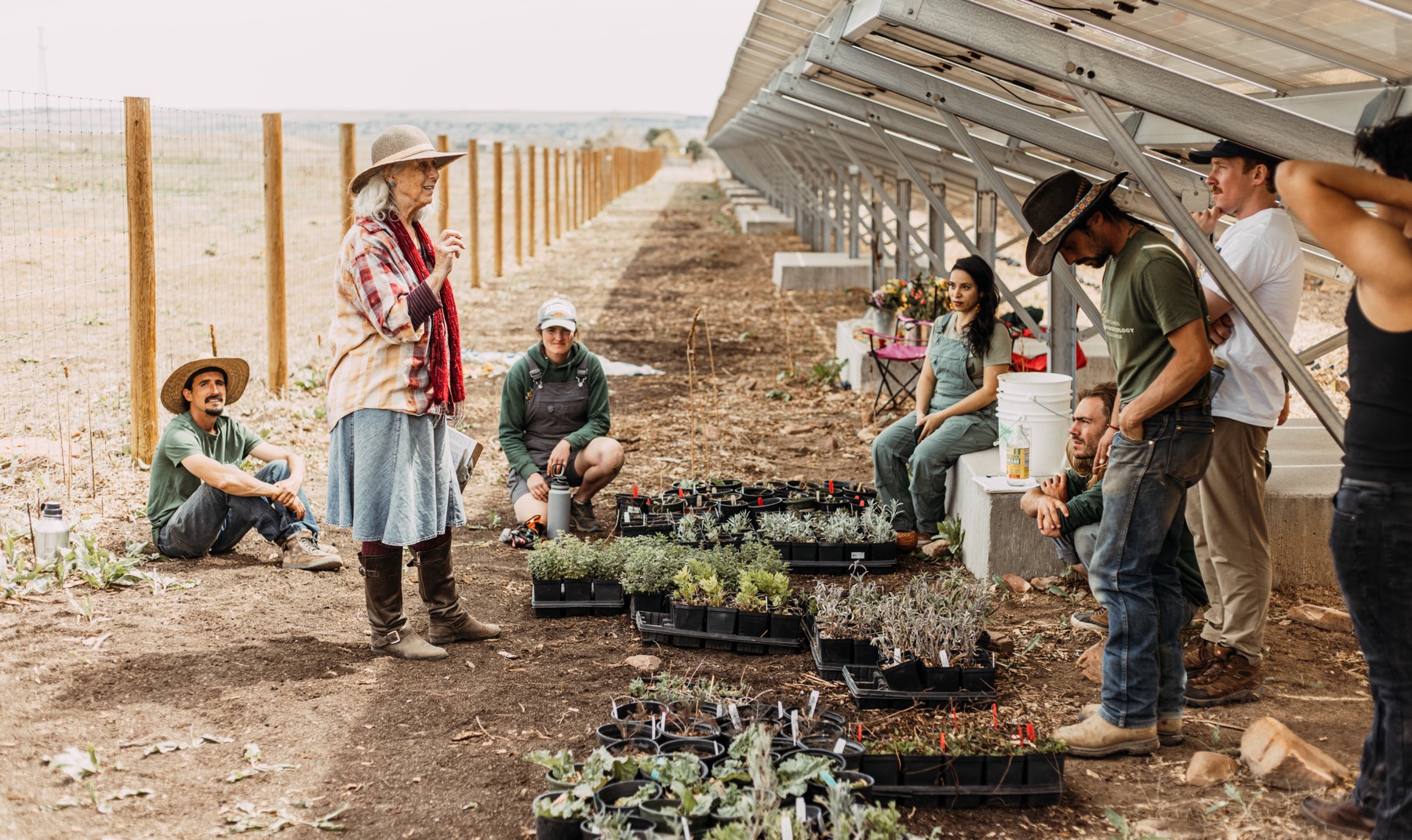
Carrie Segil is the People and Culture Manager at The Nature Conservancy in Colorado, and Duncan Gilchrist is a Climate and Natural Resources Policy Associate at The Nature Conservancy in Colorado. Both Carrie and Duncan are deeply involved with TNC Colorado’s Catalyst Fund, a cutting-edge conservation funding initiative that supports forward-looking projects that enable innovation and rapid learning, both to test new ideas and to build greater capacity for innovation over the long term.
One of the Catalyst Fund’s most notable projects involves agrivoltaics, which is the simultaneous use of land for both solar energy production and agriculture. The project is called the Agrivoltaics Retrofit Partnership, and it’s a Boulder-based partnership between TNC, Jack’s Solar Garden, Drylands Agroecology Research, Boulder Housing Partners, and a conservation-justice / community outreach partner called FLOWS. The project aims to achieve multiple conservation and community objectives, including restoring degraded land, producing perennial plants with medicinal, economic, and indigenous cultural value, and providing a host of benefits to local marginalized community members– benefits that we discuss in this episode.
In this episode, we talk in detail about this specific agrivoltaics project, as well as some of the other innovative projects that are being pushed forward thanks to support from the Catalyst Fund. We discussed how and why TNC Colorado decided to create the Catalyst Fund in the first place, and the need to push boundaries and take risks in the conservation space. Carrie offers insights into specific Catalyst projects, such as virtual fencing for bison, and Duncan discusses all the details about this agrivoltaics project– including the genesis of the idea, the challenges of the projects, and why it has proven to be so successful and replicable. We also discuss how policy on the state and federal level is creating more opportunities for agrivoltaics, why it garners bipartisan support, and lessons learned from all of the Catalyst Fund projects.
I was so impressed with Carrie and Duncan’s enthusiasm, professionalism, and commitment to innovation, and I learned so much from this conversation. Be sure to check out the episode notes to learn more about everything we discussed, and please share this episode with any friends or colleagues who might find it valuable. Thanks so much for listening, I hope you enjoy!
Photos courtesy of The Nature Conservancy
LISTEN & DOWNLOAD:
Download on Apple Podcasts
Download on Spotify
Download on Google Podcasts
…or wherever you get your podcasts!
EPISODE PARTNER:
This episode is brought to you in partnership with the Colorado chapter of The Nature Conservancy. Guided by science and grounded by decades of collaborative partnerships, The Nature Conservancy has a long-standing legacy of achieving lasting results to create a world where nature and people thrive.
On the fourth Tuesday of every month throughout 2023, Mountain & Prairie will be delving into conversations with a wide range of The Nature Conservancy’s leaders, partners, collaborators, and stakeholders, highlighting the myriad of conservation challenges, opportunities, and solutions here in the American West. You can access all of the 2023 episodes here.
To learn more about The Nature Conservancy’s impactful work in Colorado and around the world, visit www.nature.org/colorado
RESOURCES:
Topics Discussed:
- 3:30 – An overview of the Catalyst Fund
- 7:00 – Talking to funders about the Catalyst Fund
- 8:45 – How TNC evaluates what it is looking for regarding the Catalyst Fund
- 10:30 – Duncan’s project
- 12:45 – Duncan’s job before his agrivoltaics project
- 14:45 – More on Duncan’s project and his site
- 19:00 – About Boulder Housing Partners, and how they reacted to Duncan’s idea
- 20:30 – How Duncan worked to turn the rocky land he was working into agricultural land
- 22:30 – The outlook for Duncan’s project, and how it stacks up against his expectations
- 25:00 – The federal and state (CO) push for more projects like Duncan’s
- 28:00 – Why agrivoltaics seems to garner bipartisan support
- 29:30 – Why everyone isn’t doing agrivoltaics
- 31:30 – The potential for grazing under agrivoltaics
- 32:30 – Other synergies between solar energy and agriculture
- 33:30 – Carrie’s outlook on Duncan’s project, and some other projects funded by the Catalyst Fund
- 36:45 – What it’s like for TNC to work with external partners
- 37:45 – Other projects funded through the Catalyst Funds
- 40:00 – Big lessons from the Catalyst Fund project
- 45:00 – The power of advocating for policy
- 47:15 – Where the Catalyst Fund is going
- 51:00 – Carrie and Duncan’s book recommendations
- 53:45 – Closing thoughts
Information Referenced:
- Catalyst Fund
- TNC Colorado
- TNC New York
- Jennifer Chin
- Palmer Land Conservancy
- Bessemer Farmland Conservation Project
- JE Canyon Ranch
- Matt Moorehead
- Mirr Ranch Group
- Agrivoltaics
- Byron Kominek
- Jack’s Solar Garden
- Longmont, CO
- Drylands Agroecology Research
- Boulder Housing Partners
- Wish Garden Herbs
- Katherine Hunziker
- FLOWS – Foundations for Leaders Organizing for Water and Sustainability
- Tim Beal
- Nick DiDomenico
- Lemon Balm
- Flax
- Thyme
- Colorado White Sage
- Fennel
- Agricultural Producers Use Of Agrivoltaics Act
- Rob Addington
- JJ Autrey
- Silver Mountain Preserve
- Call Sign Chaos by Jim Mattis
- Galen Guerrero-Murphy
- Carlos Fernandez
- Taylor Hawes
- Lean Impact by Ann Mei Chang
- Sandra Boynton
- Already Free by Bruce Tift
- Boulder Shambhala Center
Enjoy this episode? Then you might like these too:
- Erik Glenn Returns – Leadership, Innovation, & Commitment to Conservation
- Lorelei Cloud – Solving Modern-Day Challenges with Ancient Tribal Wisdom
- Rebuilding a Resilient, Regional Meat Supply Chain – LIVE at the Old Salt Festival
- Matt Moorhead & Galen Guerrero-Murphy – Grasslands Conservation on the Southern High Plains
- Taylor Hawes – Innovative Conservation in the Colorado River Basin
- Francesca Claverie – A Borderlands Conservation Success Story
Visit the podcast page for a full list of episodes where you can filter episodes by topic and guests’ vocations.
David James Duncan – Live at the Old Salt Festival
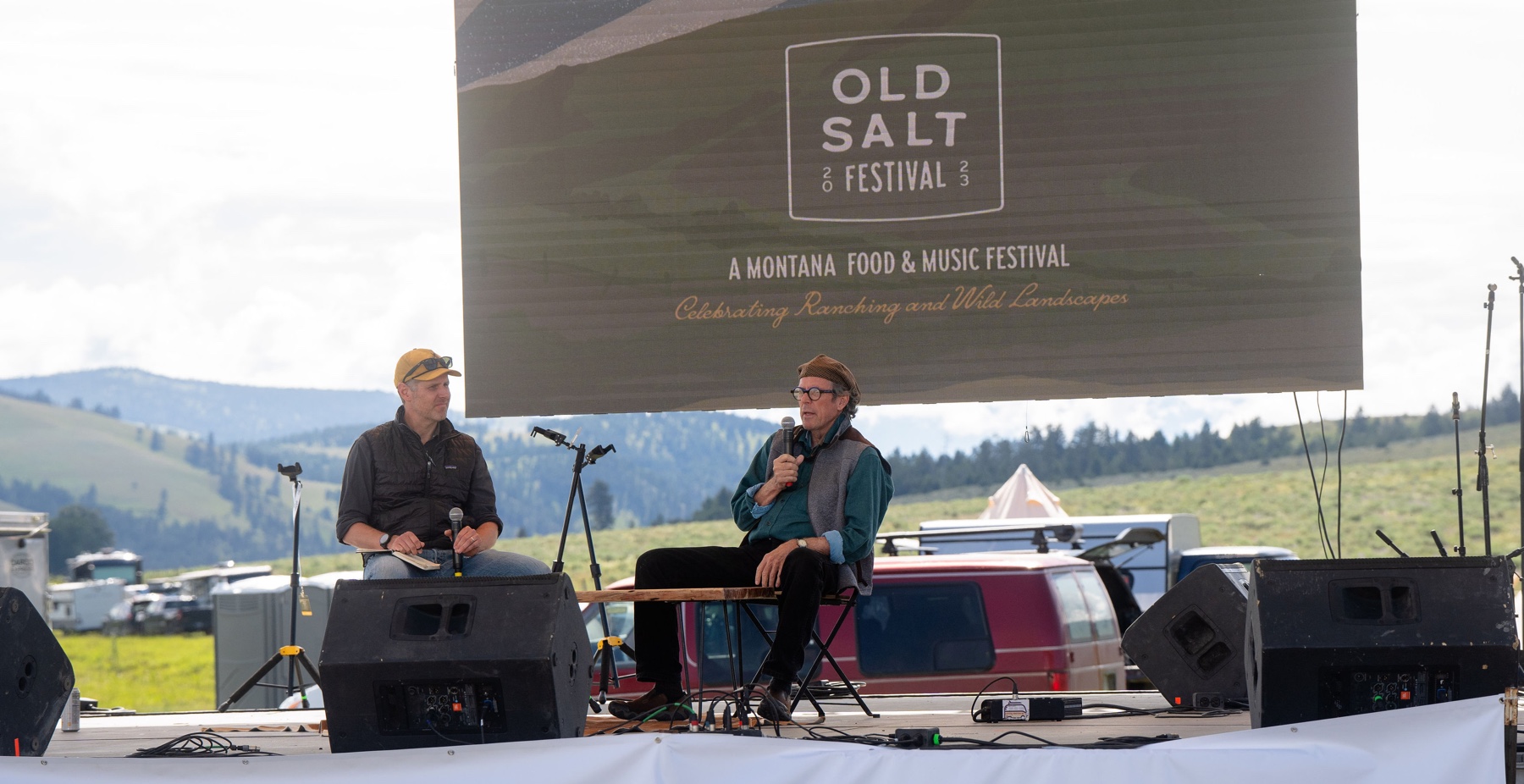
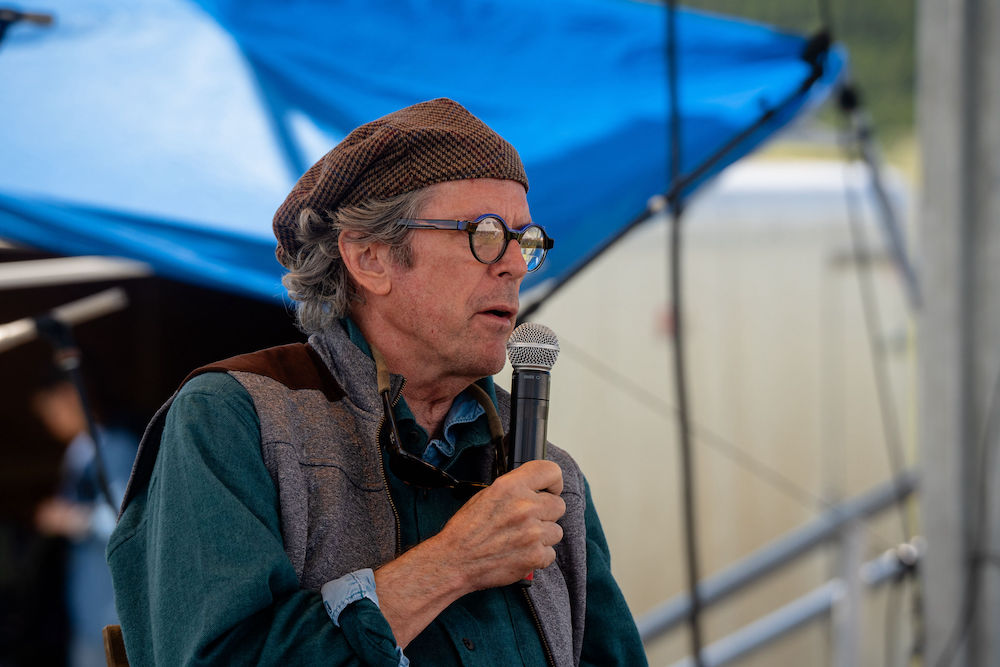
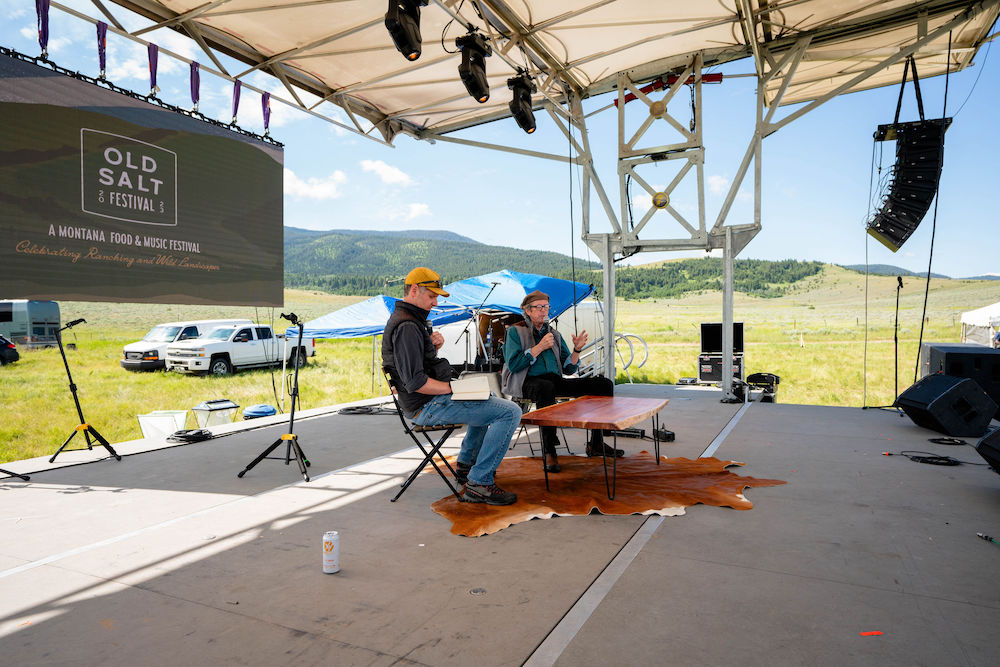
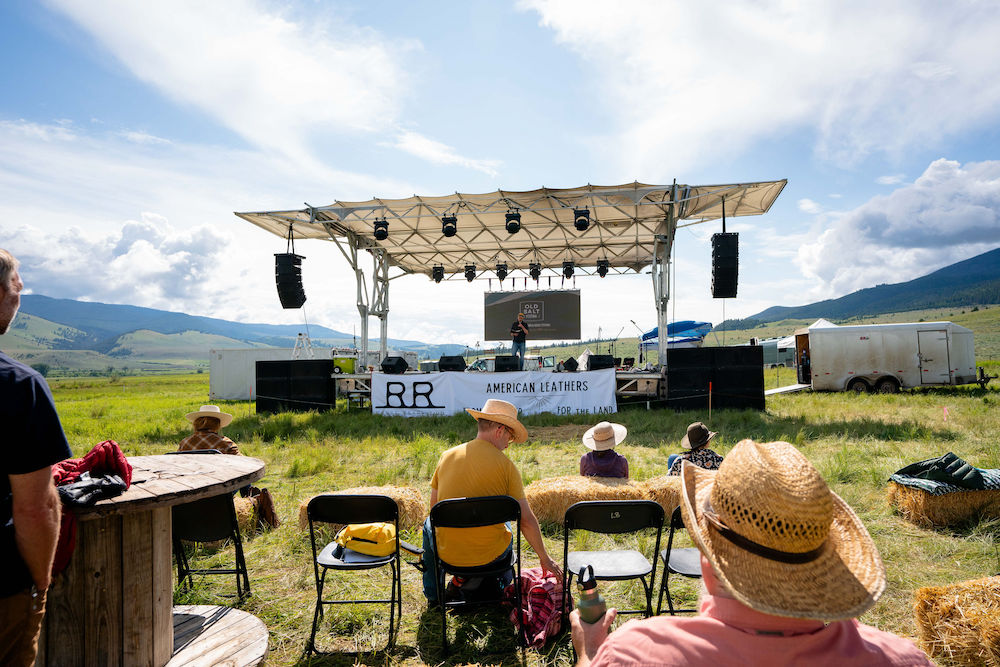
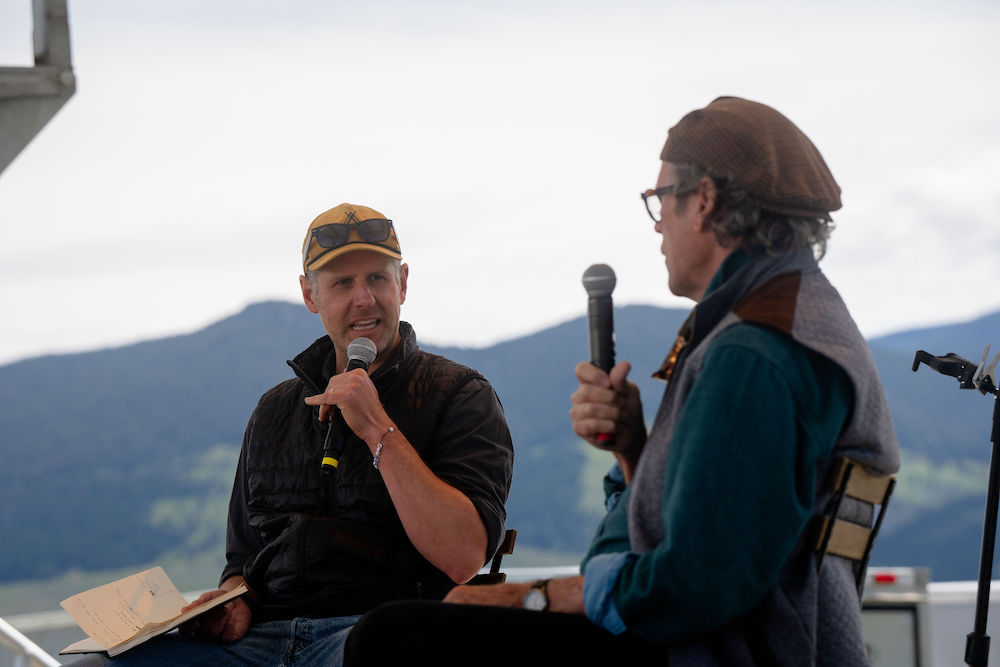
David James Duncan is one of those Western literary legends who needs no introduction to Mountain & Prairie listeners. But for those of you who may be new to the podcast or to Western literature, David is a renowned Montana novelist, activist, and flyfisherman. He’s the author of The River Why and The Brothers K, and his newest novel Sun House hits shelves today. David is also the author of countless nonfiction essays, many of which have been compiled in books such as My Story as Told by Water, River Teeth, and God Laughs & Plays.
This episode was recorded live at the first-annual Old Salt Festival, which was held on the Mannix Family Ranch in Helmville, Montana. The festival was a three-day celebration of land stewardship and wild places, and it featured live music, wood-fired cooking, and discussions about conservation, literature, and the power of place. Given that so much of David’s work as an author and activist is heavily influenced by his love of land, water, and wildlife, he brought a wise and thoughtful perspective to the Festival– a perspective that was greatly appreciated by everyone in attendance.
This episode is split into two parts– first is our on-stage conversation, which took place on Saturday morning, followed by two readings from his new novel Sun House, which took place that evening. In our conversation, I focused in on David’s life as a contemplative. We talk about his upbringing in the Pacific Northwest and his eventual move to Montana, which is the place he now considers his home. We discuss the importance of being able to hold two competing ideas in your mind at once, why he felt called to become an activist, why deep friendships are such an important part of his life, and the women who have served as mentors to him. We also talk about his 16-year process of writing Sun House, the difference between creating ideas versus receiving them, what gives David hope for the future, and much more.
The second part of the episode features two readings from Sun House, both of which were perfectly aligned with the spirit and mood of the Old Salt Festival. From where I was sitting in the crowd, I saw many people tearing up near the end of David’s reading, so I hope the power of his words and the place come through in this audio. It was an extremely special experience that I will not soon forget.
A huge thank you to David for his kindness, generosity, and for all of his contributions to the culture and conservation of the West. Thank you to the Old Salt Festival for giving me this opportunity to talk with David. And thank you for listening.
If you haven’t already, I’d encourage you to pick up a copy of Sun House– it’s available online or in your favorite local bookstore right now!
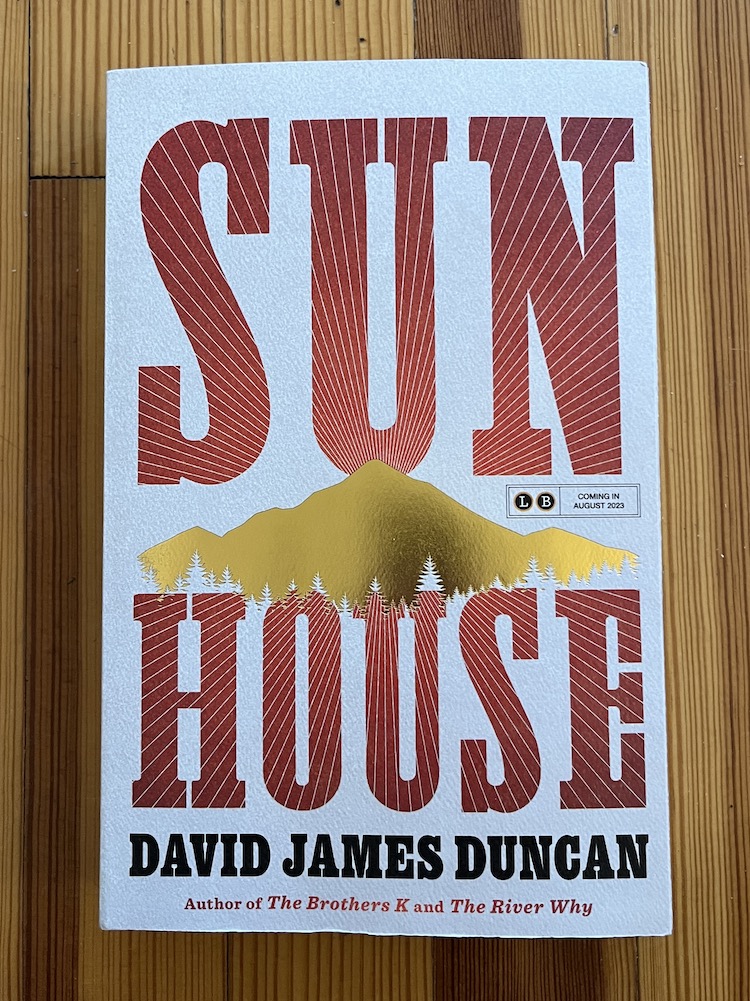
All photos by Anthony Pavkovich
LISTEN & DOWNLOAD:
Apple Podcasts
Spotify
Google Podcasts
… or wherever you get your podcasts!
—
RESOURCES:
Topics Discussed:
- 4:30 – Intros
- 7:30 – Discussing if Montana is home to David
- 10:30 – How David came to write about Montana
- 12:30 – How to hold two ideas in your head (the brutal US past and the landscape beauty we see presently)
- 14:55 – David’s transition from fiction to nonfiction writing
- 19:30 – Advice on how to take a stand
- 21:45 – David’s friends
- 26:30 – David’s women mentors
- 30:30 – Writing Sun House
- 34:30 – The benefits and challenges of writing something so emotional as Sun House
- 38:00 – Whether or not David is creating ideas or receiving them while writing
- 41:30 – What makes David feel good about the future
- 43:30 – Reading 1
- 58:15 – Reading 2
Information Referenced:
- David James Duncan
- Sun House by David James Duncan
- The River Why by David James Duncan
- The Brothers K by David James Duncan
- My Story as Told by Water by David James Duncan
- River Teeth by David James Duncan
- God Laughs & Plays by David James Duncan
- Old Salt Festival
- Cole Mannix
- “The Non-Sense of Place” – from My Story as Told by Water by David James Duncan
- The Meadow by James Galvin
- Steelhead
- Seventh-Day Adventist
- Livingston, MT
- Debra Magpie Earling
- Sherman Alexie
- Snake River
- Army Corp of Engineers
- Bonneville Power Administration
- 2,4-D
- 2,4,5-T
- Loma, MT
- David Whyte
- Paul Hawken
- Rick Bass
- Brian Doyle
- Wendell Berry
- Jane Hirshfield
- Trumpeter Swan
- Phil Gardner
- Lolo, MT
- Thomas Aquinas
- Beguines
- Cologne, France
- Michael Pietsch
- Hachette Book Group
- David James Duncan Talks About His New Novel, Sun House
- Trappist Monk
- Osprey
- Cedar Waxwing
- Swallows
- Nighthawks
- Coho salmon
Enjoy this episode? Then you might like these too:
- Doug Peacock – 50 Years of Fighting for the Grizzlies
- Douglas Brinkley – Exploring the Past to Find Inspiration for the Future
- Kate Mannix – A Legacy of Land Stewardship
- Rebuilding a Resilient, Regional Meat Supply Chain – LIVE at the Old Salt Festival
- David Gessner Returns – “A Traveler’s Guide to the End of the World”
- Bryce Andrews, Part 2 – “Holding Fire”
- Chris Dombrowski, Part 2 – “The River You Touch”
- Rick Ridgeway – Purpose-Driven Adventurer
- Cate Havstad-Casad, Part 2 – Building Businesses for the Greater Good
- Amber Smith – Creating Connection & Community
Visit the podcast page for a full, searchable list of episodes
Erik Glenn Returns – Leadership, Innovation, & Commitment to Conservation
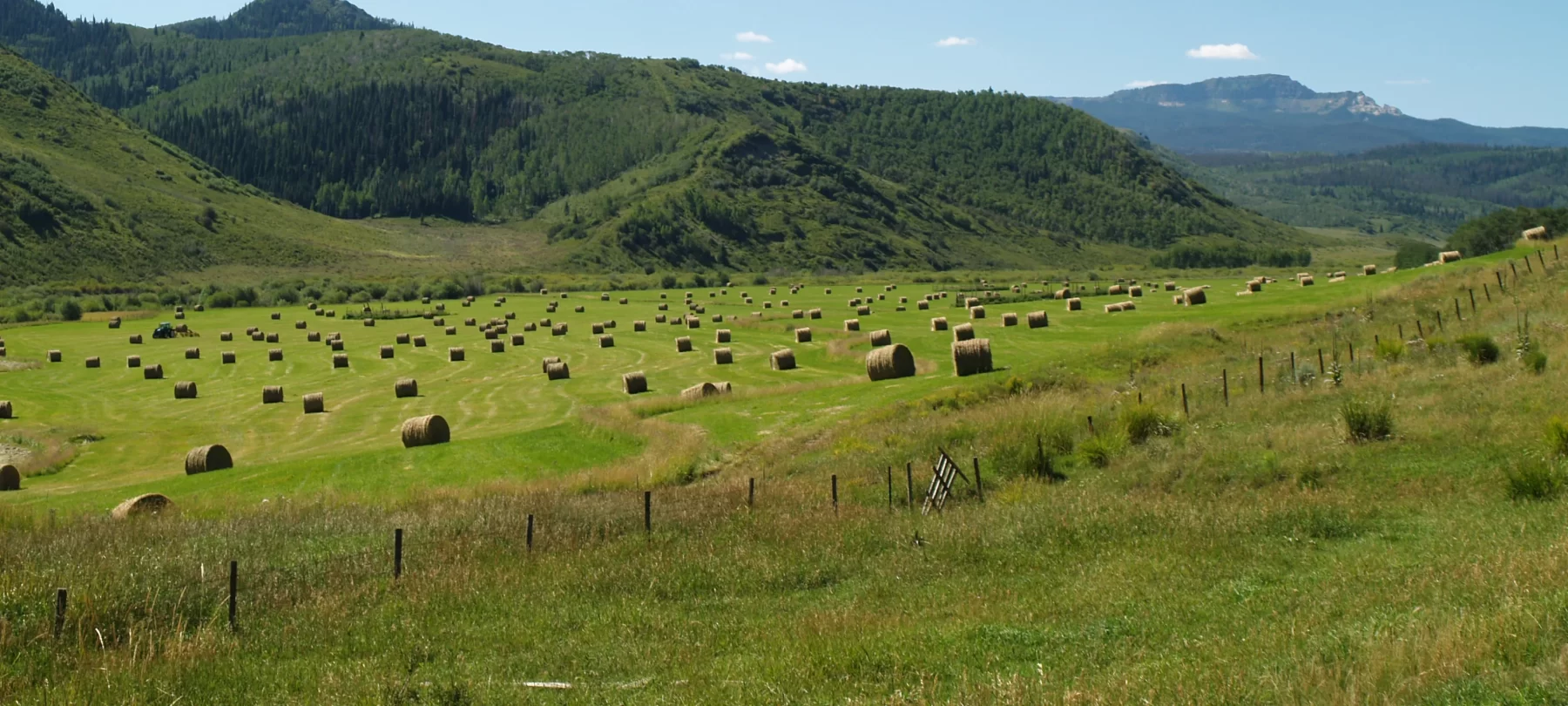
This is the 200th episode of Mountain & Prairie, so I decided to celebrate the milestone by bringing back the first-ever M&P guest, my good friend Erik Glenn. Erik is the Executive Director of the Colorado Cattlemen’s Agricultural Land Trust, a statewide conservation organization that protects Colorado’s agricultural land, heritage, and families for future generations by conserving working rural landscapes. Erik is also the President of the Partnership of Rangeland Trusts, a collection of nine ag-based, western land trusts who work together to “advocate for the conservation of working lands and western heritage for the benefit and wellbeing of future generations.”
When Erik and I spoke for episode number one all the way back in the spring of 2016, he was only about a year into his role as Executive Director. At that point, the organization had conserved just over 465,000 acres of land in Colorado. Fast forward seven and a half years to today, Erik and his team have added an additional 300,000 acres of conserved land, bringing the total to more than 765,000 acres. But most importantly, CCALT has served as a loyal and trusted partner for more than 400 agricultural families who are deeply committed to conserving Colorado’s western heritage and working landscapes.
I consider Erik a great friend and a wise mentor, and if not for his kindness, encouragement, and counsel, I doubt there would be a Mountain & Prairie, nor would I have ever worked in the conservation world. We sat down at his office in Lakewood and caught up on everything, including: how Erik spurs innovation without losing sight of the basics of land conservation; his thoughts on building culture and retaining the best team members; balancing his own intense work ethic with his desire set reasonable-yet-high expectations for his team; how having kids has changed him; the growth of PORT; his mentors; the evolution of the perception of conservation easements in the ag community; threats and opportunities; book recommendations; and much more.
A big thanks to Erik for letting me use him as a guinea pig for the first episode back in 2016, and for his willingness to join me again for episode 200. But more importantly, thanks to Erik for his leadership and commitment to conservation in Colorado, the West, and beyond. Hope you enjoy!
—
Photos courtesy of CCALT.
LISTEN & DOWNLOAD:
Apple Podcasts
Spotify
Google Podcasts
… or wherever you get your podcasts!
—
RESOURCES:
Topics Discussed:
- 3:30 – What the Colorado Cattlemen’s Agricultural Land Trust is
- 11:00 – How Erik balances innovation with the basics of conservation
- 15:30 – How Erik actually implements a culture in the workplace
- 23:30 – How Erik balances his work ethic with the desire to not set unreasonable work expectations for his team
- 29:30 – How having kids impacted Erik
- 35:45 – Discussing PORT
- 46:00 – Discussing whether or not good conservation tools have become good business tools for land owners
- 50:00 – Erik’s mentors
- 58:00 – The biggest threat and opportunity facing conservation
- 1:10:30 – Erik’s book recommendations
- 1:13:30 – Erik’s parting words
Information Referenced:
- Erik Glenn
- Colorado Cattlemen’s Agricultural Land Trust
- Colorado Cattlemen’s Association
- CSU study on conservation impacts on private lands
- PORT (Partnership of Rangeland Trusts
- Wyoming Stock Growers Land Trust
- Lynn Sherrod
- Montana Land Reliance
- South Dakota Agricultural Land Trust
- Ranchlands Trust of Kansas
- Nebraska Land Trust
- The Northwest Rangeland Trust
- California Rangeland Trust
- Chad Ellis of TALT
- Ken Mirr
- Chris West
- Larry Kueter
- Bill Silberstein
- Colorado College
- Colorado Transferable Conservation Easement Tax Credit
- Infrastructure Investment and Jobs Act
- Inflation Reduction Act
- Play to Win by A.G. Lafley and Roger L. Martin
- Vince Flynn
- Honestly Podcast with Bari Weiss
- Collective Illusions by Todd Rose
- Peter Thiel
- Call Sign Chaos by Jim Mattis
Enjoy this episode? Then you might like these too:
- Rebuilding a Resilient, Regional Meat Supply Chain – LIVE at the Old Salt Festival
- Matt Moorhead & Galen Guerrero-Murphy – Grasslands Conservation on the Southern High Plains
- Landscape-Scale Management in a Private Land State
- Cole Mannix – Building Community through Land Stewardship and Local Food
- Carlos Fernández, Part 2 – Creating Conservation Opportunities During Uncertain Times
- Francesca Claverie – A Borderlands Conservation Success Story
- Matt Pierson – Finding New Solutions for Food Insecurity
Visit the podcast page for a full, searchable list of episodes
SHED SESSION: Everything I Know About Landing a Job in the Conservation World

For many years now, listeners have been emailing me with lots of different versions of the same basic question:
“How do I get a job in the conservation world?”
Some of the inquiries come from college students or young professionals, while others come from folks who are deep into a specific career path but want to make a change. I’m always happy to receive these messages, and I’m flattered that anyone would think I have valuable advice to offer.
Unfortunately, I’ve never been able to provide what I believe to be a suitable answer, mainly because I could not do the question justice within the constraints of email or social media. And over the last few years, the volume of messages has reached a point that I simply cannot keep up with it all– so if you’ve reached out and I have not responded, my sincere apologies.
For (at least) the past three years, I’ve been considering answering this question in podcast form, thinking the episode could serve as a detailed resource for anyone who asked the question… and for those who will in the future. But I’ve procrastinated or rationalized reasons not to, mainly because I felt extremely uncomfortable about sitting by myself, blabbing my thoughts and ideas into a microphone. I never want to come off as a know-it-all or some kind of wannabe internet guru.
But the volume of the incoming messages kept increasing, so I finally decided to put my ego and self-consciousness aside and just answer the question in podcast form.
I wrote an eight-page outline that laid out everything I know about finding a job in the conservation world, then I sat down in The Shed and let ‘er rip. The result is a ridiculously long soliloquy in which I put it all out there. I’m calling it a Shed Session.
Please keep in mind that this episode is simply a recounting of my own personal and professional experience– it’s not some kind of one-size-fits-all “hack” that will lead you directly to your dream job. I’ve long said that I am the last person anyone should be asking for career advice, and there are certainly tons of people who are much more experienced and accomplished in conservation than I am.
But for those of you who did ask, this episode is for you. I lay it all out, including: my specific career path; my specific job in the conservation field; skills that are needed in the conservation sector; why relationship building is the most important skill; how I built a deep and broad network in Colorado despite only knowing one person when I moved here in 2010; why I think networks are the most valuable assets, what I looked for when I was hiring for conservation roles; what you should look for (and avoid) in conservation organizations; pros and cons of working in non-profit conservation, book recommendations, and more. Links to everything are in the episode notes.
Again, all of this is just my personal experience and my possibly weird ideas about doing purpose-driven work. For those of you who have reached out, I hope this adds some value. For everyone else, we’ll be back to the regularly scheduled interviews later this week.
Thanks for listening!
LISTEN & DOWNLOAD:
Apple Podcasts
Spotify
Google Podcasts
… or wherever you get your podcasts!
—
WATCH ON PATREON:
RESOURCES:
Topics Discussed:
- 3:12 – Intro, Questions, and Goals
- 10:20 – Disclaimers
- 13:58 – Discussion outline
- 15:45 – My career path
- 19:53 – My specific job in conservation
- 22:30 – How I built a network from scratch
- 40:01 – Advice on how to build a network
- 48:55 – What I looked for when I was hiring
- 54:39 – What you should look for in a conservation organization
- 1:05:51 – Book Recommendations
- 1:15:05 – Pros and cons
- 1:22:22 – Closing thoughts
Information Referenced:
- Watch this podcast on Patreon
- Wake Forest University
- Ed on the Mirr Ranch Group podcast (Part 1, Part 2, or full video)
- VIDEO: Bessemer Farmland Conservation Project
- Mirr Ranch Group
- Palmer Land Conservancy
- Colorado Cattlemen’s Agricultural Land Trust
- The Nature Conservancy
- Trust for Public Land
- The Conservation Fund
- Linchpin by Seth Godin
- Extreme Ownership by Jocko and Leif
- Boyd: The Fighter Pilot Who Changed the Art of War by Robert Coram
- Let My People Go Surfing by Chiounard
- How to Win Friends and Influence People by Dale Carnegie
- Deep Work, Digital Minimalism, and A World Without Email by Cal Newport
- Atomic Habits by James Clear
- Think Again and Originals by Adam Grant
- Endurance: Shackleton’s Incredible Voyage by Alfred Lansing
- For the Love of Land: Global Case Studies of Grazing in Nature’s Image by Jim Howell
- Losing Eden: An Environmental History of the American West by Sara Dant
- Blood and Thunder by Hampton Sides
- TED Talk: The way we think about charity is dead wrong | Dan Pallotta
To check out dozens of past episodes featuring conservationists from around the West, visit the podcast page and choose “conservationists” from the dropdown menu!
Lorelei Cloud – Solving Modern-Day Challenges with Ancient Tribal Wisdom
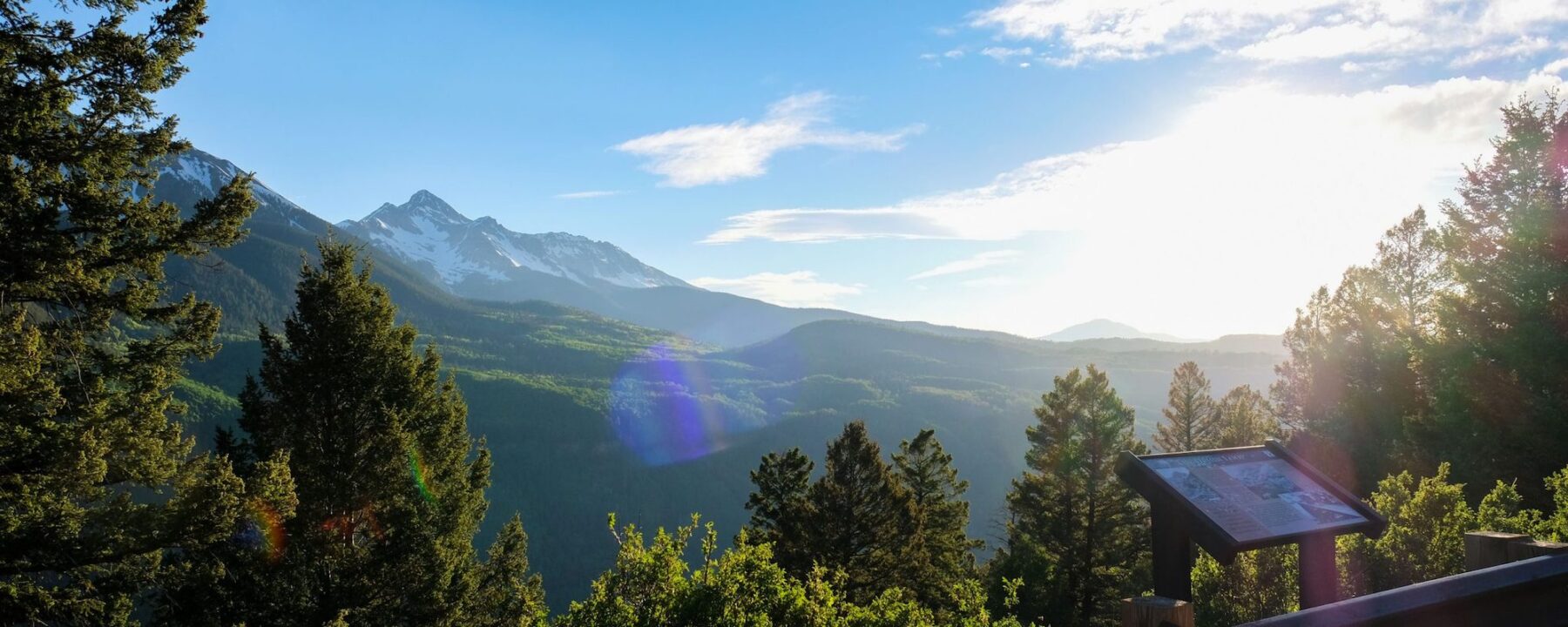
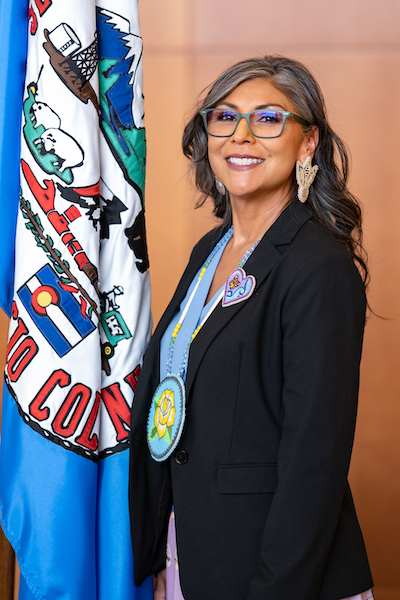
Photo: Jeremy Wade Shockley
Lorelei Cloud is a member of the Southern Ute Indian Tribe and currently serves as Vice Chairman of the Southern Ute Indian Tribal Council. Lorelei’s commitment to conservation, leadership development, and Ute language, traditions, and culture is evident by the staggering number of leadership roles she holds– she is Co-Chairman of the Indigenous Women’s Leadership Network, a Board Trustee for the Nature Conservancy, and serves on the Colorado River Basin’s Water & Tribes Initiative. Earlier this year, she was appointed by the Governor of Colorado to serve on the Colorado Water Conservation Board (“CWCB”), making her the first-ever Tribal member of the board.
Lorelei was born and raised on the Southern Ute Reservation, which is located in the far southwestern corner of Colorado. From the very beginning, water has played a central role in Lorelei’s life– much of her childhood was spent without running water and access to drinking water continues to be a challenge on the Reservation to this day. Much of Lorelei’s early career was spent working in various businesses, including banking and energy, all while being a mother and raising four children. In 2015, she was elected to the Tribal Council, which began this new phase of her life and career– a phase devoted to serving her Tribal Community, as well as the communities, landscapes, and natural resources of the American West.
I’ve been hearing such great things about Lorelei for years, so I was honored to have the opportunity to chat with her on the podcast. We enjoyed a wide-ranging conversation about her upbringing on the Southern Ute Reservation, the history of the Southern Ute Tribe, her recent appointment to the CWCB, why she decided to devote herself to public service, the goals of the Indigenous Women’s Leadership Network, her work with the Nature Conservancy, the need to elevate Tribal voices on issues of water and land conservation in the West and beyond, advice for aspiring leaders, her favorite books, ways the listeners can get involved and support the work of the Southern Ute Tribe, and much more.
Be sure to check out the episode notes for a full list of topics discussed and links to everything. A huge thanks to Lorelei for taking the time out of her busy schedule to talk with me and for her deep commitment to doing such impactful work in Colorado and beyond. Enjoy!
Header photo by Trennie Collins, Portrait by Jeremy Wade Shockley
LISTEN & DOWNLOAD:
Download on Apple Podcasts
Download on Spotify
Download on Google Podcasts
…or wherever you get your podcasts!
EPISODE PARTNER:
This episode is brought to you in partnership with the Colorado chapter of The Nature Conservancy. Guided by science and grounded by decades of collaborative partnerships, The Nature Conservancy has a long-standing legacy of achieving lasting results to create a world where nature and people thrive.
On the fourth Tuesday of every month throughout 2023, Mountain & Prairie will be delving into conversations with a wide range of The Nature Conservancy’s leaders, partners, collaborators, and stakeholders, highlighting the myriad of conservation challenges, opportunities, and solutions here in the American West. You can access all of the 2023 episodes here.
To learn more about The Nature Conservancy’s impactful work in Colorado and around the world, visit www.nature.org/colorado
RESOURCES:
Topics Discussed:
- 3:30 – Lorelei’s youth on the Southern Ute Reservation
- 6:15 – How Lorelei’s family would get water
- 8:15 – Lorelei’s childhood personality, school years, and early jobs
- 13:30 – Whether or not Lorelei wanted to stay on the reservation
- 15:30 – A brief Ute history
- 19:00 – How Lorelei’s appointment as the first Indigenous representative on the CWCB
- 22:15 – What the CWCB does
- 27:30 – How Lorelei decided to pursue public service
- 30:15 – About the Indigenous Women’s Leadership Network
- 34:00 – Lorelei’s advice for aspiring leaders
- 36:15 – Lorelei’s mentors
- 40:30 – About Lorelei’s role as Vice Chairman of the Southern Ute Tribe
- 43:00 – How Lorelei became involved with TNC and how she evaluates whether or not to pursue a professional opportunity
- 48:15 – Whether or not Deb Haaland has elevated Tribal voices through her work
- 52:00 – Lorelei’s book recommendations
- 55:00 – How you can help Lorelei’s work
- 56:00 – Lorelei’s words of wisdom
Information Referenced:
- Lorelei Cloud
- Southern Ute Indian Tribe
- Lorelei’s YouTube presentation
- CWCB – Colorado Water Conservation Board
- Lorelei’s appointment to the CWCB
- Leonard Birch
- Pino Nuche Purasa restaurant
- Ignacio, CO
- Indian Housing Authority
- Red Willow Production Company
- Ute Reservation reduction maps
- Ute history
- Ute Mountain Ute Tribe
- Ute Tribe
- Fort Duchesne, UT
- Meeker Massacre
- Jicarilla Apache Nation
- Palmer Land Conservancy
- Rebecca Mitchel
- San Miguel River
- Dolores River
- San Juan River
- Sports Betting Act
- Indigenous Women’s Leadership Network
- The Nature Conservancy, CO
- Water and Tribes Initiative
- Matt McKinney and Darryl Vigil
- Bidtah Becker
- Nora McDowell
- Fort Mojave Indian Tribe
- Crystal Tulley-Cordova
- Bureau of Indian Affairs
- Celene Hawkins
- Carlos Fernandez
- Melvin Baker, Chairman of the Southern Ute
- Colorado River Compact
- Deb Haaland
- Taylor Hawes
- The Fifth Discipline by Peter M. Senge
- White Horse by Erica T. Wurth
- M. Scott Momaday
Enjoy this episode? Then you might like these too:
- Shane Doyle – Reverence for the Past, Hope for the Future
- Marci McLean & Cora Neumann on COVID’s Impact on Native Communities
- Chris La Tray – Rediscovering His Past, Writing His Future
- Peter Stark – Tales of Adventure, Exploration, & Epic Battles
- Francesca Claverie – A Borderlands Conservation Success Story
- Betsy Gaines Quammen – A Fascinating History of Public Lands in the West
- Len Necefer – Indigenous Advocate
- Bryce Andrews, Part 2 – “Holding Fire”
Visit the podcast page for a full list of episodes where you can filter episodes by topic and guests’ vocations.
Christy Sing Robertson – On Grit, Hard Work, & Going All In
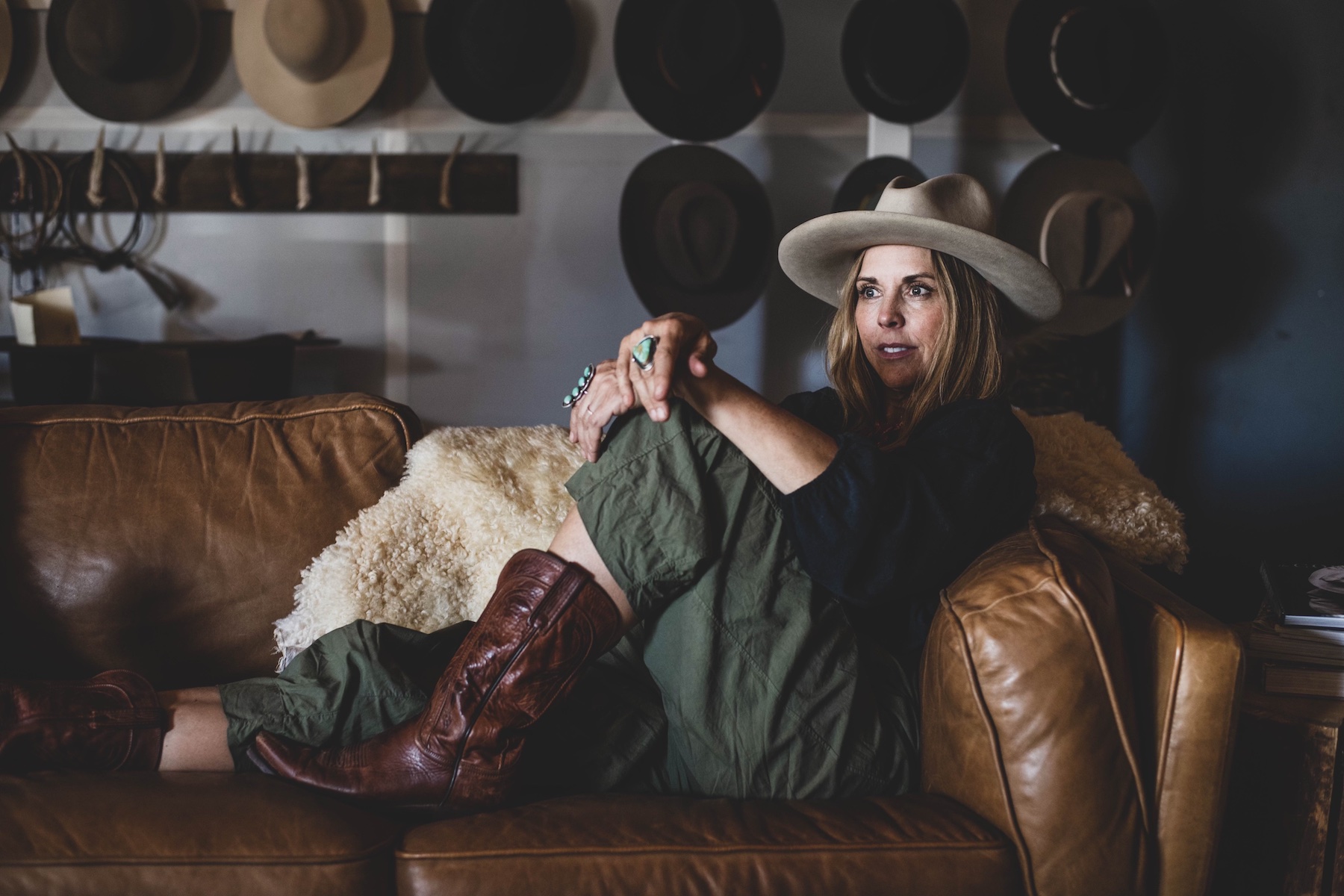
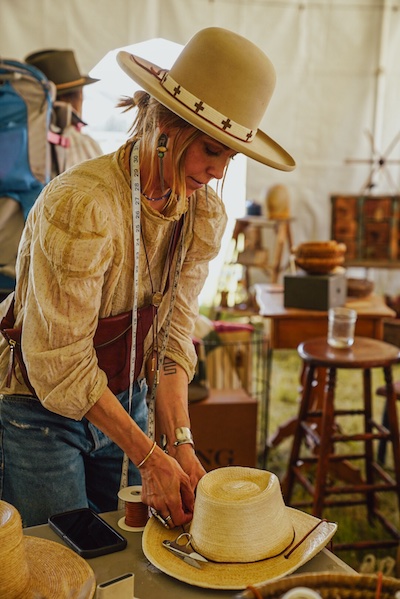
photo credit: Alexandra Rapadas Munger
Christy Sing Robertson is a hatmaker and the founder and owner of Sing Hat Company. Based in Jackson, Wyoming, Christy has evolved rather quickly from making a few hats for herself and several friends into becoming one of the most popular and sought-after hat makers in the West. Whether she’s hand-shaping palm leaf hats for hundreds of people at events such as last month’s Old Salt Festival or creating a custom felt hat for a 5th generation rancher or celebrity musician, Christy’s humility, curiosity, and commitment to the craft have allowed her to stand out in the crowded field of custom hatmakers.
Christy was born and raised in the Ozark Mountains of Arkansas, and she stayed there for the first half of her career, working as a high-performing salesperson in the insurance industry. But despite her success in the conventional and lucrative world of sales, she felt called to the West and decided to uproot her life and move to Jackson, Wyoming. Even though she moved to Jackson without knowing a soul, she managed to establish roots and build a fulfilling life centered around motherhood, hard work, and leading a thoughtful, intentional life. And along the way, just as she felt a calling to move to Wyoming, she felt called to make hats– so she went all-in. Today, Christy’s hats– and her long list of customers– demonstrate the amazing success she’s achieved in a relatively short amount of time.
I’ve been following Christy’s work for many years now, so I was thrilled to finally have a chance to chat with her on the podcast. Her story is amazingly inspiring and speaks to the importance of grit, risk-taking, working hard, humility, and trusting your gut. We covered a lot during our hour together, including: her upbringing in Arkansas and her success in the insurance business; the spiritual event that led her to move to Wyoming; how motherhood changed her; the focus and hustle required to make ends meet as a single mother; hunting big game for food; balancing the artistic side of hatmaking with the all-important need to earn a living; the increasing wealth inequality in Jackson; the importance of friendships with other artisans and makers; why imposter syndrome can be a good thing; techniques for keeping an even keel; favorite books; and much more.
If you haven’t checked out Christy’s website or followed her on social media, I recommend that you do– there are links in the episode notes to all of that and everything else we discussed. But in the meantime, I know you’ll enjoy this inspiring and motivational conversation with Christy Sing Robertson.
Photos courtesy of Sing Hat Company, header photo by Jamie Johnson.
LISTEN & DOWNLOAD:
Apple Podcasts
Spotify
Google Podcasts
… or wherever you get your podcasts!
—
RESOURCES:
Topics Discussed:
- 4:30 – Christy’s childhood
- 9:00 – Christy’s life post high school
- 10:45 – When making things clothes came into Christy’s life
- 12:00 – How Christy came to the Rocky Mountains, and how it changed her
- 23:00 – What Christy’s work and life was like after moving to Wyoming
- 25:15 – When hatmaking entered Christy’s life
- 27:30 – How Christy’s life changed after she had kids
- 32:00 – How Christy became self-sufficient in hunting
- 35:30 – Back to hats
- 39:00 – Whether or not Christy ever reconsidered her decision to make hats
- 40:55 – When Christy felt she was good at making hats
- 42:45 – How relationship building impacted Christy’s business
- 44:15 – How it went when Christy went full into making hats for a living
- 46:45 – How Christy manages the prices of Jackson, WY
- 50:15 – How Christy keeps an even keel
- 51:30 – How a community of makers has impacted Christy’s journey and career
- 55:15 – Reflecting on how Christy got where she is in her craft and career
- 58:45 – Christy’s advice for aspiring makers
- 1:01:15 – Christy’s vision for Sing Hats
- 1:05:00 – Christy’s book recommendations
- 1:07:00 – Christy’s parting words of wisdom
Information Referenced:
- Christy Sing
- Sing Hat Company (Instagram)
- Old Salt Festival
- Russellville, AR
- Ozark Mountains
- Mount Magazine, AR
- Jackson, WY
- Lost Creek Ranch
- Virginia Beach, VA
- Alpine, WY
- Idaho Falls, ID
- Adam Gall
- Billionaire Wilderness by Justin Farrell
- Heather Hansman
- Powder Days by Heather Hansman
- Pema Chödrön
- Jillian Lukiwski
- Noisy Plume
- Kate Mannix
- Think Again by Adam Grant
- Kathy Sever
- Dare to Lead by Brené Brown
- The War of Art by Steven Pressfield
- Atomic Habits by James Clear
- Chop Wood, Carry Water by Joshua Medcalf
- Wintering by Katherine May
Enjoy this episode? Then you might like these too:
- Jessica Ilalaole – Creating Home in the High Desert
- Cate Havstad-Casad, Part 2 – Building Businesses for the Greater Good
- Jessica Lewis – Doing More With Less
- Morgan Irons – Finding Her Muse
- Anna Brones – Committed to Creativity
- Iris Gardner – Living with Intention
- Nicole Morgenthau – Curiosity & Creativity
- Riddy Arman – Artistic Authenticity
- Kathie Sever – Chainstitching, Craftsmanship, and Cosmic Western Wear
- Jillian Lukiwski – Art and Adventure in the American West
- Live in Bozeman!
Visit the podcast page for a full, searchable list of episodes
